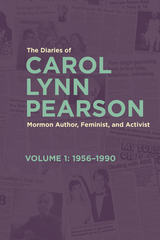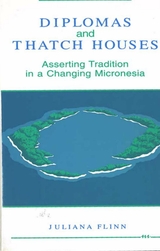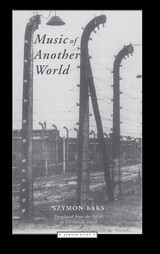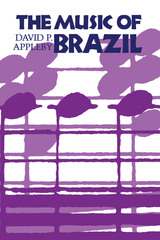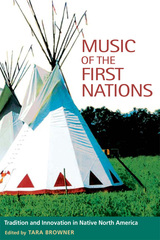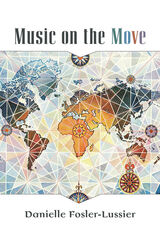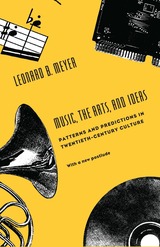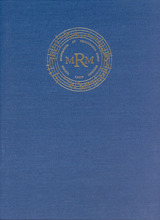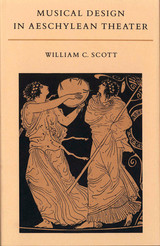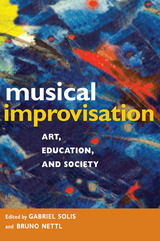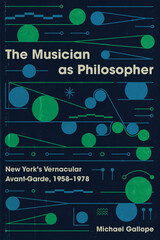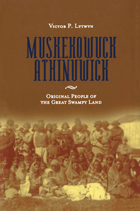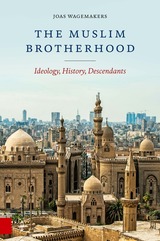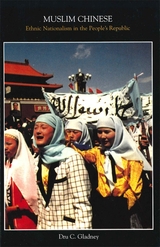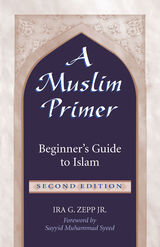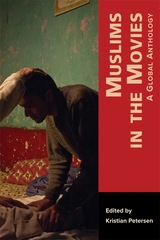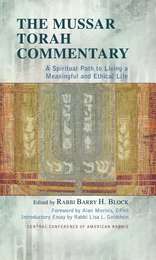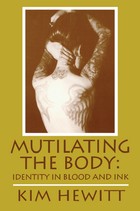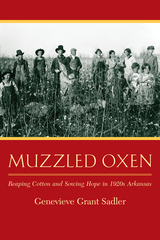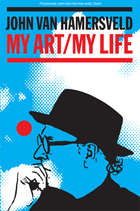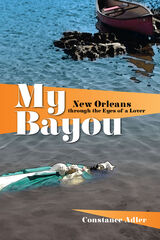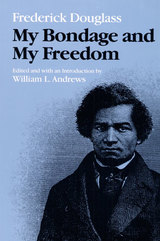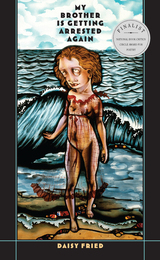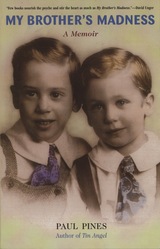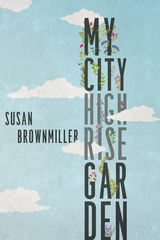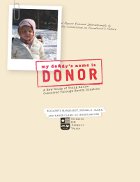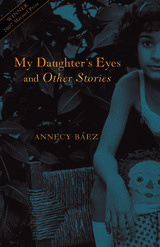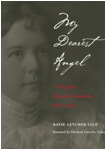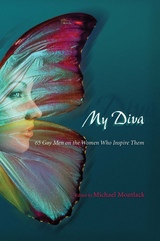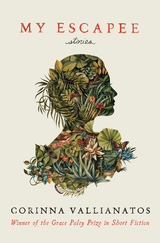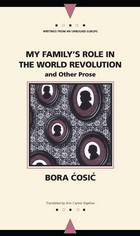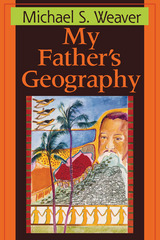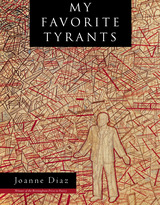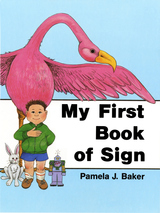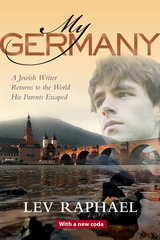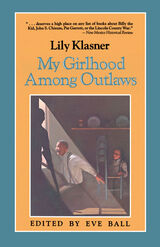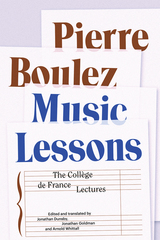 Music Lessons: The Collège de France Lectures
Pierre Boulez
University of Chicago Press, 2018 Now in paperback to celebrate the centenary of Pierre Boulez's birth in 2025. A groundbreaking group of writings by French composer Pierre Boulez, his yearly lectures prepared for the Collège de France.
Music Lessons marks the first publication in English of Pierre Boulez’s Collège de France lectures, written while he held the chair of Invention, Technique and Language in Music at the Collège between 1976 and 1995. Representing Boulez’s most significant writings from the period, the lectures offer a sustained intellectual engagement with one of the dominant figures of twentieth-century music, a consummate composer-conductor who remained central to the conversation around contemporary music until his death in 2016. Boulez explores, among other topics, the process through which a musical idea is realized in a full-fledged composition, the complementary roles of craft and inspiration and the degree to which the memory of other musical works can influence and change the act of creation. Boulez also gives a penetrating account of problems in classical music that are still present today, such as the conservatism of a musical community fixated on the repertory of the past. Woven into the discussion are stories of his own compositions and those of fellow composers whose work he engaged with in his many roles as teacher, thinker, and conductor: from Stravinsky to Stockhausen and Varèse, from Bartók to Berg, Debussy to Mahler and Wagner, and all the way back to his beloved J. S. Bach.
Including a foreword by semiologist Jean-Jacques Nattiez, who was for years close to the composer, this edition is also enriched by an illuminating preface by Jonathan Goldman. With an authoritative translation retaining Boulez’s fierce convictions, cutting opinions and signature wit, Music Lessons is an essential and entertaining volume.
Music Making and Civic Imagination: A Holistic Philosophy
Dave Camlin
Intellect Books, 2025 An argument for the ethical applications and uses of music.
Music Making and Civic Imagination makes a powerful case for the potential of music to aid in human flourishing. Dave Camlin, a musician and educator, lays out a holistic philosophy of music, acknowledging the complex web of meaning that spreads across its many complementary dimensions. As a performance of ethical human values of love, reciprocity, and justice, the making of music, Camlin shows, can help facilitate ethical human connection and be a resource for both imagining and inhabiting the kind of world we might wish to live in.
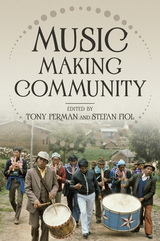 Music Making Community
Edited by Tony Perman and Stefan Fiol
University of Illinois Press, 2024 Making music offers enormous possibilities--and faces significant limitations--in its power to generate belonging and advance social justice. Tony Perman and Stefan Fiol edit essays focused on the forms of interplay between music-making and community-making as mutually creative processes. Contributors in the first section look at cases where music arrived in settings with little or no sense of community and formed social bonds that lasted beyond its departure. In the sections that follow, the essayists turn to stable communities that used musical forms to address social needs and both forged new social groups and, in some cases, splintered established communities. By centering the value of difference in productive feedback dynamics of music and community while asserting the need for mutual moral indebtedness, they foreground music’s potential to transform community for the better. Contributors: Stephen Blum, Joanna Bosse, Sylvia Bruinders, Donna A. Buchanan, Rick Deja, Veit Erlmann, Stefan Fiol, Eduardo Herrera, David A. McDonald, Tony Perman, Thomas Solomon, and Ioannis Tsekouras
 Music Master of the Middle West: The Story of F. Melius Christiansen and the St. Olaf Choir
Leola Bergmann
University of Minnesota Press, 1944 Music Master of the Middle West was first published in 1944. Minnesota Archive Editions uses digital technology to make long-unavailable books once again accessible, and are published unaltered from the original University of Minnesota Press editions.Probably only in the fields of sports and music could fifty college undergraduates draw 5000 spectators. The far-famed St. Olaf Choir can and does; yearly it amazes concert-goers from New York to San Francisco by its seemingly impossible perfection.For the thousands who already know the choir and its director, for those interested in music and its development, this book has been written. Here are the stories of F. Melius Christiansen, his choir, and the setting of Norwegian-American Lutheranism out of which he grew.Christiansen brought to this country a rich treasure of Norwegian folk music. Years of study in Minneapolis and Europe, of directing band and choir groups in midwestern towns, prepared hum for the work that was to bring him fame.“The story of Christiansen’s contribution to American music, his recognized influence on choral singing from coast to coast, is the story of an Old World heritage shaped and enlarged by the free, wide ways and the deep soul-hunger of the New. ‘Norway gave me much,’ says Christiansen, ‘but America has taught me how to use it.’”Mrs. Bergmann’s account of the choir, its personnel, training, and experience, is full of lively anecdotes as well as technical details. Her own four years as a member of the group, her behind-the-scenes knowledge enable her to convey the spirit of the singers, to discuss frankly both strength and weakness. But always she insists that success “lies not in the superior quality of the voices that make up the choirs, since Christiansen chooses largely the average, untrained voice, but in the nature of the director.”Thus it is primarily F. Melius Christiansen’s story, concerned with his techniques and methods and, above all, with the vigorous personality which makes him remembered by all who know him.
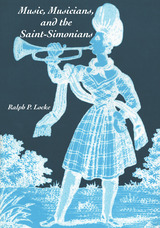 Music, Musicians, and the Saint-Simonians
Ralph P. Locke
University of Chicago Press, 1986 The Saint-Simonians, whose movement flourished in France between 1825 and 1835, are widely recognized for their contributions to history and social thought. Until now, however, no full account has been made of the central role of the arts in their program. In this skillful interdisciplinary study, Ralph P. Locke describes and documents the Saint-Simonians' view of music as an ideological tool and the influence of this view on musical figures of the day.
The disciples of Claude Henri de Rouvroy, comte de Saint-Simon, believed that increased industrial production would play a crucial role in improving the condition of the working masses and in shifting power from the aristocratic "drones" to the enterprising men of talent then rising in the French middle class. As a powerful means of winning support for their views, music became an integral part of the Saint-Simonians' writings and ceremonial activities.
Among the musicians Locke discusses are Berlioz, Liszt, and Mendelssohn, whose tangential association with the Saint-Simonians reveals new aspects of their social and aesthetic views. Other musicians became the Saint-Simonians' faithful followers, among them Jules Vinçard, Dominique Tajan-Rogé, and particularly Félicien David, the movement's principal composer. Many of these composers' works, reconstructed by Locke from authentic sources, are printed here, including the "Premier Chant des industriels," written at Saint-Simon's request by Rouget de Lisle, composer of the "Marseillaise."
Music of Another World
Szymon Laks
Northwestern University Press, 2000 Compassionate yet detached, ironic yet pitilessly honest, Szymon Laks, the kapellmeister of the Auschwitz orchestra, presents a disturbing description of a phenomenon seldom mentioned in the literature of the Holocaust: the presence of music among the crematoria. His story is a testament to the human spirit and to music itself, the beauty of which Laks and others honored even as the lives of so many were destroyed.
The Music of Antonio Carlos Jobim
Peter Freeman
Intellect Books, 2018 Antônio Carlos Jobim has been called the greatest of all contemporary Brazilian songwriters. He wrote both popular and serious music and was a gifted piano, guitar, and flute player. One of the key figures in the creation of the bossa nova style, Jobim’s music made a lasting impression worldwide, and many of his songs are now standards of the popular music repertoire.
In The Music of Antônio Carlos Jobim, one of the first extensive musicological analyses of the Brazilian composer, Peter Freeman examines the music, philosophy, and circumstances surrounding the creation of Jobim’s popular songs, instrumental compositions, and symphonic works. Freeman attempts to elucidate not only the many musical influences that formed Jobim’s musical output, but also the stylistic peculiarities that were as much the product of a gifted composer as the rich musical environment and heritage that surrounded him.
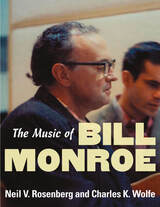 The Music of Bill Monroe
Neil V. Rosenberg and Charles K. Wolfe
University of Illinois Press, 2006 Spanning over 1,000 separate performances, The Music of Bill Monroe presents a complete chronological list of all of Bill Monroe’s commercially released sound and visual recordings. Each chapter begins with a narrative describing Monroe’s life and career at that point, bringing in producers, sidemen, and others as they become part of the story. The narratives read like a “who’s who” of bluegrass, connecting Monroe to the music’s larger history and containing many fascinating stories. The second part of each chapter presents the discography. Information here includes the session’s place, date, time, and producer; master/matrix numbers, song/tune titles, composer credits, personnel, instruments, and vocals; and catalog/release numbers and reissue data. The only complete bio-discography of this American musical icon, The Music of Bill Monroe is the starting point for any study of Monroe’s contributions as a composer, interpreter, and performer.
The Music of Brazil
By David P. Appleby
University of Texas Press, 1983 Here is the most comprehensive history of Brazilian music available in English. Concise yet remarkably detailed, it provides professional musicologists and music lovers alike with a clear outline of the major trends, important composers, and currents of thought that have shaped the folk, popular, and art music that are an important part of Brazil's unique cultural heritage. The Music of Brazil contains over seventy musical examples representing musical idiom and form throughout recent history. A useful glossary introduces the reader to the key terms of Brazilian music, from agogô—a percussion instrument composed of two bells—to xocalho—a wooden or metal rattler.
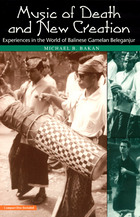 Music of Death and New Creation: Experiences in the World of Balinese Gamelan Beleganjur
Michael B. Bakan
University of Chicago Press, 1999 For centuries the gamelan beleganjur percussion orchestra has been an indispensable part of political, social, and spiritual life on the island of Bali. Traditionally associated with warfare and rituals for the dead, the music has recently given rise to an exciting new musical style featured in contests that are attended by thousands. Ethnomusicologist Michael Bakan draws us into these intensely competitive events, in which political corruption, conflicting notions of identity, and irrepressible creativity rupture the smooth surface of cultural order.
Building from his own experiences as a beleganjur drummer, Bakan also takes us inside a distant musical world and into the lives of musicians connecting across vast cultural divides. Rich with musical examples, photographs, and an accompanying compact disc, Music of Death and New Creation is an unprecedented exploration of how music embodies and shapes life in contemporary Indonesia and beyond.
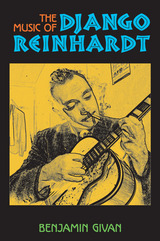 The Music of Django Reinhardt
Benjamin Givan
University of Michigan Press, 2009 "The Music of Django Reinhardt is an impressive contribution to the field of jazz studies. The book offers a penetrating view into the music of one of jazz's most intriguing early figures."
---Keith Waters, coauthor, Jazz: The First Hundred Years "An important addition to the literature on jazz, Givan's book provides many insights into Reinhardt’s solo building and unorthodox guitar playing; it is richly illustrated with many excellent musical transcriptions."
---Thomas Owens, author of Bebop: The Music and Its Players "Givan has painstakingly assembled an analytical interpretation of Reinhardt's music that is rigorous, compelling, and illuminating. This book makes a unique contribution to the field of jazz studies and guitar music in general."
---Brian Harker, author of Jazz: An American Journey When most people think of the great jazz guitarist Django Reinhardt, they conjure up the unusual details of his colorful life: a childhood spent in gypsy encampments outside of Paris; the tragic caravan fire when he was eighteen that rendered his left hand nearly unusable; and his survival during World War II, when gypsies were massacred by the hundreds of thousands. The amazing story of Reinhardt’s life even became the basis for Woody Allen's Sweet and Lowdown. Yet, it is the music of Django Reinhardt that made him one of the most original guitarists in history. In particular, his partnership with violinist Stéphane Grappelli, in the Quintette du Hot Club de France, brought him international renown and the attention of some of the most important American jazz musicians of the day, including Coleman Hawkins, Benny Carter, and Duke Ellington. The Music of Django Reinhardt explores the story of the man and his music as never before. Benjamin Givan shows how one of jazz's greatest guitarists created his unparalleled sound. This book is an analytical study of his music, including his process, his improvisational style, and his instrumental technique. The book features transcriptions from records of the 1920s through the 1950s and includes detailed discussion of selected performances from one of the most important guitarists in history. Benjamin Givan is Assistant Professor of Music at Skidmore College. His writings on jazz have appeared in scholarly publications such as Current Musicology and the Musical Quarterly, as well as the popular jazz magazine Down Beat. He received his Ph.D. in music theory from Yale University.
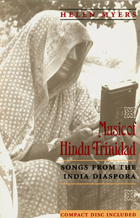 Music of Hindu Trinidad: Songs from the India Diaspora
Helen Myers
University of Chicago Press, 1998 Like many other small towns in Trinidad, Felicity is populated almost entirely by East Indians. In their Caribbean exile, the residents of Felicity have created and recreated the music of their Hindu ancestors. Music of Hindu Trinidad is a fascinating account of the history and cultural significance of Hindu music that explores its symbolic, aesthetic, and psychological aspects while asking the larger question of how this music has contributed to the formation of identity in the midst of their great diaspora.
Myers details the musical repertory of Felicity, which is based largely on north Indian genres including the traditional Bhojpuri folk songs and drumming styles brought by the first indentured laborers in 1845. In her engaging exploration of the fate of Indian classical music and new popular styles such as Hindi calypso, soca, and chutney, she even finds herself at the ancestral home of Trinidadian V. S. Naipaul in India. Copiously illustrated and accompanied by a compact disk, Music of Hindu Trinidad is a model ethnographic study.
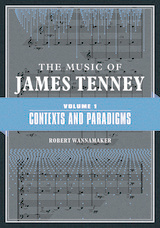 The Music of James Tenney: Volume 1: Contexts and Paradigms
Robert Wannamaker
University of Illinois Press, 2021 Parsing the works of the experimental music pioneer Robert Wannamaker's monumental two-volume study explores the influential music and ideas of American composer, theorist, writer, performer, and educator James Tenney. Delving into the whole of Tenney's far-ranging oeuvre, Wannamaker provides in-depth, aurally grounded analyses of works linked to the artist's revolutionary theories of musical form, timbre, and harmonic perception. Volume 1, Contexts and Paradigms, chronologically surveys Tenney's creative development and output. Wannamaker begins each section with biographical, aesthetic, and technical context that illuminates a distinct period in Tenney's career. From there, he analyzes a small number of pieces that illuminate the concerns, characteristics, and techniques that emerged in Tenney's music during that time. Wannamaker supplements the text with musical examples, graphs, and diagrams while also drawing on unpublished material and newly available primary sources to flesh out each work and the ideas that shaped it. A landmark in experimental music scholarship, The Music of James Tenney is a first-of-its-kind consideration of the experimental music titan and his work.
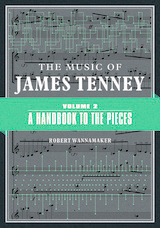 The Music of James Tenney: Volume 2: A Handbook to the Pieces
Robert Wannamaker
University of Illinois Press, 2021 A work-by-work guide to the composer's groundbreaking music Robert Wannamaker's monumental two-volume study explores the influential music and ideas of American composer, theorist, writer, performer, and educator James Tenney. Delving into the whole of Tenney's far-ranging oeuvre, Wannamaker offers close, aurally grounded analyses of works linked to the artist's revolutionary theories of musical form, timbre, and harmonic perception. Written as a reference work, Volume 2, A Handbook to the Pieces, presents detailed entries on Tenney's significant post-1959 experimental works (excepting pieces covered in volume 1). Wannamaker includes technical information, an analysis of intentions and goals, graphs and musical examples, historical and biographical context, and thoughts from Tenney and others on specific works. Throughout, he discusses the striking compositional ideas found in Tenney's music and, where appropriate, traces an idea's appearance from one piece to the next to reveal the evolution of the composer's art and thought. A landmark in experimental music scholarship, The Music of James Tenney is a first-of-its-kind consideration of the experimental music titan and his work.
The Music of Nobuo Uematsu in the Final Fantasy Series
Edited by Richard Anatone
Intellect Books, 2023 On the oeuvre of Nobuo Uematsu, the Beethoven of video game music.
Japanese musician and composer Nobuo Uematsu has built his career and reputation on his soundtracks to the enduring Final Fantasy video game series, which are notable for their remarkable cinematic feel. Today Uematsu is one of Japan’s most beloved living composers, credited with inspiring a new generation of classical music fans. This volume, the first book-length study of the music of Uematsu, takes a variety of different analytical approaches to his body of work. It offers readers interested in ludomusicology—the study of and research into video game music—a variety of ways with which to understand Uematsu’s compositional process and the role that video game music has in the overall gaming experience.
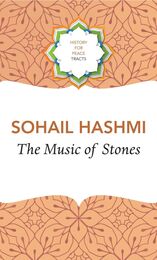 The Music of Stones
Sohail Hashmi
Seagull Books, 2025 An essay that deftly deconstructs the history of ‘Islamic architecture’, challenging colonial narratives and promoting an inclusive understanding of Islam.
In The Music of Stones, Sohail Hashmi delves into the intricate history and misconceptions surrounding Islamic architecture and culture. Challenging colonial and orientalist narratives, Hashmi reveals that iconic elements like domes and minarets were not originally part of early Islamic structures but later additions influenced by various cultures, primarily Persian and Turkish. Through engaging anecdotes and thought-provoking theories, Hashmi deconstructs the monolithic view of Islamic culture, emphasizing its rich and diverse heritage shaped by Sufi, Central Asian, and other regional influences. He highlights the importance of historical context and the dangers of oversimplifying complex cultural identities.
The Music of Stones invites readers to reconsider the architectural and cultural legacy of Islam, advocating for a more inclusive and evidence-based understanding that transcends reductive labels and celebrates the richness of its diverse traditions.
Music of the First Nations: Tradition and Innovation in Native North America
Edited by Tara Browner
University of Illinois Press, 2009 This unique anthology presents a wide variety of approaches to an ethnomusicology of Inuit and Native North American musical expression. Contributors include Native and non-Native scholars who provide erudite and illuminating perspectives on aboriginal culture, incorporating both traditional practices and contemporary musical influences. Gathering scholarship on a realm of intense interest but little previous publication, this collection promises to revitalize the study of Native music in North America, an area of ethnomusicology that stands to benefit greatly from these scholars' cooperative, community-oriented methods. Contributors are T. Christopher Aplin, Tara Browner, Paula Conlon, David E. Draper, Elaine Keillor, Lucy Lafferty, Franziska von Rosen, David Samuels, Laurel Sercombe, and Judith Vander.
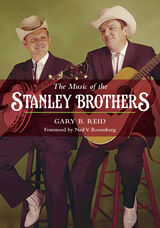 The Music of the Stanley Brothers
Gary B. Reid
University of Illinois Press, 2015 The Music of the Stanley Brothers brings together forty years of passionate research by scholar and record label owner Gary B. Reid. A leading authority on Carter and Ralph Stanley, Reid augments his own vast knowledge of their music with interviews, documents ranging from books to folios sold by the brothers at shows, and the words of Ralph Stanley, former band members, guest musicians, session producers, songwriters, and bluegrass experts. The result is a reference that illuminates the Stanleys' art and history. It is all here: dates and locations; the roster of players on well-known and obscure sessions alike; master/matrix and catalog/release numbers, with reissue information; a full discography sorting out the Stanleys' complex recording history; the stories behind the music; and exquisitely informed biographical notes that place events in the context of the brothers' careers and lives. Monumental and indispensable, The Music of the Stanley Brothers provides fans and scholars alike with a guide for immersion in the long career and breathtaking repertoire of two legendary American musicians.
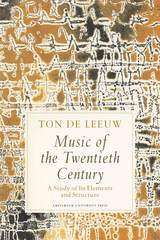 Music of the Twentieth Century
Ton de Leeuw
Amsterdam University Press, 2005 Ton de Leeuw was a truly groundbreaking composer. As evidenced by his pioneering study of compositional methods that melded Eastern traditional music with Western musical theory, he had a profound understanding of the complex and often divisive history of twentieth-century music. Now his renowned chronicle Music of the Twentieth Century is offered here in a newly revised English-language edition.
Music of the Twentieth Century goes beyond a historical survey with its lucid and impassioned discussion of the elements, structures, compositional principles, and terminologies of twentieth-century music. De Leeuw draws on his experience as a composer, teacher, and music scholar of non-European music traditions, including Indian, Indonesian, and Japanese music, to examine how musical innovations that developed during the twentieth century transformed musical theory, composition, and scholarly thought around the globe.
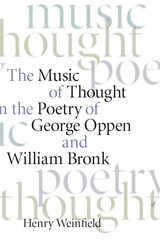 The Music of Thought in the Poetry of George Oppen and William Bronk
Henry Weinfield
University of Iowa Press, 2009 George Oppen (1908–1984), born into a prosperous German Jewish family, began his career as a protégé of Ezra Pound and a member of the Objectivist circle of poets; he eventually broke with Pound and became a member of the Communist party before returning to poetry more than twenty-five years later. William Bronk (1918–1999), by contrast, a descendant of the first European families in New York, was influenced by the works of Shakespeare, the King James Bible, and the work of the New England writers of the American Renaissance. Despite differences in background and orientation, the two men formed a deep friendship and shared a similar existential outlook. As Henry Weinfield demonstrates in this searching and original study, Oppen and Bronk are extraordinary thinkers in poetry who struggled with central questions of meaning and value and whose thought acquires the resonance of music in their work. These major writers created poetry of enduring value that has exerted an increasing influence on younger generations of poets.
From his careful readings of Oppen’s and Bronk’s poetry to his fascinating examination of the letters they exchanged, Weinfield provides important aesthetic, epistemological, and historical insights into their poetry and poetic careers. In bringing together for the first time the work of two of the most important poets of the postwar generation, The Music of Thought not only illuminates their poetry but also raises important questions about American literary history and the categories in terms of which it has generally been interpreted.
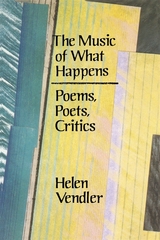 The Music of What Happens: Poems, Poets, Critics
Helen Vendler
Harvard University Press, 1988 “Essential Vendler.”
—Chicago Tribune
A leading partisan of close reading defends aesthetics as the beating heart of criticism.
The late 1970s and early 1980s witnessed a sea change in literary criticism. As deconstruction, Marxism, feminism, and other currents dethroned the New Criticism in the American academy, those who held fast to formalist approaches appeared increasingly outmoded. Critics, as Helen Vendler put it, had been “put on notice” by literary theory.
Fortunately, Vendler was up to the challenge. The essays and reviews collected in The Music of What Happens make a defiantly unfashionable case for her stalwart aestheticism. According to Vendler, the critic’s job is neither to interpret the poem, uncovering the secret meaning lurking beneath its surfaces, nor to unmask its ideological underpinnings, but to describe how the interplay of form and signification creates a unique and cohesive aesthetic experience. Good criticism illuminates the qualities that make each poem unlike any other: it explains not only what happens in the text but also, as Seamus Heaney once wrote, “the music of what happens.”
Including magisterial assessments of her fellow critics and literary theorists, from Roland Barthes and Geoffrey Hartman to Harold Bloom and Lionel Trilling, as well as characteristically acute appraisals of a wide range of contemporary and canonical poets, The Music of What Happens shows the rich dividends that accrue when we treat literature as a fine art like painting or sculpture rather than a discourse to be decoded and evaluated in social and historical terms. Above all, we become more attuned to the pleasures of reading—and even the pleasures of criticism itself.
 The Music of What Happens: Poems, Poets, Critics
Helen Vendler
Harvard University Press “Essential Vendler.”
—Chicago Tribune
A leading partisan of close reading defends aesthetics as the beating heart of criticism.
The late 1970s and early 1980s witnessed a sea change in literary criticism. As deconstruction, Marxism, feminism, and other currents dethroned the New Criticism in the American academy, those who held fast to formalist approaches appeared increasingly outmoded. Critics, as Helen Vendler put it, had been “put on notice” by literary theory.
Fortunately, Vendler was up to the challenge. The essays and reviews collected in The Music of What Happens make a defiantly unfashionable case for her stalwart aestheticism. According to Vendler, the critic’s job is neither to interpret the poem, uncovering the secret meaning lurking beneath its surfaces, nor to unmask its ideological underpinnings, but to describe how the interplay of form and signification creates a unique and cohesive aesthetic experience. Good criticism illuminates the qualities that make each poem unlike any other: it explains not only what happens in the text but also, as Seamus Heaney once wrote, “the music of what happens.”
Including magisterial assessments of her fellow critics and literary theorists, from Roland Barthes and Geoffrey Hartman to Harold Bloom and Lionel Trilling, as well as characteristically acute appraisals of a wide range of contemporary and canonical poets, The Music of What Happens shows the rich dividends that accrue when we treat literature as a fine art like painting or sculpture rather than a discourse to be decoded and evaluated in social and historical terms. Above all, we become more attuned to the pleasures of reading—and even the pleasures of criticism itself.
Music on the Move
Danielle Fosler-Lussier
University of Michigan Press, 2020 A dynamic multimedia introduction to the global connections among peoples and their music
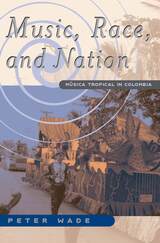 Music, Race, and Nation: Musica Tropical in Colombia
Peter Wade
University of Chicago Press, 2000 Long a favorite on dance floors in Latin America, the porro, cumbia, and vallenato styles that make up Colombia's música tropical are now enjoying international success. How did this music—which has its roots in a black, marginal region of the country—manage, from the 1940s onward, to become so popular in a nation that had prided itself on its white heritage? Peter Wade explores the history of música tropical, analyzing its rise in the context of the development of the broadcast media, rapid urbanization, and regional struggles for power. Using archival sources and oral histories, Wade shows how big band renditions of cumbia and porro in the 1940s and 1950s suggested both old traditions and new liberties, especially for women, speaking to a deeply rooted image of black music as sensuous. Recently, nostalgic, "whitened" versions of música tropical have gained popularity as part of government-sponsored multiculturalism.
Wade's fresh look at the way music transforms and is transformed by ideologies of race, nation, sexuality, tradition, and modernity is the first book-length study of Colombian popular music.
 Music, Research, and Activism: Prospects and Projects in Northern Europe
Edited by Kim Ramstedt, Susanna Välimäki, Sini Mononen, and Kaj Ahlsved
Intellect Books, 2025 A radical exploration of how music educators and artists are using research as a tool for justice in an era of crisis and transformation.
Can music research drive social and ecological change? Music, Research, and Activism: Prospects and Projects in Northern Europe argues that it can—and must. This bold collection studies the emerging activist turn in music studies, where researchers and artists engage directly in public debates and cultural movements.
By questioning systemic inequalities in the music industry and exploring the role of music education in an era of climate crisis, the contributors to this volume reflect on how their work can serve eco-social justice. Drawing on their diverse experiences as educators, critics, DJs, producers, and community organizers, they offer a compelling vision of music research as an agent of transformation.
Rooted in the independent research network Suoni, this volume speaks to music scholars and students eager to rethink the role of music in shaping a more equitable world. Engaging and accessible, it challenges us to ask: What does social responsibility look like in music research today?
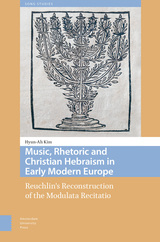 Music, Rhetoric and Christian Hebraism in Early Modern Europe: Reuchlin’s Reconstruction of the Modulata Recitatio
Hyun-Ah Kim
Amsterdam University Press, 2025 This book presents the first in-depth exploration of the relationship between music, rhetoric and Christian Hebraism, by re-appraising the significance of the “first German humanist” Johannes Reuchlin’s study of Kabbalah and cantillation in the light of Renaissance rhetoric.
Few studies have investigated how Renaissance humanists learned Hebrew language for the delivery (pronuntiatio) of the Hebrew Bible as an aural-oral tradition. Hyun-Ah Kim examines the way in which ‘grammarian-philosopher’ Reuchlin reconstructed the modulata recitatio of the Hebrew Bible and its underlying intellectual foundation. Consequently, Kim demonstrates the hitherto neglected Hebraic aspect of Renaissance rhetoric and its mystical implications that played a vital role in shaping a new theoretical framework for the ‘art of accented singing,’ an art which has changed European musical culture ever since. Music, Rhetoric and Christian Hebraism in Early Modern Europe elucidates why this nexus is essential for understanding the integral relationship between music, language and theological philosophy.
Music Scenes: Local, Translocal, and Virtual
Andy Bennett
Vanderbilt University Press, 2004 These fourteen original essays examine the fascinating world of music scenes, those largely inconspicuous sites where clusters of musicians, producers, and fans explore their common musical tastes and distinctive lifestyle choices. Although most music scenes come and go with hardly a trace, they nevertheless give immense satisfaction to their participants, and a few--New York bop jazz, Merseybeat, Memphis rockabilly, London punk, Bronx hip-hop--achieve fame and spur musical innovations. To date, serious study of the scenes phenomenon has focused mainly on specific music scenes while paying less attention to recurrent dynamics of scene life, such as how individuals construct and negotiate scenes to the various activities. This volume remedies that neglect.
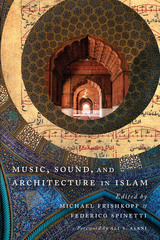 Music, Sound, and Architecture in Islam
Edited by Michael Frishkopf and Federico Spinetti
University of Texas Press, 2018 Tracing the connections between music making and built space in both historical and contemporary times, Music, Sound, and Architecture in Islam brings together domains of intellectual reflection that have rarely been in dialogue to promote a greater understanding of the centrality of sound production in constructed environments in Muslim religious and cultural expression. Representing the fields of ethnomusicology, anthropology, art history, architecture, history of architecture, religious studies, and Islamic studies, the volume’s contributors consider sonic performances ranging from poetry recitation to art, folk, popular, and ritual musics—as well as religious expressions that are not usually labeled as “music” from an Islamic perspective—in relation to monumental, vernacular, ephemeral, and landscape architectures; interior design; decoration and furniture; urban planning; and geography. Underscoring the intimate relationship between traditional Muslim sonic performances, such as the recitation of the Qur’an or devotional songs, and conventional Muslim architectural spaces, from mosques and Sufi shrines to historic aristocratic villas, gardens, and gymnasiums, the book reveals Islam as an ideal site for investigating the relationship between sound and architecture, which in turn proves to be an innovative and significant angle from which to explore Muslim cultures.
 Music, Sound, and Technology in America: A Documentary History of Early Phonograph, Cinema, and Radio
Timothy D. Taylor, Mark Katz, and Tony Grajeda, eds.
Duke University Press, 2012 This unique anthology assembles primary documents chronicling the development of the phonograph, film sound, and the radio. These three sound technologies shaped Americans' relation to music from the late nineteenth century until the end of the Second World War, by which time the technologies were thoroughly integrated into everyday life. There are more than 120 selections between the collection's first piece, an article on the phonograph written by Thomas Edison in 1878, and its last, a column advising listeners "desirous of gaining more from music as presented by the radio." Among the selections are articles from popular and trade publications, advertisements, fan letters, corporate records, fiction, and sheet music. Taken together, the selections capture how the new sound technologies were shaped by developments such as urbanization, the increasing value placed on leisure time, and the rise of the advertising industry. Most importantly, they depict the ways that the new sound technologies were received by real people in particular places and moments in time.
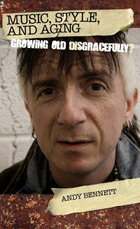 Music, Style, and Aging: Growing Old Disgracefully?
Andy Bennett
Temple University Press, 2013 The image of the aging rock-and-roller is not just Paul McCartney and Mick Jagger on stage in their sixties. In his timely book Music, Style, and Aging, cultural sociologist Andy Bennett explains how people move on from youth and effectively grow older with popular music.
For many aging followers of rock, punk, and other contemporary popular genres, music is ingrained in their identities. Its meaning is highly personal and intertwined with the individual's biographical development. Bennett studies these fans and how they have changed over time--through fashions, hairstyles, body modification, career paths, political orientations, and perceptions of and by the next generation.
The significance of popular music for these fans is no longer tied exclusively to their youth. Bennett illustrates how the music? that "mattered" to most people in their youth continues to play an important role in their adult lives--a role that goes well beyond nostalgia.
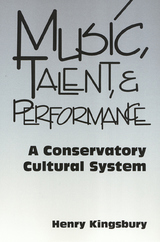 Music Talent & Performance: Conservatory Cultural System
Henry Kingsbury
Temple University Press, 2001 A provocative, perceptive study of the cultural dynamics of classical music in American society, Music, Talent, and Performance describes music as a metaphor of the society in which it takes place.
Author Henry Kingbury, a conservatory-trained pianist and music educator turned anthropologist forgoes the traditional ethnomusicologist approach of looking at a non-Western musical culture to focus on the "field" of an American conservatory. The result is a penetrating look at the distinction between teaching music and the nurturing of musicality. Kingsbury offers an innovative anthropological analysis of the western notion of "talent" and its cultural character, noting that many non-western societies have no such concept. Furthermore, he examines various contexts in which music is produced, experienced, and evaluated. His discussion includes the dynamics of orchestra rehearsals in the conservatory, "master class" lessons with a distinguished performer-pedagogue, the ritual characteristics of solo recitals, and an interpretive analysis of stage fright.
Ultimately, Kingsbury argues that music "is highly shifting and indeterminate in meaning," a concept that has important implications for all interpreters of culture and for the artists themselves.
Music, the Arts, and Ideas: Patterns and Predictions in Twentieth-Century Culture
Leonard B. Meyer
University of Chicago Press, 1994 Meyer makes a valuable statement on aesthetics, criteria for assessing great works of music, compositional practices and theories of the present day, and predictions of the future of Western culture. His postlude, written for the book's twenty-fifth anniversary, looks back at his thoughts on the direction of music in 1967.
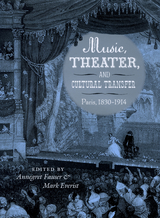 Music, Theater, and Cultural Transfer: Paris, 1830-1914
Edited by Annegret Fauser and Mark Everist
University of Chicago Press, 2009 Opera and musical theater dominated French culture in the 1800s, and the influential stage music that emerged from this period helped make Paris, as Walter Benjamin put it, the “capital of the nineteenth century.” The fullest account available of this artistic ferment and its international impact, Music, Theater, and Cultural Transfer explores the diverse institutions that shaped Parisian music and extended its influence across Europe, the Americas, and Australia. The contributors to this volume, who work in fields ranging from literature to theater to musicology, focus on the city’s musical theater scene as a whole rather than on individual theaters or repertories. Their broad range enables their collective examination of the ways in which all aspects of performance and reception were affected by the transfer of works, performers, and management models from one environment to another. By focusing on this interplay between institutions and individuals, the authors illuminate the tension between institutional conventions and artistic creation during the heady period when Parisian stage music reached its zenith.
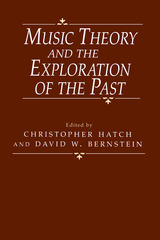 Music Theory and the Exploration of the Past
Edited by Christopher Hatch and David W. Bernstein
University of Chicago Press, 1993 In recent decades, increased specialization has sharply separated music theory from historical musicology. Music Theory and the Exploration of the Past brings together a group of essays—written by theorists and musicologists—that seek to bridge this gap. This collection shows that music theory can join forces with historical musicology to produce a more humanistic form of musical scholarship.
In nineteen essays dealing with musical theories from the twelfth to the twentieth century, two recurring themes emerge. One is the need to understand the historical circumstances of the writing and reception of theory, a humanistic approach that gives theory a place within social and intellectual history. The other is the advantages of applying contemporaneous theory to the music of a given period, thus linking theory to the history of musical styles and structures. The periods given principal attention in these essays are the Renaissance, the years around 1800, and the twentieth century.
Abundantly illustrated with musical examples, Music Theory and the Exploration of the Past offers models of new practical applications of theory to the analysis of music. At the same time, it raises the broader question of how historical knowledge can deepen the understanding of an art and of systematic writings about that art.
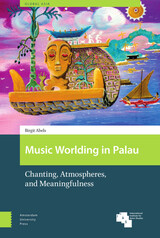 Music Worlding in Palau: Chanting, Atmospheres, and Meaningfulness
Birgit Abels
Amsterdam University Press, 2022 Music Worlding in Palau: Chanting, Atmospheres, and Meaningfulness is a detailed study of the performing arts in Palau, Micronesia as holistic techniques enabling the experiential corporeality of music’s meaningfulness – that distinctly musical way of making sense of the world with which the felt body immediately resonates but which, to a significant extent, escapes interpretive techniques. Drawing on long-term ethnographic research alongside Pacific Islander and neo-phenomenological conceptual frameworks, Music Worlding in Palau distinguishes between meaning(s) and meaningfulness in Palauan music-making. These are not binary phenomena, but deeply intertwined. However, unlike meaning(s), meaningfulness to a significant extent suspends language and is thus often prematurely considered ineffable. The book proposes a broader understanding of how the performing arts give rise to a sense of meaningfulness whose felt-bodily affectivity is pivotal to music-making and lived realities. Music Worlding in Palau thus seeks to draw the reader closer to the holistic complexity of music-making both in Palau and more generally.
Musica Duorum
Romano Eustachio
University of Chicago Press, 1975 The Musica duorum of the composer Eustachio Romano, also known as Eustachius de Macionibus, was issued in Rome in 1521. Eustachio, who was a nobleman as well as a composer, dedicated this volume to the future Pope Julius III, offering these small chamber works to refresh the prelate's spirits when he tired of weightier studies. These light, playful duos were collected in the first publication ever devoted entirely to music for instrumental ensemble.
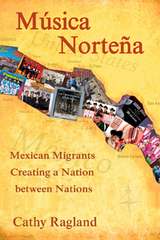 Musica Nortena: Mexican Americans Creating a Nation Between Nations
Cathy Ragland
Temple University Press, 2009 Música norteña, a musical genre with its roots in the folk ballad traditions of northern Mexico and the Texas-Mexican border region, has become a hugely popular musical style in the U.S., particularly among Mexican immigrants. Featuring evocative songs about undocumented border-crossers, drug traffickers, and the plight of immigrant workers, música norteña has become the music of a "nation between nations." Música Norteña is the first definitive history of this transnational music that has found enormous commercial success in norteamérica. Cathy Ragland, an ethnomusicologist and former music critic, serves up the fascinating fifty-year story of música norteña, enlivened by interviews with important musicians and her own first-hand observations of live musical performances. Beyond calling our attention to musical influences, ragland shows readers the social and economic forces at work behind the music. By comparing música norteña with other popular musical forms, including conjunto tejano, she helps us understand and appreciate the musical ties that bind the Mexican diaspora.
The Musical Comedy Films of Grigorii Aleksandrov: Laughing Matters
Rimgaila Salys
Intellect Books, 2009 Grigorii Aleksandrov’s musical comedy films, created with composer Isaak Dunaevskii, were the most popular Russian cinema of the 1930s and ’40s. Drawing on studio documents, press materials, and interviews with surviving film crew members, The Musical Comedy Films of Grigorii Aleksandrov presents the untold production history of the films. Salys explores how Aleksandrov’s cinema preserved the paradigms of the American musical, including its comedic tradition, using both to inscribe the foundation myths of the Stalin era in the national consciousness. As the first major study to situate these films in the cultural context of the era, this book will be essential to courses on Russian cinema and Soviet culture.
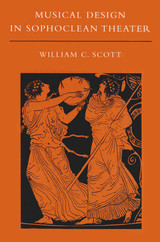 Musical Design in Sophoclean Theater
William C. Scott
Dartmouth College Press, 2000 William C. Scott extends concepts set forth in his Goodwin Award-winning Musical Design in Aeschylean Theater (1984) by examining scansion patterns in the odes of the seven surviving Sophoclean tragedies. Analyzing the play as performed-its full expression in words, music, and dance-Scott finds that Sophocles' metrical patterns are not a secondary detail of the plays but a central feature of their musical organization. Just as the playwright enhanced awareness of themes with a series of recurring and developing verbal images, he also designed the music to guide the audience's understanding of unfolding, often ambiguous events. The fabric of music and meaning is so tightly woven, Scott argues, that significant portions of the plays cannot be fully realized on stage unless the musical effects created by the poet are incorporated. While his work necessarily centers on the chorus, Scott carefully integrates that role into the meaning of the play as a whole, asserting that the chorus becomes a single persona, a character with partial knowledge, limited perspective, and inconsistent responses. The combination of words, meters, and forms provides a new perspective on each play.
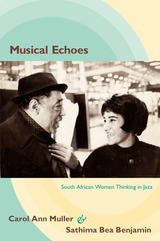 Musical Echoes: South African Women Thinking in Jazz
Carol Ann Muller and Sathima Bea Benjamin
Duke University Press, 2011 Musical Echoes tells the life story of the South African jazz vocalist Sathima Bea Benjamin. Born in Cape Town in the 1930s, Benjamin came to know American jazz and popular music through the radio, movies, records, and live stage and dance band performances. She was especially moved by the voice of Billie Holiday. In 1962 she and Dollar Brand (Abdullah Ibrahim) left South Africa together for Europe, where they met and recorded with Duke Ellington. Benjamin and Ibrahim spent their lives on the move between Europe, the United States, and South Africa until 1977, when they left Africa for New York City and declared their support for the African National Congress. In New York, Benjamin established her own record company and recorded her music independently from Ibrahim. Musical Echoes reflects twenty years of archival research and conversation between this extraordinary jazz singer and the South African musicologist Carol Ann Muller. The narrative of Benjamin’s life and times is interspersed with Muller’s reflections on the vocalist’s story and its implications for jazz history.
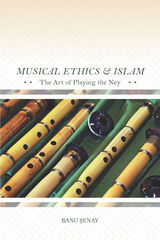 Musical Ethics and Islam: The Art of Playing the Ney
Banu Senay
University of Illinois Press, 2020 After the establishment of the Turkish Republic, Turkey's secularized society disdained the ney, the Sufi reed flute long associated with Islam. The instrument's remarkable revival in today's cities has inspired the creation of teaching and learning sites that range from private ney studios to cultural and religious associations and from university clubs to mosque organizations. Banu Şenay documents the years-long training required to become a neyzen—a player of the ney. The process holds a transformative power that invites students to create a new way of living that involves alternative relationships with the self and others, changing perceptions of the city, and a dedication to craftsmanship. Şenay visits reed harvesters and travels from studios to workshops to explore the practical processes of teaching and learning. She also becomes an apprentice ney-player herself, exploring the desire for spirituality that encourages apprentices and masters alike to pursue ney music and its scaffolding of Islamic ethics and belief.
Musical Improvisation: Art, Education, and Society
Edited by Gabriel Solis and Bruno Nettl
University of Illinois Press, 2008 "Cutting across traditional subject boundaries in music and cultural studies, this admirably comprehensive work adopts a welcome interdisciplinary ideal and makes a truly significant contribution to our knowledge of musical improvisation."--Robert Witmer, professor emeritus of music, York University Contributors are Stephen Blum, Patricia Shehan Campbell, Sabine M. Feisst, Lawrence Gushee, Robert S. Hatten, William Kinderman, Natalie Kononenko, Robert Levin, Charlotte Mattax Moersch, Ingrid Monson, John P. Murphy, Bruno Nettl, A. Jihad Racy, Anne K. Rasmussen, Stephen Slawek, Gabriel Solis, Nicholas Temperley, John Toenjes, and Thomas Turino.
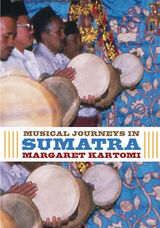 Musical Journeys in Sumatra
Margaret Kartomi
University of Illinois Press, 2012 Although Sumatra is the sixth largest island in the world and home to an estimated 44 million Indonesians, its musical arts and cultures have not been the subject of a book-length study until now. Documenting and explaining the ethnographic, cultural, and historical contexts of Sumatra's performing arts, Musical Journeys in Sumatra also traces the changes in their style, content, and reception from the early 1970s onward. Having dedicated almost forty years of scholarship to exploring the rich and varied music of Sumatran provinces, Margaret Kartomi provides a fascinating ethnographic record of vanishing musical genres, traditions, and practices that have become deeply compromised by the pressures of urbanization, rural poverty, and government policy. This deeply informed collection showcases the complex diversity of Indonesian music and includes field observations from six different provinces: Aceh, North Sumatra, Riau, West Sumatra, South Sumatra, and Bangka-Belitung. Featuring photographs and original drawings from Kartomi's field observations of instruments and performances, Musical Journeys in Sumatra provides a comprehensive musical introduction to this neglected, very large island, with its hundreds of ethno-linguistic-musical groups.
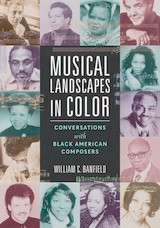 Musical Landscapes in Color: Conversations with Black American Composers
William C. Banfield
University of Illinois Press, 2023 Now available in paperback, William C. Banfield’s acclaimed collection of interviews delves into the lives and work of forty-one Black composers. Each of the profiled artists offers a candid self-portrait that explores areas from training and compositional techniques to working in a exclusive canon that has existed for a very long time. At the same time, Banfield draws on sociology, Western concepts of art and taste, and vernacular musical forms like blues and jazz to provide a frame for the artists’ achievements and help to illuminate the ongoing progress and struggles against industry barriers. Expanded illustrations and a new preface by the author provide invaluable added context, making this new edition an essential companion for anyone interested in Black composers or contemporary classical music. Composers featured: Michael Abels, H. Leslie Adams, Lettie Beckon Alston, Thomas J. Anderson, Dwight Andrews, Regina Harris Baiocchi, David Baker, William C. Banfield, Ysaye Maria Barnwell, Billy Childs, Noel DaCosta, Anthony Davis, George Duke, Leslie Dunner, Donal Fox, Adolphus Hailstork, Jester Hairston, Herbie Hancock, Jonathan Holland, Anthony Kelley, Wendell Logan, Bobby McFerrin, Dorothy Rudd Moore, Jeffrey Mumford, Gary Powell Nash, Stephen Newby, Coleridge-Taylor Perkinson, Michael Powell, Patrice Rushen, George Russell, Kevin Scott, Evelyn Simpson-Curenton, Hale Smith, Billy Taylor, Frederick C. Tillis, George Walker, James Kimo Williams, Julius Williams, Tony Williams, Olly Wilson, and Michael Woods
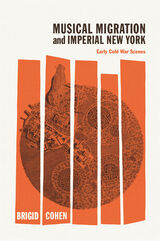 Musical Migration and Imperial New York: Early Cold War Scenes
Brigid Cohen
University of Chicago Press, 2022 Through archival work and storytelling, Musical Migration and Imperial New York revises many inherited narratives about experimental music and art in postwar New York.
From the urban street level of music clubs and arts institutions to the world-making routes of global migration and exchange, this book redraws the map of experimental art to reveal the imperial dynamics and citizenship struggles that continue to shape music in the United States.
Beginning with the material conditions of power that structured the cityscape of New York in the early Cold War years, Brigid Cohen looks at a wide range of artistic practices (concert music, electronic music, jazz, performance art) and actors (Edgard Varèse, Charles Mingus, Yoko Ono, and Fluxus founder George Maciunas) as they experimented with new modes of creativity. Cohen links them with other migrant creators vital to the city’s postwar culture boom, creators whose stories have seldom been told (Halim El-Dabh, Michiko Toyama, Vladimir Ussachevsky). She also gives sustained and serious treatment to the work of Yoko Ono, something long overdue in music scholarship. Musical Migration and Imperial New York is indispensable reading, offering a new understanding of global avant-gardes and American experimental music as well as the contrasting feelings of belonging and exclusion on which they were built.
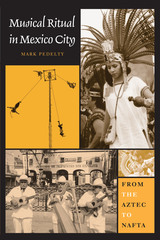 Musical Ritual in Mexico City: From the Aztec to NAFTA
By Mark Pedelty
University of Texas Press, 2004 On the Zócalo, the main square of Mexico City, Mexico's entire musical history is performed every day. "Mexica" percussionists drum and dance to the music of Aztec rituals on the open plaza. Inside the Metropolitan Cathedral, choristers sing colonial villancicos. Outside the National Palace, the Mexican army marching band plays the "Himno Nacional," a vestige of the nineteenth century. And all around the square, people listen to the contemporary sounds of pop, rock, and música grupera. In all, some seven centuries of music maintain a living presence in the modern city. This book offers an up-to-date, comprehensive history and ethnography of musical rituals in the world's largest city. Mark Pedelty details the dominant musical rites of the Aztec, colonial, national, revolutionary, modern, and contemporary eras, analyzing the role that musical ritual played in governance, resistance, and social change. His approach is twofold. Historical chapters describe the rituals and their functions, while ethnographic chapters explore how these musical forms continue to resonate in contemporary Mexican society. As a whole, the book provides a living record of cultural continuity, change, and vitality.
 Musical Vitalities: Ventures in a Biotic Aesthetics of Music
Holly Watkins
University of Chicago Press, 2018 Does it make sense to refer to bird song—a complex vocalization, full of repetitive and transformative patterns that are carefully calculated to woo a mate—as art? What about a pack of wolves howling in unison or the cacophony made by an entire rain forest?
Redefining music as “the art of possibly animate things,” Musical Vitalities charts a new path for music studies that blends musicological methods with perspectives drawn from the life sciences. In opposition to humanist approaches that insist on a separation between culture and nature—approaches that appear increasingly untenable in an era defined by human-generated climate change—Musical Vitalities treats music as one example of the cultural practices and biotic arts of the animal kingdom rather than as a phenomenon categorically distinct from nonhuman forms of sonic expression. The book challenges the human exceptionalism that has allowed musicologists to overlook music’s structural resemblances to the songs of nonhuman species, the intricacies of music’s physiological impact on listeners, and the many analogues between music’s formal processes and those of the dynamic natural world. Through close readings of Austro-German music and aesthetic writings that suggest wide-ranging analogies between music and nature, Musical Vitalities seeks to both rekindle the critical potential of nineteenth-century music and rejoin the humans at the center of the humanities with the nonhumans whose evolutionary endowments and planetary fates they share.
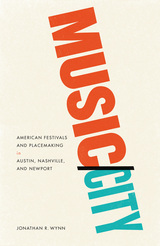 Music/City: American Festivals and Placemaking in Austin, Nashville, and Newport
Jonathan R. Wynn
University of Chicago Press, 2015 Austin’s famed South by Southwest is far more than a festival celebrating indie music. It’s also a big networking party that sparks the imagination of hip, creative types and galvanizes countless pilgrimages to the city. Festivals like SXSW are a lot of fun, but for city halls, media corporations, cultural institutions, and community groups, they’re also a vital part of a complex growth strategy. In Music/City, Jonathan R. Wynn immerses us in the world of festivals, giving readers a unique perspective on contemporary urban and cultural life.
Wynn tracks the history of festivals in Newport, Nashville, and Austin, taking readers on-site to consider different festival agendas and styles of organization. It’s all here: from the musician looking to build her career to the mayor who wants to exploit a local cultural scene, from a resident’s frustration over corporate branding of his city to the music executive hoping to sell records. Music/City offers a sharp perspective on cities and cultural institutions in action and analyzes how governments mobilize massive organizational resources to become promotional machines. Wynn’s analysis culminates with an impassioned argument for temporary events, claiming that when done right, temporary occasions like festivals can serve as responsive, flexible, and adaptable products attuned to local places and communities.
The Musician as Philosopher: New York’s Vernacular Avant-Garde, 1958–1978
Michael Gallope
University of Chicago Press, 2024 An insightful look at how avant-garde musicians of the postwar period in New York explored the philosophical dimensions of music’s ineffability.
The Musician as Philosopher explores the philosophical thought of avant-garde musicians in postwar New York: David Tudor, Ornette Coleman, the Velvet Underground, Alice Coltrane, Patti Smith, and Richard Hell. It contends that these musicians—all of whom are understudied and none of whom are traditionally taken to be composers—not only challenged the rules by which music is written and practiced but also confounded and reconfigured gendered and racialized expectations for what critics took to be legitimate forms of musical sound. From a broad historical perspective, their arresting music electrified a widely recognized social tendency of the 1960s: a simultaneous affirmation and crisis of the modern self.
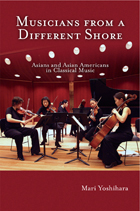 Musicians from a Different Shore: Asians and Asian Americans in Classical Music
Mari Yoshihara
Temple University Press, 2008 Musicians of Asian descent enjoy unprecedented prominence in concert halls, conservatories, and classical music performance competitions. In the first book on the subject, Mari Yoshihara looks into the reasons for this phenomenon, starting with her own experience of learning to play piano in Japan at the age of three. Yoshihara shows how a confluence of culture, politics and commerce after the war made classical music a staple in middle-class households, established Yamaha as the world's largest producer of pianos and gave the Suzuki method of music training an international clientele. Soon, talented musicians from Japan, China and South Korea were flocking to the United States to study and establish careers, and Asian American families were enrolling toddlers in music classes. Against this historical backdrop, Yoshihara interviews Asian and Asian American musicians, such as Cho-Liang Lin, Margaret Leng Tan, Kent Nagano, who have taken various routes into classical music careers. They offer their views about the connections of race and culture and discuss whether the music is really as universal as many claim it to be. Their personal histories and Yoshihara's observations present a snapshot of today's dynamic and revived classical music scene.
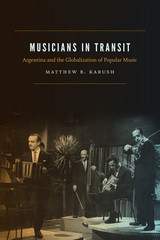 Musicians in Transit: Argentina and the Globalization of Popular Music
Matthew B. Karush
Duke University Press, 2017 In Musicians in Transit Matthew B. Karush examines the transnational careers of seven of the most influential Argentine musicians of the twentieth century: Afro-Argentine swing guitarist Oscar Alemán, jazz saxophonist Gato Barbieri, composer Lalo Schifrin, tango innovator Astor Piazzolla, balada singer Sandro, folksinger Mercedes Sosa, and rock musician Gustavo Santaolalla. As active participants in the globalized music business, these artists interacted with musicians and audiences in the United States, Europe, and Latin America and contended with genre distinctions, marketing conventions, and ethnic stereotypes. By responding creatively to these constraints, they made innovative music that provided Argentines with new ways of understanding their nation’s place in the world. Eventually, these musicians produced expressions of Latin identity that reverberated beyond Argentina, including a novel form of pop ballad; an anti-imperialist, revolutionary folk genre; and a style of rock built on a pastiche of Latin American and global genres. A website with links to recordings by each musician accompanies the book.
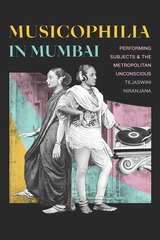 Musicophilia in Mumbai: Performing Subjects and the Metropolitan Unconscious
Tejaswini Niranjana
Duke University Press, 2020 In Musicophilia in Mumbai Tejaswini Niranjana traces the place of Hindustani classical music in Mumbai throughout the long twentieth century as the city moved from being a seat of British colonial power to a vibrant postcolonial metropolis. Drawing on historical archives, newspapers, oral histories, and interviews with musicians, critics, students, and instrument makers as well as her own personal experiences as a student of Hindustani classical music, Niranjana shows how the widespread love of music throughout the city created a culture of collective listening that brought together people of diverse social and linguistic backgrounds. This culture produced modern subjects Niranjana calls musicophiliacs, whose subjectivity was grounded in a social rather than an individualistic context. By attending concerts, learning instruments, and performing at home and in various urban environments, musicophiliacs embodied forms of modernity that were distinct from those found in the West. In tracing the relationship between musical practices and the formation of the social subject, Niranjana opens up new ways to think about urbanity, subjectivity, culture, and multiple modernities.
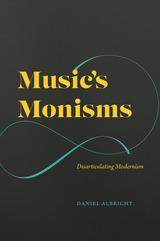 Music's Monisms: Disarticulating Modernism
Daniel Albright
University of Chicago Press, 2021 Daniel Albright investigates musical phenomena through the lens of monism, the philosophical belief that things that appear to be two are actually one.
Daniel Albright was one of the preeminent scholars of musical and literary modernism, leaving behind a rich body of work before his untimely passing. In Music’s Monisms, he shows how musical and literary phenomena alike can be fruitfully investigated through the lens of monism, a philosophical conviction that does away with the binary structures we use to make sense of reality. Albright shows that despite music’s many binaries—diatonic vs. chromatic, major vs. minor, tonal vs. atonal—there is always a larger system at work that aims to reconcile tension and resolve conflict.
Albright identifies a “radical monism” in the work of modernist poets such as T. S. Eliot and musical works by Wagner, Debussy, Britten, Schoenberg, and Stravinsky. Radical monism insists on the interchangeability, even the sameness, of the basic dichotomies that govern our thinking and modes of organizing the universe. Through a series of close readings of musical and literary works, Albright advances powerful philosophical arguments that not only shed light on these specific figures but also on aesthetic experience in general. Music’s Monisms is a revelatory work by one of modernist studies’ most distinguished figures.
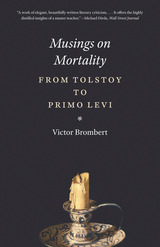 Musings on Mortality: From Tolstoy to Primo Levi
Victor Brombert
University of Chicago Press, 2013 “All art and the love of art,” Victor Brombert writes at the beginning of the deeply personal Musings on Mortality, “allow us to negate our nothingness.” As a young man returning from World War II, Brombert came to understand this truth as he immersed himself in literature. Death can be found everywhere in literature, he saw, but literature itself is on the side of life. With delicacy and penetrating insight, Brombert traces the theme of mortality in the work of a group of authors who wrote during the past century and a half, teasing out and comparing their views of death as they emerged from vastly different cultural contexts. Leo Tolstoy, Thomas Mann, Franz Kafka, Virginia Woolf, Albert Camus, Giorgio Bassani, J. M. Coetzee, and Primo Levi—these are the writers whose works Brombert plumbs, illuminating their views on the meaning of life and the human condition. But there is more to their work, he shows, than a pervasive interest in mortality: they wrote not only of physical death but also of the threat of moral and spiritual death—and as the twentieth century progressed, they increasingly reflected on the traumatic events of their times and the growing sense of a collective historical tragedy. He probes the individual struggle with death, for example, through Tolstoy’s Ivan Ilych and Mann’s Aschenbach, while he explores the destruction of whole civilizations in Bassani, Camus, and Primo Levi. For Kafka and Woolf, writing seems to hold the promise of salvation, though that promise is seen as ambiguous and even deceptive, while Coetzee, writing about violence and apartheid South Africa, is deeply concerned with a sense of disgrace. Throughout the book, Brombert roots these writers’ reflections in philosophical meditations on mortality. Ultimately, he reveals that by understanding how these authors wrote about mortality, we can grasp the full scope of their literary achievement and vision.
Drawing deeply from the well of Brombert’s own experience, Musings on Mortality is more than mere literary criticism: it is a moving and elegant book for all to learn and live by.
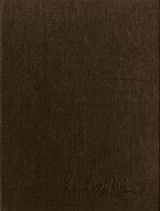 Musique anodine--Album italiano
Gioachino Rossini
University of Chicago Press, 1996
During the last years of his life, Rossini gathered his numerous vocal and piano pieces into fourteen unpublished albums, which he called Pèchès de vieillesse ("sins of my old age"). In 1857 he presented Musique anodine, a Prélude and six songs, to his wife Olimpe, in gratitude for her care during his long illness. This was the thirteenth album in the series. The first was Album italiano, a dozen pieces for one, two, or four voices with piano. Among the best known of these pieces is "La regata veneziana," three canzonettas for mezzo-soprano in Venetian dialect, in which the heroine encourages her racing gondolier. Another song, "Le gittane," has never before been published with its Italian text.
Based on the composer's own manuscripts, this critical edition restores Rossini's expressively precise musical notation. Appendixes contain earlier versions of six songs, some with different texts from the final versions.
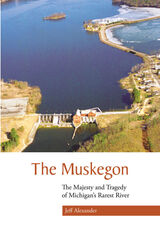 The Muskegon: The Majesty and Tragedy of Michigan's Rarest River
Jeff Alexander
Michigan State University Press, 2006 Muskegon is a derivation of a Native American word meaning "river with marshes." Jeff Alexander examines the creation, uses of, devastation, and restoration of Michigan's historic and beautiful Muskegon River.
Four of the five Great Lakes touch Michigan's shores; the state's shoreline spans more than 4,500 miles, not to mention more than 11,000 inland lakes and a multitude of rivers. The Muskegon River, the state's second longest river, runs 227 miles and has the most diverse features of any of Michigan’s many rivers. The Muskegon rises from the center of the state, widens, and moves westward, passing through the Pere Marquette and AuSable State Forests. The river ultimately flows toward Lake Michigan, where it opens into Muskegon Lake, a 12 square-mile, broad harbor located between the Muskegon River and Lake Michigan.
Formed several thousand years ago, when the glaciers that created the Great Lakes receded, and later inhabited by Ottawa and Potawatomi Indians, the Muskegon River was used by French fur trappers in the 1600s. Rich in white pine, the area was developed during the turn-of-the-century lumber boom, and at one time Muskegon Lake boasted more than 47 sawmills. The Muskegon was ravaged following settlement by Europeans, when rivers and streams were used to transport logs to the newly developing cities. Dams on rivers and larger streams provided power for sawmills and grain milling, and later provided energy for generating electricity as technology advanced.
There is now an ambitious effort to restore and protect this mighty river's natural features in the face of encroaching urbanization and land development that threatens to turn this majestic waterway into a mirror image of the Grand River, Michigan's longest river and one of its most polluted.
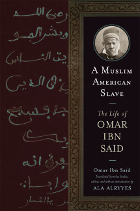 A Muslim American Slave: The Life of Omar Ibn Said
Omar Ibn Said; translated from the Arabic, edited, and with an introduction by Ala Alryyes
University of Wisconsin Press, 2011 Born to a wealthy family in West Africa around 1770, Omar Ibn Said was abducted and sold into slavery in the United States, where he came to the attention of a prominent North Carolina family after filling “the walls of his room with piteous petitions to be released, all written in the Arabic language,” as one local newspaper reported. Ibn Said soon became a local celebrity, and in 1831 he was asked to write his life story, producing the only known surviving American slave narrative written in Arabic.
In A Muslim American Slave, scholar and translator Ala Alryyes offers both a definitive translation and an authoritative edition of this singularly important work, lending new insights into the early history of Islam in America and exploring the multiple, shifting interpretations of Ibn Said’s narrative by the nineteenth-century missionaries, ethnographers, and intellectuals who championed it.
This edition presents the English translation on pages facing facsimile pages of Ibn Said’s Arabic narrative, augmented by Alryyes’s comprehensive introduction, contextual essays and historical commentary by leading literary critics and scholars of Islam and the African diaspora, photographs, maps, and other writings by Omar Ibn Said. The result is an invaluable addition to our understanding of writings by enslaved Americans and a timely reminder that “Islam” and “America” are not mutually exclusive terms.
This edition presents the English translation on pages facing facsimile pages of Ibn Said’s Arabic narrative, augmented by Alryyes’s comprehensive introduction and by photographs, maps, and other writings by Omar Ibn Said. The volume also includes contextual essays and historical commentary by literary critics and scholars of Islam and the African diaspora: Michael A. Gomez, Allan D. Austin, Robert J. Allison, Sylviane A. Diouf, Ghada Osman, and Camille F. Forbes. The result is an invaluable addition to our understanding of writings by enslaved Americans and a timely reminder that “Islam” and “America” are not mutually exclusive terms.
Best Books for General Audiences, selected by the American Association of School Librarians
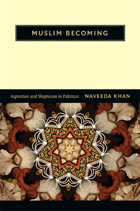 Muslim Becoming: Aspiration and Skepticism in Pakistan
Naveeda Khan
Duke University Press, 2012 In Muslim Becoming, Naveeda Khan challenges the claim that Pakistan's relation to Islam is fragmented and problematic. Offering a radically different interpretation, Khan contends that Pakistan inherited an aspirational, always-becoming Islam, one with an open future and a tendency toward experimentation. For the individual, this aspirational tendency manifests in a continual striving to be a better Muslim. It is grounded in the thought of Muhammad Iqbal (1877–1938), the poet, philosopher, and politician considered the spiritual founder of Pakistan. Khan finds that Iqbal provided the philosophical basis for recasting Islam as an open religion with possible futures as yet unrealized, which he did in part through his engagement with the French philosopher Henri Bergson. Drawing on ethnographic research in the neighborhoods and mosques of Lahore and on readings of theological polemics, legal history, and Urdu literature, Khan points to striving throughout Pakistani society: in prayers and theological debates and in the building of mosques, readings of the Qur'an, and the undertaking of religious pilgrimages. At the same time, she emphasizes the streak of skepticism toward the practices of others that accompanies aspiration. She asks us to consider what is involved in affirming aspiration while acknowledging its capacity for violence.
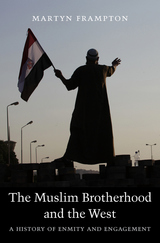 The Muslim Brotherhood and the West: A History of Enmity and Engagement
Martyn Frampton
Harvard University Press, 2018 A Foreign Affairs Best Book of the Year
In the century since the Muslim Brotherhood first emerged in Egypt, its idea of “the West” has remained a key driver of its behavior. From its founding, the Brotherhood stood opposed to the British Empire and Western cultural influence. Its leaders hoped to create more pristine, authentically Islamic societies. As British power gave way to American, the Brotherhood oscillated between anxiety about the West and the need to engage with it, while American and British officials struggled to understand the group, unsure whether to shun or embrace it.
The Muslim Brotherhood and the West offers the first comprehensive history of the relationship between the world’s largest Islamist movement and the powers that have dominated the Middle East for the past hundred years. Drawing on extensive archival research in London and Washington and the Brotherhood’s writings in Arabic and English, Martyn Frampton reveals the history of this charged relationship down to the eve of the Arab Spring. What emerges is an authoritative account of a story that is crucial to understanding one of the world’s most turbulent regions.
“Rigorous yet absorbing…Fills a crucial gap in the literature and will be essential reading not just for scholars, but for anyone seeking to understand the ever-problematic relationship between religion and politics in today’s Middle East.”
—Financial Times
“Breaks new ground by examining the links between the Egyptian Brotherhood’s relations with Britain and…the United States.”
—Times Literary Supplement
The Muslim Brotherhood: Ideology, History, Descendants
Joas Wagemakers
Amsterdam University Press, 2022 The Muslim Brotherhood is often represented in mainstream media as a theocratic organisation that preaches Qur’an-based violence and is out to grab power in the West. As this book shows, such representations are wrought with prejudice and oversimplification; the organisation is in reality much more dynamic and diverse. Its goals, ideology and influence have never been static and vary greatly amongst its descendants in both Europe and the Middle East. Joas Wagemakers introduces the reader to this fascinating organisation and the major ideological and historical developments that it has gone through since its emergence in 1928.
Muslim Chinese: Ethnic Nationalism in the People’s Republic, Second Edition
Dru C. Gladney
Harvard University Press This second edition of Dru Gladney’s critically acclaimed study of the Muslim population in China includes a new preface by the author, as well as a valuable addendum to the bibliography, already hailed as one of the most extensive listing of modern sources on the Sino-Muslims.
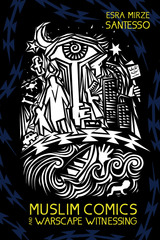 Muslim Comics and Warscape Witnessing
Esra Mirze Santesso
Ohio State University Press, 2023 Recent decades have seen an unprecedented number of comics by and about Muslim people enter the global market. Now, Muslim Comics and Warscape Witnessing offers the first major study of these works. Esra Mirze Santesso assesses Muslim comics to illustrate the multifaceted nature of seeing and representing daily lives within and outside of the homeland. Focusing on contemporary graphic narratives that are primarily but not exclusively from the Middle East—from blockbusters like Marjane Satrapi’s Persepolis to more local efforts such as Leila Abdelrazaq’s Baddawi—Santesso explores why the graphic form has become a popular and useful medium for articulating Muslim subjectivities. Further, she shows how Muslim comics “bear witness” to a range of faith-based positions that complicate discussions of global ummah or community, contest monolithic depictions of Muslims, and question the Islamist valorization of the shaheed, the “martyr” figure regarded as the ideal religious witness. By presenting varied depictions of everyday lives of Muslims navigating violence and militarization, this book reveals the connections between religious rituals and existence in warscapes and invites us to more deeply consider the nature of witnessing itself.
 Muslim Communities Reemerge: Historical Perspectives on Nationality, Politics, and Opposition in the Former Soviet Union and Yugoslavia
Andreas Kappeler, Gerhard Simon, and Georg Brunner, eds.
Duke University Press, 1994 The terrible events afflicting Muslims in Bosnia-Herzegovina and Tajikistan fill the news, commanding the world's attention. This timely volume offers rare insight into the background of these catastrophic conflicts. First published in German on the eve of the breakup of the Yugoslav and Soviet republics, it is one of the few books in any language to analyze, in detail and in depth, the historical and contemporary situation of Muslims in former communist states and thus clarifies the sources, development, and implications of the events that dominate today's foreign news. In fourteen chapters and an updated introduction, European and North American specialists examine the recent evolution of Islamic expression and practice in these former Communist regions, as well as its political significance within officially atheistic regimes. Representing a wide range of disciplines and perspectives, the authors detail how the modern ethno-religious situation developed and matured in hostile circumstances, the degree of latitude the local Muslims achieved in religious expression, and what prospect the future seemed to offer just before the breakup of the Soviet Union and the Federal Republic of Yugoslavia. Overall, the book provides a thorough analysis of the coincidence and tension between ethnic and religious identity in two countries officially devoted to the separation of ethnic groups in domestic cultural arrangements but not in the social or political realm. Contributors. Edward Allworth, Hans Bräker, Marie Broxup, Georg Brunner, Bert G. Fragner, Uwe Halbach, Wolfgang Höpken, Andreas Kappeler, Edward J. Lazzerini, Richard Lorenz, Alexandre Popovi´c, Sabrina Petra Ramet, Azade-Ayse Rorlich, Gerhard Simon, Tadeusz Swietochowski
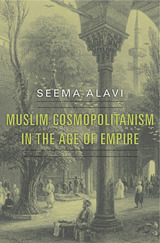 Muslim Cosmopolitanism in the Age of Empire
Seema Alavi
Harvard University Press, 2015 Muslim Cosmopolitanism in the Age of Empire recovers the stories of five Indian Muslim scholars who, in the aftermath of the uprising of 1857, were hunted by British authorities, fled their homes in India for such destinations as Cairo, Mecca, and Istanbul, and became active participants in a flourishing pan-Islamic intellectual network at the cusp of the British and Ottoman empires. Seema Alavi traces this network, born in the age of empire, which became the basis of a global Muslim sensibility—a form of political and cultural affiliation that competes with ideas of nationhood today as it did in the previous century.
By demonstrating that these Muslim networks depended on European empires and that their sensibility was shaped by the West in many subtle ways, Alavi challenges the idea that all pan-Islamic configurations are anti-Western or pro-Caliphate. Indeed, Western imperial hegemony empowered the very inter-Asian Muslim connections that went on to outlive European empires. Diverging from the medieval idea of the umma, this new cosmopolitan community stressed consensus in matters of belief, ritual, and devotion and found inspiration in the liberal reforms then gaining traction in the Ottoman world. Alavi breaks new ground in the writing of nineteenth-century history by engaging equally with the South Asian and Ottoman worlds, and by telling a non-Eurocentric story of global modernity without overlooking the importance of the British Empire.
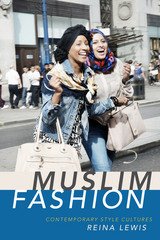 Muslim Fashion: Contemporary Style Cultures
Reina Lewis
Duke University Press, 2015 In the shops of London's Oxford Street, girls wear patterned scarves over their hair as they cluster around makeup counters. Alongside them, hip twenty-somethings style their head-wraps in high black topknots to match their black boot-cut trousers. Participating in the world of popular mainstream fashion—often thought to be the domain of the West—these young Muslim women are part of an emergent cross-faith transnational youth subculture of modest fashion. In treating hijab and other forms of modest clothing as fashion, Reina Lewis counters the overuse of images of veiled women as "evidence" in the prevalent suggestion that Muslims and Islam are incompatible with Western modernity. Muslim Fashion contextualizes modest wardrobe styling within Islamic and global consumer cultures, interviewing key players including designers, bloggers, shoppers, store clerks, and shop owners. Focusing on Britain, North America, and Turkey, Lewis provides insights into the ways young Muslim women use multiple fashion systems to negotiate religion, identity, and ethnicity.
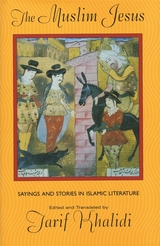 The Muslim Jesus: Sayings and Stories in Islamic Literature
Tarif Khalidi
Harvard University Press, 2001 This work presents in English translation the largest collection ever assembled of the sayings and stories of Jesus in Arabic Islamic literature. In doing so, it traces a tradition of love and reverence for Jesus that has characterized Islamic thought for more than a thousand years. An invaluable resource for the history of religions, the collection documents how one culture, that of Islam, assimilated the towering religious figure of another, that of Christianity. As such, it is a work of great significance for the understanding of both, and of profound implications for modern-day intersectarian relations and ecumenical dialogue.
Tarif Khalidi's introduction and commentaries place the sayings and stories in their historical context, showing how and why this "gospel" arose and the function it served within Muslim devotion. The Jesus that emerges here is a compelling figure of deep and life-giving spirituality. The sayings and stories, some 300 in number and arranged in chronological order, show us how the image of this Jesus evolved throughout a millennium of Islamic history.
 Muslim Land, Christian Labor: Transforming Ottoman Imperial Subjects into Bulgarian National Citizens, c. 1878-1939
Anna M. Mirkova
Central European University Press, 2017 Focusing upon a region in Southern Bulgaria, a region that has been the crossroads between Europe and Asia for many centuries, this book describes how former Ottoman Empire Muslims were transformed into citizens of Balkan nation-states. This is a region marked by shifting borders, competing Turkish and Bulgarian sovereignties, rival nationalisms, and migration. Problems such as these were ultimately responsible for the disintegration of the dynastic empires into nation-states. Land that had traditionally belonged to Muslims—individually or communally—became a symbolic and material resource for Bulgarian state building and was the terrain upon which rival Bulgarian and Turkish nationalisms developed in the wake of the dissolution of the late Ottoman Empire and the birth of early republican Turkey and the introduction of capitalism. By the outbreak of World War II, Turkish Muslims had become a polarized national minority. Their conflicting efforts to adapt to post-Ottoman Bulgaria brought attention to the increasingly limited availability of citizenship rights, not only to Turkish Muslims, but to Bulgarian Christians as well.
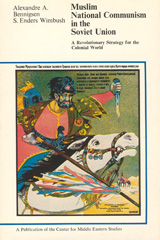 Muslim National Communism in the Soviet Union: A Revolutionary Strategy for the Colonial World
Alexandre A. Bennigsen and S. Enders Wimbush
University of Chicago Press, 1978 In this study, Bennigsen and Wimbush trace the development of the doctrine of national communism in Central Asia and the Caucasus. At the heart of this doctrine—as elaborated by the Volga Tatar, Mir-Said Sultan Galiev—was the concept of "proletarian nations," as opposed to the traditional notion of a working class. With such ideological innovations, Sultan Galiev and his contemporaries were able to reconcile Marxist nationalisms and Islam and devise an "Eastern strategy" whereby the national revolution was to be spread.
The authors show that the ideas of Muslim national communism persist in the land of their birth and have spread to such developing societies as China, Algeria, and Indonesia. This doctrine is an important factor in the ideological split and increasing tensions between industrial and nonindustrial nations, East and West, and now North and South, which grip the world communist movement.
A Muslim Primer: A Beginner's Guide to Islam
Ira G. Zepp
University of Arkansas Press, 2000 A Muslim Primer covers the basic beliefs of Islam and provides an informative source for both lay and professional readers. First published in 1992, it has proven to be a valuable handbook for all attempting to better understand the tenets of the religion of a major portion of the world’s population. The reader is introduced to the authority of the Quran, the prophethood of Muhammad, the Wisdom of the Law, the Five Pillars of Islam, and to other fundamental principles of the religion. Distinctions are made between Sunni and Shiite traditions and the Sufi mystical dimension of Islam. Well organized, visually appealing, and accurate, A Muslim Primer is useful to pre-collegiate and collegiate students of Islam, church and community study groups, and travelers, both tourists and business people.
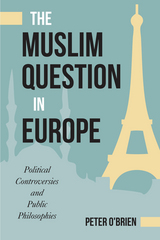 The Muslim Question in Europe: Political Controversies and Public Philosophies
Peter O'Brien
Temple University Press, 2016 An estimated twenty million Muslims now reside in Europe, mostly as a result of large-scale postwar immigration. In The Muslim Question in Europe, Peter O’Brien challenges the popular notion that the hostilities concerning immigration—which continues to provoke debates about citizenship, headscarves, secularism, and terrorism—are a clash between “Islam and the West.” Rather, he explains, the vehement controversies surrounding European Muslims are better understood as persistent, unresolved intra-European tensions. O’Brien contends that the best way to understand the politics of state accommodation of European Muslims is through the lens of three competing political ideologies: liberalism, nationalism, and postmodernism. These three broadly understood philosophical traditions represent the most influential normative forces in the politics of immigration in Europe today. He concludes that Muslim Europeans do not represent a monolithic anti-Western bloc within Europe. Although they vehemently disagree among themselves, it is along the same basic liberal, nationalist, and postmodern contours as non-Muslim Europeans.
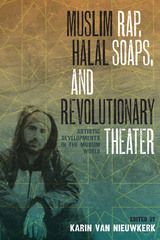 Muslim Rap, Halal Soaps, and Revolutionary Theater: Artistic Developments in the Muslim World
Edited by Karin van Nieuwkerk
University of Texas Press, 2011 From "green" pop and "clean" cinema to halal songs, Islamic soaps, Muslim rap, Islamist fantasy serials, and Suficized music, the performing arts have become popular and potent avenues for Islamic piety movements, politically engaged Islamists, Islamic states, and moderate believers to propagate their religio-ethical beliefs. Muslim Rap, Halal Soaps, and Revolutionary Theater is the first book that explores this vital intersection between artistic production and Islamic discourse in the Muslim world. The contributors to this volume investigate the historical and structural conditions that impede or facilitate the emergence of a "post-Islamist" cultural sphere. They discuss the development of religious sensibilities among audiences, which increasingly include the well-to-do and the educated young, as well as the emergence of a local and global religious market. At the heart of these essays is an examination of the intersection between cultural politics, performing art, and religion, addressing such questions as where, how, and why pop culture and performing arts have been turned into a religious mission, and whether it is possible to develop a new Islamic aesthetic that is balanced with religious sensibilities. As we read about young Muslims and their quest for a "cool Islam" in music, their struggle to quell their stigmatized status, or the collision of morals and the marketplace in the arts, a vivid, varied new perspective on Muslim culture emerges.
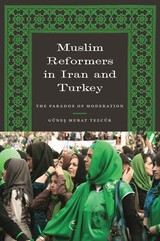 Muslim Reformers in Iran and Turkey: The Paradox of Moderation
By Güneş Murat Tezcür
University of Texas Press, 2010 Moderation theory describes the process through which radical political actors develop commitments to electoral competition, political pluralism, human rights, and rule of law and come to prefer negotiation, reconciliation, and electoral politics over provocation, confrontation, and contentious action. Revisiting this theory through an examination of two of the most prominent moderate Islamic political forces in recent history, Muslim Reformers in Iran and Turkey analyzes the gains made and methods implemented by the Reform Front in the Islamic Republic of Iran and the Justice and Development Party in Turkey. Both of these groups represent Muslim reformers who came into continual conflict with unelected adversaries who attempted to block their reformist agendas. Based on extensive field research in both locales, Muslim Reformers in Iran and Turkey argues that behavioral moderation as practiced by these groups may actually inhibit democratic progress. Political scientist Güneş Murat Tezcür observes that the ability to implement conciliatory tactics, organize electoral parties, and make political compromises impeded democracy when pursued by the Reform Front and the Justice and Development Party. Challenging conventional wisdom, Tezcür's findings have broad implications for the dynamics of democratic progress.
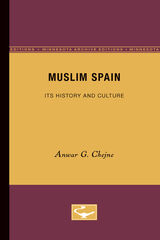 Muslim Spain: Its History and Culture
Anwar G. Chejne
University of Minnesota Press, 1974
Muslim Spain was first published in 1974. Minnesota Archive Editions uses digital technology to make long-unavailable books once again accessible, and are published unaltered from the original University of Minnesota Press editions.
This comprehensive history of Muslim Spain in the centuries from 711 to 1492 provides a panoramic view of the whole field of Hispano-Arabic culture, including science, philosophy, and the arts. As the account makes clear, Muslim Spain was always an integral part of the main literary and intellectual stream of the East and as such was as Islamic as Syria or Egypt. Thus the history is important for an understanding of Islamic culture as a whole and of the interaction of people and ideas. The author shows that the interdependence and continuity of Muslim culture through its long history was nurtured by the unhampered travel of students and scholars and the circulation of publications throughout the width and breadth of the Islamic Empire, notwithstanding the political division that separated Muslim Spain from the center of Islam.
The first five chapter of the book describe, dynasty by dynasty, the Muslims' conquest and rule. The remaining chapters discuss in detail all aspects of Hispano-Arabic culture. Among the subjects are the social structure, the sciences and education, Arabic and linguistic studies, prose and belles lettres, poetry, history, geography, and travel, courtly love, religion, philosophy and mysticism, the natural sciences, and architecture, the minor arts, and music.
The book is illustrated with photographs, drawings, and maps, and there is an extensive bibliography.
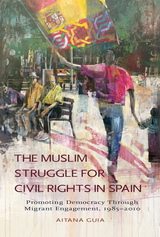 The Muslim Struggle for Civil Rights in Spain: Promoting Democracy through Migrant Engagement, 1985-2010
Aitana Guia
Sussex Academic Press, 2022 This book looks at how Muslims in Spain have changed legislation linked to religious pluralism and immigration and have fortified Spain's frail history and practice of democracy since 1975. Spanish Muslims have achieved this through active civil engagement and a persistent struggle for rights and for status as immigrants and as citizens on par with ethnic Spaniards. Muslims have interacted with Spanish popular traditions, challenged Eurocentric historical narratives, and used Spanish concepts such as convivencia (peaceful coexistence) and arraigo (rootedness) to expand the prevailing construction of belonging. The Muslim struggle for civil rights took off in earnest in Melillawith its historic ties to the Islamic Kingdom of Fez up to 1497between 1985 and 1988, when Muslim residents questioned nativist control of the enclave. Subsequently, from 1989 to 2001, on mainland Spain, Muslims formed independent organizations, pushed for national regularization of undocumented residents, and proposed modifications to immigration laws. A primary focus of the book is on how devout Muslims lobbied to institutionalize Islam in Spain, fought for the right to construct mosques despite heavy nativist resistance, and balanced women's rights in the Muslim community and broader secular context. The author also examines the ways that Muslims have interrogated the memory of the Moor in Spanish history and in popular festivals, such as the Festival of Moors and Christians, and how this has played out in regions with strong nationalist traditions, such as Catalonia. The book concludes with a survey of the writings of Muslim immigrants in Spanish and in Catalan, and how these works have publicized the everyday experience of migration in Spain.
 Muslim Superheroes: Comics, Islam, and Representation
A. David Lewis
Harvard University Press The roster of Muslim superheroes in the comic book medium has grown over the years, as has the complexity of their depictions. Muslim Superheroes tracks the initial absence, reluctant inclusion, tokenistic employment, and then nuanced scripting of Islamic protagonists in the American superhero comic book market and beyond.
This scholarly anthology investigates the ways in which Muslim superhero characters fulfill, counter, or complicate Western stereotypes and navigate popular audience expectations globally, under the looming threat of Islamophobia. The contributors consider assumptions buried in the very notion of a character who is both a superhero and a Muslim with an interdisciplinary and international focus characteristic of both Islamic studies and comics studies scholarship. Muslim Superheroes investigates both intranational American racial formation and international American geopolitics, juxtaposed with social developments outside U.S. borders.
Providing unprecedented depth to the study of Muslim superheroes, this collection analyzes, through a series of close readings and comparative studies, how Muslim and non-Muslim comics creators and critics have produced, reproduced, and represented different conceptions of Islam and Muslimness embodied in the genre characters.
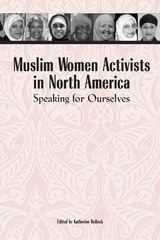 Muslim Women Activists in North America: Speaking for Ourselves
Edited by Katherine Bullock
University of Texas Press, 2005 In the eyes of many Westerners, Muslim women are hidden behind a veil of negative stereotypes that portray them as either oppressed, subservient wives and daughters or, more recently, as potential terrorists. Yet many Muslim women defy these stereotypes by taking active roles in their families and communities and working to create a more just society. This book introduces eighteen Muslim women activists from the United States and Canada who have worked in fields from social services, to marital counseling, to political advocacy in order to further social justice within the Muslim community and in the greater North American society. Each of the activists has written an autobiographical narrative in which she discusses such issues as her personal motivation for doing activism work, her views on the relationship between Islam and women's activism, and the challenges she has faced and overcome, such as patriarchal cultural barriers within the Muslim community or racism and discrimination within the larger society. The women activists are a heterogeneous group, including North American converts to Islam, Muslim immigrants to the United States and Canada, and the daughters of immigrants. Young women at the beginning of their activist lives as well as older women who have achieved regional or national prominence are included. Katherine Bullock's introduction highlights the contributions to society that Muslim women have made since the time of the Prophet Muhammad and sounds a call for contemporary Muslim women to become equal partners in creating and maintaining a just society within and beyond the Muslim community.
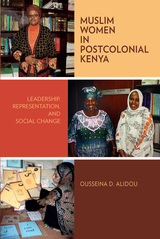 Muslim Women in Postcolonial Kenya: Leadership, Representation, and Social Change
Ousseina D. Alidou
University of Wisconsin Press, 2013 In education, journalism, legislative politics, social justice, health, law, and other arenas, Muslim women across Kenya are emerging as leaders in local, national, and international contexts, advancing reforms through their activism. Muslim Women in Postcolonial Kenya draws on extensive interviews with six such women, revealing how their religious and moral beliefs shape reform movements that bridge ethnic divides and foster alliances in service of creating a just, multicultural, multiethnic, and multireligious democratic citizenship. Mwalim Azara Mudira opened a school of theology for Muslim women. Nazlin Omar Rajput of The Nur magazine was a pioneer in reporting on HIV/AIDS in the Muslim community. Amina Abubakar, host of a women's radio show, has publicly addressed the sensitive subject of sexual crimes against Muslim women. Two women who are members of parliament are creating new socioeconomic and political opportunities for girls and women, within a framework that still embraces traditional values of marriage and motherhood. Examining the interplay of gender, agency, and autonomy, Ousseina D. Alidou shows how these Muslim women have effected change in the home, the school, the mosque, the media, and more—and she illuminates their determination as actors to challenge the oppressive influences of male-dominated power structures. In looking at differences as opportunities rather than obstacles, these women reflect a new sensibility among Muslim women and an effort to redefine the meaning of women's citizenship within their own community of faith and within the nation.
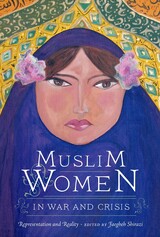 Muslim Women in War and Crisis: Representation and Reality
Edited by Faegheh Shirazi
University of Texas Press, 2010 Representing diverse cultural viewpoints, Muslim Women in War and Crisis collects an array of original essays that highlight the experiences and perspectives of Muslim women—their dreams and nightmares and their daily struggles—in times of tremendous social upheaval. Analyzing both how Muslim women have been represented and how they represent themselves, the authors draw on primary sources ranging from poetry and diaries to news reports and visual media. Topics include: - Peacebrokers in Indonesia
- Exploitation in the Islamic Republic of Iran
- Chechen women rebels
- Fundamentalism in Afghanistan, from refugee camps to Kabul
- Memoirs of Bengali Muslim women
- The 7/7 London bombings, British Muslim women, and the media
Also exploring such images in the United States, Spain, the former Yugoslavia, Tunisia, Algeria, Lebanon, and Iraq, this collection offers a chorus of multidimensional voices that counter Islamophobia and destructive clichés. Encompassing the symbolic national and religious identities of Muslim women, this study goes beyond those facets to examine the realities of day-to-day existence in societies that seek scapegoats and do little to defend the victims of hate crimes. Enhancing their scholarly perspectives, many of the contributors (including the editor) have lived through the strife they analyze. This project taps into their firsthand experiences of war and deadly political oppression.
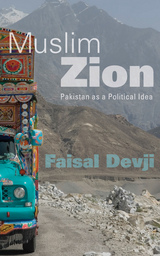 Muslim Zion: Pakistan as a Political Idea
Faisal Devji
Harvard University Press, 2013 Pakistan, founded less than a decade after a homeland for India’s Muslims was proposed, is both the embodiment of national ambitions fulfilled and, in the eyes of many observers, a failed state. Muslim Zion cuts to the core of the geopolitical paradoxes entangling Pakistan to argue that India’s rival has never been a nation-state in the conventional sense. Pakistan is instead a distinct type of political geography, ungrounded in the historic connections of lands and peoples, whose context is provided by the settler states of the New World but whose closest ideological parallel is the state of Israel.
A year before the 1948 establishment of Israel, Pakistan was founded on a philosophy that accords with Zionism in surprising ways. Faisal Devji understands Zion as a political form rather than a holy land, one that rejects hereditary linkages between ethnicity and soil in favor of membership based on nothing but an idea of belonging. Like Israel, Pakistan came into being through the migration of a minority population, inhabiting a vast subcontinent, who abandoned old lands in which they feared persecution to settle in a new homeland. Just as Israel is the world’s sole Jewish state, Pakistan is the only country to be established in the name of Islam.
Revealing how Pakistan’s troubled present continues to be shaped by its past, Muslim Zion is a penetrating critique of what comes of founding a country on an unresolved desire both to join and reject the world of modern nation-states.
 Muslims and US Politics Today: A Defining Moment
Mohammad Hassan Khalil
Harvard University Press, 2019 The twenty-first century has been a volatile period for American Muslims. Anti-Muslim hate crimes peaked after September 11, 2001, then increased again dramatically in parallel with the candidacy and presidency of Donald Trump. Yet American Muslims now have unprecedented avenues of influence in US politics. Muslims and US Politics Today explores the various representations of Muslims in American political and civic life, the myriad ways American Muslims are affected by politics, and how American Muslims are engaging political life as individuals and communities.
This integrative volume reaches back to presidential elections after 9/11 (Edward E. Curtis IV), further back to Iranian immigrants after the Iranian Revolution (Mohsen Mostafavi Mobasher), and back even to fundamentals of religious freedom in the United States (Kambiz GhaneaBassiri; Mucahit Bilici). Aspects of anti-Muslim politics and marginalization, as well as mobilization and activism, are covered in essays by Salah D. Hassan, Evelyn Alsultany, Juliane Hammer, Alisa Perkins, and Sally Howell. In a final section on rethinking Muslim politics, Donna Auston and Sylvia Chan-Malik dialogue on Black American Islam and Junaid Rana looks broadly to a global Muslim left. In this critically-timed volume, editor Mohammad Hassan Khalil has drawn together leading scholars to provide a deep look at the rich political history and future of American Muslims.
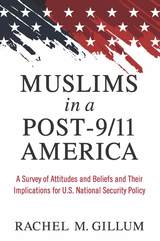 Muslims in a Post-9/11 America: A Survey of Attitudes and Beliefs and Their Implications for U.S. National Security Policy
Rachel M. Gillum
University of Michigan Press, 2018 Muslims in a Post-9/11 America examines how public fears about Muslims in the United States compare with the reality of American Muslims’ attitudes on a range of relevant issues. While most research on Muslim Americans focuses on Arab Muslims, a quarter of the Muslim American population, Rachel Gillum includes perspectives of Muslims from various ethnic and national communities—from African Americans to those of Pakistani, Iranian, or Eastern European descent. Using interviews and one of the largest nationwide surveys of Muslim Americans to date, Gillum examines more than three generations of Muslim American immigrants to assess how segments of the Muslim American community are integrating into the U.S. social fabric, and how they respond to post-9/11 policy changes. Gillum’s findings challenge perceptions of Muslims as a homogeneous, isolated, un-American, and potentially violent segment of the U.S. population.
Despite these realities, negative political rhetoric around Muslim Americans persists. The findings suggest that the policies designed to keep America safe from terrorist attacks may have eroded one of law enforcement’s greatest assets in the fight against violent extremism—a relationship of trust and goodwill between the Muslim American community and the U.S. government. Gillum argues for policies and law enforcement tactics that will bring nuanced understandings of this diverse category of Americans and build trust, rather than alienate Muslim communities.
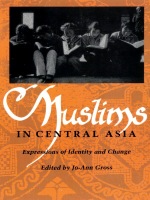 Muslims in Central Asia: Expressions of Identity and Change
Jo-Ann Gross, ed.
Duke University Press, 1992 Central Asia is distinctive in its role as a frontier region in which a unique diversity of cultural, religious, and political traditions exist. This collection of essays by expert scholars in a range of disciplines focuses on the formation of ethnic, religious, and national identities in Muslim societies of Central Asia, thus furthering our general understanding of the history and culture of this significant region. This study includes several geopolitical regions—Chinese Central Asia, Soviet Central Asia, Afghanistan, Transoxiana and Khurasan—and covers historical periods from the fifteenth century to the present. Drawing on scholarship in anthropology, religion, history, literature, and language studies, Muslims in Central Asia argues for an interdisciplinary, inter-regional dialog in the development of new approaches to understanding the Muslim societies in Central Asia. The authors creatively examine the social construction of identities as expressed through literature, Islamic discourse, historical texts, ethnic labels, and genealogies, and explore how such identities are formed, changed, and adopted through time. Contributors. Hamid Algar, Muriel Atkin, Walter Feldman, Dru C. Gladney, Edward J. Lazzerini, Beatrice Forbes Manz, Christopher Murphy, Oliver Roy, Isenbike Togan
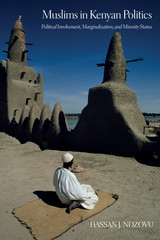 Muslims in Kenyan Politics: Political Involvement, Marginalization, and Minority Status
Hassan J. Ndzovu
Northwestern University Press, 2014 Muslims in Kenyan Politics explores the changing relationship between Muslims and the state in Kenya from precolonial times to the present, culminating in the radicalization of a section of the Muslim population in recent decades. The politicization of Islam in Kenya is deeply connected with the sense of marginalization that shapes Muslims’ understanding of Kenyan politics and government policies. Kenya’s Muslim population comprises ethnic Arabs, Indians, and black Africans, and its status has varied historically. Under British rule, an imposed racial hierarchy affected Muslims particularly, thwarting the development of a united political voice. Drawing on a broad range of interviews and historical research, Ndzovu presents a nuanced picture of political associations during the postcolonial period and explores the role of Kenyan Muslims as political actors.
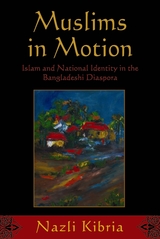 Muslims in Motion: Islam and National Identity in the Bangladeshi Diaspora
Kibria, Nazli
Rutgers University Press, 2011 In Muslims in Motion, Nazli Kibria provides a comparative look at Bangladeshi Muslims in different global contexts--including Britain, the U.S., the Middle East, and Malaysia. Kibria examines international migrant flows from Bangladesh, and considers how such migrations continue to shape Islamization in these areas. Having conducted more than 200 in-depth interviews, she explores how, in societies as different as these, migrant Muslims, in their everyday lives, strive to achieve economic gains, sustain community and family life, and realize a sense of dignity and honor. Muslims in Motion offers fresh insights into the prominence of Islam in these communities, especially an Islam defined by fundamentalist movements and ideologies. Kibria also focuses on the complex significance of nationality--with rich analyses of the diaspora, the role of gender and class, and the multiple identities of the migrants, she shows how nationality can be both a critical source of support and also of difficulty for many in their efforts to attain lives of dignity. By bringing to life a vast range of experiences, this book challenges prevailing stereotypes of Muslims.
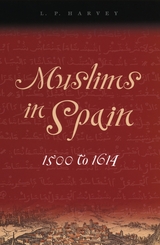 Muslims in Spain, 1500 to 1614
L. P. Harvey
University of Chicago Press, 2005 On December 18, 1499, the Muslims in Granada revolted against the Christian city government's attempts to suppress their rights to live and worship as followers of Islam. Although the Granada riot was a local phenomenon that was soon contained, subsequent widespread rebellion provided the Christian government with an excuse—or justification, as its leaders saw things—to embark on the systematic elimination of the Islamic presence from Spain, as well as from the Iberian Peninsula as a whole, over the next hundred years. Picking up at the end of his earlier classic study, Islamic Spain, 1250 to 1500— which described the courageous efforts of the followers of Islam to preserve their secular, as well as sacred, culture in late medieval Spain—L. P. Harvey chronicles here the struggles of the Moriscos. These forced converts to Christianity lived clandestinely in the sixteenth century as Muslims, communicating in aljamiado— Spanish written in Arabic characters. More broadly, Muslims in Spain, 1500 to 1614, tells the story of an early modern nation struggling to deal with diversity and multiculturalism while torn by the fanaticism of the Counter-Reformation on one side and the threat of Ottoman expansion on the other. Harvey recounts how a century of tolerance degenerated into a vicious cycle of repression and rebellion until the final expulsion in 1614 of all Muslims from the Iberian Peninsula. Retold in all its complexity and poignancy, this tale of religious intolerance, political maneuvering, and ethnic cleansing resonates with many modern concerns. Eagerly awaited by Islamist and Hispanist scholars since Harvey's first volume appeared in 1990, Muslims in Spain, 1500 to 1614, will be compulsory reading for student and specialist alike. “The year’s most rewarding historical work is L. P. Harvey’s Muslims in Spain 1500 to 1614, a sobering account of the various ways in which a venerable Islamic culture fell victim to Christian bigotry. Harvey never urges the topicality of his subject on us, but this aspect inevitably sharpens an already compelling book.”—Jonathan Keats, Times Literary Supplement
Muslims in the Movies: A Global Anthology
Kristian Petersen
Harvard University Press, 2021 Muslims in the Movies provides a series of essays that explore the portrayal and reception of Muslims in Euro-American film, transnational productions, and global national cinemas. The volume brings together a group of internationally recognized experts to introduce Muslims in the films of Europe, North America, Australia, Iran, Egypt, North Africa, Saudi Arabia, Nigeria, India, Indonesia, and the Philippines. The interdisciplinary collection explores issues of identity, cultural production, and representation through the depiction of Muslims on screen and how audiences respond to these images. Together, the essays operate as an introduction to the subject of Muslims and film for new readers while also serving as new works of critical analysis for scholars of cinema.
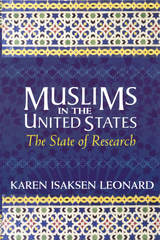 Muslims in the United States: The State of Research
Karen Isaksen Leonard
Russell Sage Foundation, 2003 As the United States wages war on terrorism, the country's attention is riveted on the Muslim world as never before. While many cursory press accounts dealing with Muslims in the United States have been published since 9/11, few people are aware of the wealth of scholarly research already available on the American Islamic population. In Muslims in the United States: The State of Research, Karen Isaksen Leonard mines this rich vein of research to provide a fascinating overview of the history and contemporary situation of American Muslim communities. Leonard describes how Islam, never a monolithic religion, has inevitably been shaped by its experience on American soil. American Muslims are a religious minority, and arbiters of Islamic cultural values and jurisprudence must operate within the framework of America's secular social and legal codes, while coping with the ethnic differences among Muslim groups that have long divided their communities. Arab Muslims tend to dominate mosque functions and teaching Arabic and the Qur'an, whereas South Asian Muslims have often focused on the regional and national mobilization of Muslims around religious and political issues. By the end of the 20th century, however, many Muslim immigrants had become American citizens, prompting greater interchange among these groups and bridging some cultural differences. African American Muslims remain the most isolated group—a minority within a minority. Many African American men have converted to Islam while in prison, leading to a special concern among African American Muslims for civil and religious rights within the prison system. Leonard highlights the need to expand our knowledge of African American Muslim movements, which are often not regarded as legitimate by immigrant Muslims. Leonard explores the construction of contemporary American Muslim identities, examining such factors as gender, sexuality, race, class, and generational differences within the many smaller national origin and sectarian Muslim communities, including secular Muslims, Sufis, and fundamentalists. Muslims in the United States provides a thorough account of the impact of September 11th on the Muslim community. Before the terrorist attacks, Muslim leaders had been mostly optimistic, envisioning a growing role for Muslims in U.S. society. Afterward, despite a brave show of unity and support for the nation, Muslim organizations became more open in showing their own conflicts and divisions and more vocal in opposing militant Islamic ideologies. By providing a concise summary of significant historical and contemporary research on Muslims in the United States, this volume will become an essential resource for both the scholar and the general reader interested in understanding the diverse communities that constitute Muslim America.
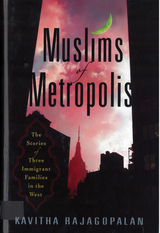 Muslims of Metropolis: The Stories of Three Immigrant Families in the West
Rajagopalan, Kavitha
Rutgers University Press, 2008 Finalist in the Non Fiction category of the 2009 Twelfth Annual Asian America Literary Award
The Muslim population globally is comprised of hundreds of ethnic, linguistic, and religious sub-communities. Yet, more often than not, the public conflates these diverse and unrelated communities, branding Muslim immigrants as a single, suspicious, and culturally antagonistic group of people. Generalizations like these have compromised many Muslim immigrants' sense of belonging and acceptance in places where they have lived, in some cases, for three or four generations.
In Muslims of Metropolis, Kavitha Rajagopalan takes a much needed step in personalizing and humanizing our understanding of the Muslim diaspora. Tracing the stories of three very different families-a Palestinian family moving to London, a Kurdish family moving to Berlin, and a Bangladeshi family moving to New York-she reveals a level of complexity and nuance that is seldom considered. Through their voices and in their words, Rajagopalan describes what prompted these families to leave home, what challenges they faced in adjusting to their new lives, and how they came to view their place in society. Interviews with community leaders, social justice organizations, and with academics and political experts in each of the countries add additional layers of insight to how broad political issues, like nationalist conflict, immigration reform, and antiterrorism strategies affect the lives of Muslims who have migrated in search of economic stability and personal happiness.
Although recent thinking about immigration policy in the United States and Europe emphasizes the importance of long-term integration, a global attitude that continues to sensationalize divisions between Muslim and other communities thwarts this possibility. Integration cannot occur with policy solutions alone-people must feel that they belong to a larger society. Whether read as simple stories or broader narratives, the voices in this revealing book are among the many speaking against generalization, prejudice, and fear that has so far surrounded Muslims living in the West.
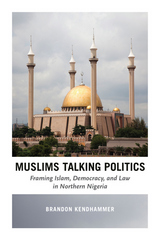 Muslims Talking Politics: Framing Islam, Democracy, and Law in Northern Nigeria
Brandon Kendhammer
University of Chicago Press, 2016 For generations Islamic and Western intellectuals and policymakers have debated Islam’s compatibility with democratic government, usually with few solid conclusions. But where—Brandon Kendhammer asks in this book—have the voices of ordinary, working-class Muslims been in this conversation? Doesn’t the fate of democracy rest in their hands? Visiting with community members in northern Nigeria, he tells the complex story of the stunning return of democracy to a country that has also embraced Shariah law and endured the radical religious terrorism of Boko Haram.
Kendhammer argues that despite Nigeria’s struggles with jihadist insurgency, its recent history is really one of tenuous and fragile reconciliation between mass democratic aspirations and concerted popular efforts to preserve Islamic values in government and law. Combining an innovative analysis of Nigeria’s Islamic and political history with visits to the living rooms of working families, he sketches how this reconciliation has been constructed in the conversations, debates, and everyday experiences of Nigerian Muslims. In doing so, he uncovers valuable new lessons—ones rooted in the real politics of ordinary life—for how democracy might work alongside the legal recognition of Islamic values, a question that extends far beyond Nigeria and into the Muslim world at large.
The Mussar Torah Commentary: A Spiritual Path to Living a Meaningful and Ethical Life
Rabbi Barry H. Block
Central Conference of American Rabbis, 2020 This Mussar-based commentary is a vital resource for Torah study, offering a thoughtful analysis of each of the 54 weekly parashot. Each essay in this anthology brings a parashah into juxtaposition with one of the Mussar middot (character traits as described within the Jewish school of ethics called Mussar), thereby providing an applied lens of Mussar teachings that helps us to delve deeper into our tradition with increased mindfulness and intention.
FINALIST: National Jewish Book Award (Contemporary Jewish Life and Practice category)
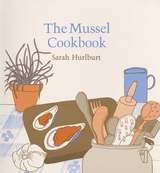 The Mussel Cookbook
Sarah Hurlburt
Harvard University Press, 1977 Tender, plump, and tasty, the blue mussel (Mytiius edulis) is treasured in most of the world's cuisines but strangely ignored in North American cooking. This edible mollusk is naturally abundant on both American coasts and easily cultivated. As over-harvesting makes many other seafoods ever more scarce and expensive, the blue mussel offers an inexpensive and attractive alternative to more costly and wasteful sources of protein. To tempt American palates and draw attention to this remarkably versatile and nutritious seafood, Sarah Hurlburt has written The Mussel Cookbook.
In her entertaining introduction, Hurlburt tells about mussels—how they live, how they saved a bridge from collapsing, why barrels of them appeared in American police stations, how they are farmed in Spain, France, and Holland. Then she offers over a hundred recipes. Whether you are a beginning cook or a devotee of haute cuisine, you will find recipes to match your abilities: simple dishes for the out-of-doors, appetizers, soups and stews, salads, casseroles, main dishes from abroad, and elegant party entrees. From Europe Hurlburt brings back paella, cannelloni, and souffle of mussels, among many others. From Asia come curried and stir-fried mussels as well as the delectable midia dolma. There are a dozen quick-and-easy tricks; there are flamed mussels and mussels Rockefeller. She describes how to clean and freeze mussels, and gives tips on how to use them.
Sarah Hurlburt in collaboration with her husband, Graham, has spent many years learning about the blue mussel. Together they have studied European methods of mussel farming and begun their own experimental Cultivation project in Massachusetts. Ms. Hurlburt's recipes have been featured in the New York Times, the Boston Globe, the Boston Herald American, and Harvard Magazine. Stories about the Hurlburts' adventures with mussels have appeared in the Washington Post, the Cornell Quarterly, and the Marine Fisheries Review. A discussion of their work has appeared in the Congressional Record.
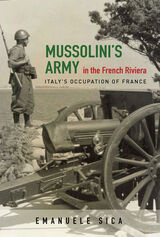 Mussolini's Army in the French Riviera: Italy's Occupation of France
Emanuele Sica
University of Illinois Press, 2016 In contrast to its brutal seizure of the Balkans, the Italian Army's 1940-1943 relatively mild occupation of the French Riviera and nearby alpine regions bred the myth of the Italian brava gente, or good fellow, an agreeable occupier who abstained from the savage wartime behaviors so common across Europe. Employing a multi-tiered approach, Emanuele Sica examines the simultaneously conflicting and symbiotic relationship between the French population and Italian soldiers. At the grassroots level, Sica asserts that the cultural proximity between the soldiers and the local population, one-quarter of which was Italian, smoothed the sharp angles of miscommunication and cultural faux-pas at a time of great uncertainty. At the same time, it encouraged a laxness in discipline that manifested as fraternization and black marketeering. Sica's examination of political tensions highlights how French prefects and mayors fought to keep the tatters of sovereignty in the face of military occupation. In addition, he reveals the tense relationship between Fascist civilian authorities eager to fulfil imperial dreams of annexation and army leaders desperate to prevent any action that might provoke French insurrection. Finally, he completes the tableau with detailed accounts of how food shortages and French Resistance attacks brought sterner Italian methods, why the Fascists' attempted "Italianization" of the French border city of Menton failed, and the ways the occupation zone became an unlikely haven for Jews.
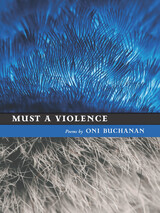 Must a Violence
Oni Buchanan
University of Iowa Press, 2012 Oni Buchanan explores the problem of violence against the undefended, elemental self through a variety of emotional and linguistic responses. The violation itself is unspecified but involves the forced transformation from an instinctual, animal self, housed in the body and in the senses, into a socialized, time-based “citizen,” familiar with death, decay, and systemic injustice. This exploration plays out through the twin challenges of perception and compassion. Perception can bind us to the known world or cut us loose in dangerous, horrific territory. Compassion for other creatures (wild or domesticated, and sometimes both) is born of perception, of the hard limits and surprising insights encountered by attending to the bodies, gestures, and plights of others. In Must a Violence, the tones and personalities vary widely but trust is always placed in the five senses. These poems gather and relay extraordinary sense data, from inaudible sounds to long-absent smells. These deeply musical poems demand the reader attend to their sounds: to the waveforms, repetitions, durations, and delicate interrelationships of words. In sounding out the problem of how to respond to violence and to the betrayal and domestication of that which is wild, this book counters with aesthetic violence and disruption of its own, opening the self to the unexpected powers of the senses and to encounters between "wildness" and "domestication" within the self. Though never easy, this openness creates the possibility for an all-enveloping love that touches and joins all animals, both nonhuman and human.
 Must We All Die?: Alaska's Enduring Struggle with Tuberculosis
Robert Fortuine
University of Alaska Press, 2024 Alaska Natives have struggled with the 'white plague' of tuberculosis for centuries. At last, physician and historian Robert Fortuine brings their story to light. He provides a comprehensive account of tuberculosis from its earliest occurrence in prehistory through the latest outbreaks, made more threatening by HIV/AIDS. Fortuine describes the courage and self-sacrifice of itinerant nurses who endured challenging and often dangerous conditions, as well as the efforts of doctors who fought cuts in funding as valiantly as they battled for the lives of their patients. Fortuine chronicles the removal of tuberculosis victims, many of them children, from their families and villages to hospitals in the Lower 48 states. He describes treatments, medical advances, and day-to-day life for the nurses, physicians, missionaries, and teachers who worked to stem the tide that killed and disabled thousands. The struggle against tuberculosis in Alaska is a story of triumph against untold suffering and crippling odds, but it is also a cautionary tale as an increasingly resistant strain of this disease has emerged in the twenty-first century. "Must We All Die?" is an encyclopedic contribution to the history of medicine and a tribute to those who fought tuberculosis and to the Alaska Natives who endured a cruel disease that destroyed families and ravaged villages.
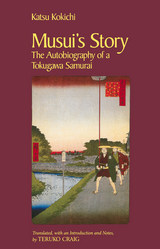 Musui's Story: The Autobiography of a Tokugawa Samurai
Kokichi Katsu; Translated by Teruko Craig
University of Arizona Press, 1988 A series of picaresque adventures set against the backdrop of a Japan still closed off from the rest of the world, Musui's Story recounts the escapades of samurai Katsu Kokichi. As it depicts Katsu stealing, brawling, indulging in the pleasure quarters, and getting the better of authorities, it also provides a refreshing perspective on Japanese society, customs, economy, and human relationships.
From childhood, Katsu was given to mischief. He ran away from home, once at thirteen, making his way as a beggar on the great trunk road between Edo and Kyoto, and again at twenty, posing as the emissary of a feudal lord. He eventually married and had children but never obtained official preferment and was forced to supplement a meager stipend by dealing in swords, selling protection to shopkeepers, and generally using his muscle and wits.
Katsu's descriptions of loyalty and kindness, greed and deception, vanity and superstition offer an intimate view of daily life in nineteenth-century Japan unavailable in standard history books. Musui's Story will delight not only students of Japan's past but also general readers who will be entranced by Katsu's candor and boundless zest for life.
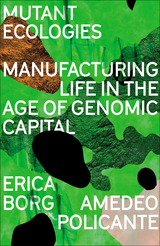 Mutant Ecologies: Manufacturing Life in the Age of Genomic Capital
Erica Borg
Pluto Press, 2022 How capitalism is reconfiguring the very texture of life Mutant Ecologies traces the spinning of new synthetic threads into the web of life. It is a critical cartography of the shifting landscapes of capital accumulation conjured by recent developments in genomic science, genome editing, and the biotech industry. CRISPR crops, fast-growing salmons, heat-resistant Slick™ cows, Friendly™ Mosquitoes, humanized mice, pigs growing human organs – these are but a few of the dazzling new life-forms that have recently emerged from corporate and university laboratories around the world, all promising to lubricate the circuits of capital accumulation in distinct ways. The deliberate induction of genetic mutations is increasingly central to business operations in a number of sectors, from agriculture to pharmaceuticals. While the Nobel Committee recently proclaimed the life sciences to have entered 'a new epoch', the authors show how these technological innovations continue to operate within a socio-historical context defined by the iron rules of capitalist competition and exploitation. Capital no longer contents itself by simply appropriating the living bodies of plants and animals. It purposefully designs its internal metabolism, and in that way, it redesigns the countless living vectors that constitute the global biosphere. It is driving a biological revolution, which will ripple through the everyday lives of people everywhere.
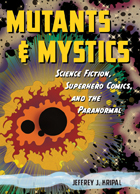 Mutants and Mystics: Science Fiction, Superhero Comics, and the Paranormal
Jeffrey J. Kripal
University of Chicago Press, 2011 In many ways, twentieth-century America was the land of superheroes and science fiction. From Superman and Batman to the Fantastic Four and the X-Men, these pop-culture juggernauts, with their "powers and abilities far beyond those of mortal men," thrilled readers and audiences—and simultaneously embodied a host of our dreams and fears about modern life and the onrushing future.
But that's just scratching the surface, says Jeffrey Kripal. In Mutants and Mystics, Kripal offers a brilliantly insightful account of how comic book heroes have helped their creators and fans alike explore and express a wealth of paranormal experiences ignored by mainstream science. Delving deeply into the work of major figures in the field—from Jack Kirby’s cosmic superhero sagas and Philip K. Dick’s futuristic head-trips to Alan Moore’s sex magic and Whitley Strieber’s communion with visitors—Kripal shows how creators turned to science fiction to convey the reality of the inexplicable and the paranormal they experienced in their lives. Expanded consciousness found its language in the metaphors of sci-fi—incredible powers, unprecedented mutations, time-loops and vast intergalactic intelligences—and the deeper influences of mythology and religion that these in turn drew from; the wildly creative work that followed caught the imaginations of millions. Moving deftly from Cold War science and Fredric Wertham's anticomics crusade to gnostic revelation and alien abduction, Kripal spins out a hidden history of American culture, rich with mythical themes and shot through with an awareness that there are other realities far beyond our everyday understanding.
A bravura performance, beautifully illustrated in full color throughout and brimming over with incredible personal stories, Mutants and Mystics is that rarest of things: a book that is guaranteed to broaden—and maybe even blow—your mind.
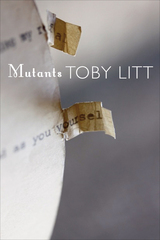 Mutants: Selected Essays
Toby Litt
Seagull Books, 2016 Toby Litt is best known for his “hip-lit” fiction, which, in its sharing of characters and themes across numerous stories and novels, has always taken an unusual, hybrid form. In Mutants, he applies his restless creativity to nonfiction. The book brings together twenty-six essays on a range of diverse topics, including writers and writing, and the technological world that informs and underpins it. Each essay is marked by Litt’s distinct voice, heedless of formal conventions and driven by a curiosity and a determination to give even the shortest piece enough conceptual heft to make it come alive. Taken as a whole, these pieces unexpectedly cohere into a manifesto of sorts, for a weirder, wilder, more willful fiction.
Praise for Toby Litt
“A genuinely individual talent with a positive relish for dealing with the contemporary aspects of the modern world.”—Scotsman
“Toby Litt is awfully good—he gives something new every time he writes.”—Muriel Spark
“He has invented a fresh, contemporary style—it will sing in the ears of this generation.”—Malcolm Bradbury
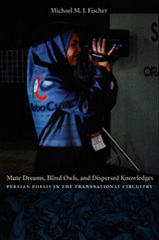 Mute Dreams, Blind Owls, and Dispersed Knowledges: Persian Poesis in the Transnational Circuitry
Michael M. J. Fischer
Duke University Press, 2004 Over the past decade Iranian films have received enormous international attention, garnering both critical praise and popular success. Combining his extensive ethnographic experience in Iran and his broad command of critical theory, Michael M. J. Fischer argues that the widespread appeal of Iranian cinema is based in a poetics that speaks not only to Iran’s domestic cultural politics but also to the more general ethical dilemmas of a world simultaneously torn apart and pushed together. Approaching film as a tool for anthropological analysis, he illuminates how Iranian filmmakers have incorporated and remade the rich traditions of oral, literary, and visual media in Persian culture. Fischer reveals how the distinctive expressive idiom emerging in contemporary Iranian film reworks Persian imagery that has itself been in dialogue with other cultures since the time of Zoroaster and ancient Greece. He examines a range of narrative influences on this expressive idiom and imagery, including Zoroastrian ritual as it is practiced in Iran, North America, and India; the mythic stories, moral lessons, and historical figures written about in Iran’s national epic, the Shahnameh; the dreamlike allegorical world of Persian surrealism exemplified in Sadeq Hedayat’s 1939 novella The Blind Owl; and the politically charged films of the 1960s and 1970s. Fischer contends that by combining Persian traditions with cosmopolitan influences, contemporary Iranian filmmakers—many of whom studied in Europe and America—provide audiences around the world with new modes of accessing ethical and political experiences.
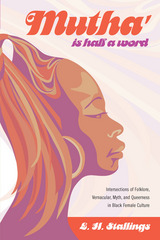 Mutha’ Is Half a Word: Intersections of Folklore, Vernacular, Myth, and Queerness in Black Female Culture
L. H. Stallings
Ohio State University Press, 2007 Mutha’ is Half a Word: Intersections of Folklore, Vernacular, Myth, and Queerness in Black Female Culture explores the importance of sexual desire in the formation of radical Black females’ subjectivities in Black women’s culture through the trope of the indefinable trickster figure. L. H. Stallings offers distinct close readings of understudied African American women’s texts through a critical engagement with folklore and queer theory. To date, most studies on the trickster figure have rarely reflected the boldness and daring of the figure itself. Emblematic of change and transgression, the trickster has inappropriately become the methodological tool for conservative cultural studies analysis. Mutha’ is Half a Word strives to break that convention. This book provides a much-needed analysis of trickster tradition in regard to gender, sexuality, and Black female sexual desire. It is the only study to focus specifically on trickster figures and African American female culture. In addition, it contributes to conversations regarding the cultural representation of Black female desire in ways that are not strategically invested in heteronormative binaries of male/female and heterosexual/homosexual. The study is distinctly different because it explores folklore, vernacular, and trickster strategies of queerness alongside theories of queer studies to create new readings of desire in literary texts, hip-hop and neo-soul music, and comedic performances by Black females.
Mutilating The Body: Identity In Blood And Ink
Kim Hewitt
University of Wisconsin Press, 1997 Kim Hewitt explores self-mutilation through history and across cultural divisions, finding these acts “positive expressions of social custom, individualism and resourcefulness . . . symptomatic of crises of identity, religious faith, or modern social structures.” In modern contexts, such ancient rituals continue to function as an avenue of symbolic death and rebirth. In her analysis of the origins and motivations of body modification, the author draws upon psychological, medical, and cultural theories on self-inflicted pain—tattooing and scarification as well as fasting, bulimia, and some performance art. She finds such contemporary acts of self-mutilation may “express a change in how society perceives marginalization.”
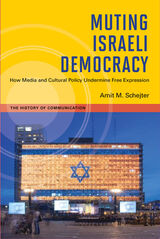 Muting Israeli Democracy: How Media and Cultural Policy Undermine Free Expression
Amit M. Schejter
University of Illinois Press, 2009 The result of years of critical analysis of Israeli media law, this book argues that the laws governing Israeli electronic media are structured to limit the boundaries of public discourse. Amit M. Schejter posits the theory of a "mute democracy," one in which the media are designed to provide a platform for some voices to be heard over others. While Israel's institutions may be democratic, and while the effect of these policies may be limited, this book contends that free speech in Israel is institutionally muted to ensure the continued domination of the Jewish majority and its preferred interpretation of what Israel means as a Jewish-democratic state. Analyzing a wide range of legal documents recorded in Israel from 1961 to 2007, Muting Israeli Democracy demonstrates in scrupulous detail how law and policy are used to promote the hegemonic national culture through the constraints and obligations set on electronic media.
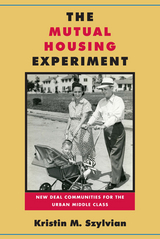 The Mutual Housing Experiment: New Deal Communities for the Urban Middle Class
Kristin M Szylvian
Temple University Press, 2016 In 1940, the U.S. Federal Works Agency created an experimental housing program for industrial workers. Eight model communities were leased and later sold to the residents, who formed a non-profit corporation called a mutual housing association. Further development of housing under the mutual housing plan was stymied by controversies around radical politics and race, and questions over whether the federal government should be involved in housing policy.
In The Mutual Housing Experiment, Kristin Szylvian examines 32 mutual housing associations that are still in existence today, and offers strong evidence to show that federal public housing policy was not the failure that critics allege. She explains that mutual home ownership has not only proven its economic value, but has also given rise to communities characterized by a strong sense of identity and civic engagement.
The book shows that this important period in urban and housing policy provides critical lessons for contemporary housing analysts who continue to emphasize traditional home ownership for all wage-earners despite the home mortgage crisis of 2008.
Mutual Images: Essays in American-Japanese Relations
Akira Iriye
Harvard University Press, 1975 Images play a fundamental role in relations among peoples. American and Japanese scholars have been among the foremost students of images in international and intercultural relations. Building on the historiographical achievements in the two countries, these essays aim further to explore aspects of Japanese-American mutual perceptions.
The contributors to this volume provide pieces of a puzzle, authentic but partial elements of a total picture. They examine the sources, ranges, uses (and misuses), and constituencies of images. They propose various ways of studying this extremely elusive subject and show how an examination of American-Japanese perception can contribute to a better understanding of Japanese history and American history. We see instances of misperceptions and misunderstandings, but also a streak of open-mindedness and flexibility in both Japan and the United States.
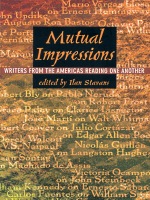 Mutual Impressions: Writers from the Americas Reading One Another
Ilan Stavans, ed.
Duke University Press, 1999 It is commonly assumed that the United States and Latin America, culturally so different, move artistically to very different rhythms. Also common is the assumption that, with rare exception, the literary figures on one side of the global North/South divide have had little interest in the work of their counterparts. With Mutual Impressions Ilan Stavans dispels these notions by showing how solid the bridges between writers and across borders have been, at least since the early days of this century, and how crucial they are likely to become as we enter the next millennium. Divided into symmetrical halves—South reading North and North reading South—the book presents essays by leading novelists, poets, and other writers that focus on the work of another literary figure from across the divide. Borges, for example, finds in Hawthorne the perfect precursor to his own interest in allegories; Katherine Anne Porter examines José Joaquín Fernández de Lizardi as a rascal whose picaresque views of life in The Itching Parrot served to launch the Latin American novel; Cortázar’s study of the plots and style of Poe shows an affinity that left an indelible mark on the Argentine’s short fiction; Susan Sontag views Machado de Assis as the ultimate mirror, a proto–postmodernist. With other essays by Thomas Pynchon, William H. Gass, John Updike, Gabriel García Márquez, Alejo Carpentier, John Barth, Robert Coover, Pedro Henríquez Ureña, Grace Paley, Juan Carlos Onetti, and Mark Strand, among others, Mutual Impressions offers a remarkable view of the connections that comprise a literary tradition of the Americas. It is a book that will surprise and enliven its readers as it informs and awakens in them a sense of wonder. Contributors. John Barth, José Bianco, Robert Bly, Jorge Luis Borges, Alejo Carpentier, Hiber Conteris, Robert Coover, Julio Cortázar, Ezequiel Martínez Estrada, Waldo Frank, Carlos Fuentes, William H. Gass, Nicolás Guillén, William Kennedy, Mario Vargas Llosa, Gabriel García Márquez, José Martí, Pablo Neruda, Victoria Ocampo, Juan Carlos Onetti, Grace Paley, Octavio Paz, Katherine Anne Porter, Thomas Pynchon, Kenneth Rexroth, Antonio Benítez Rojo, Barbara Probst Solomon, Susan Sontag, Ilan Stavans, Mark Strand, John Updike, Pedro Henríque Ureña, Derek Walcott, Paul West
Mutual Integration in Immigration Society: An Epistemic Argument
Bodi Wang
Campus Verlag, 2023 A compelling argument for adopting the concept of “mutual integration” to overcome injustice and enhance social solidarity.
The public culture of the receiving society and the dominant understanding of belonging and political membership can influence the social participation of immigrants as much as immigration law. However, current discussions of integration focus primarily on the distribution of rights and neglect the role of tacit knowledge. Through a systematical and philosophical analysis of identity’s role in policymaking, governance, and social practice, Bodi Wang shows how a one-sided understanding of integration resembles “assimilation” and why integration should be expected from locals as well. This argument weaves together extensive findings in sociology, history, critical race theory, and Chinese philosophy with ethics and migration studies.
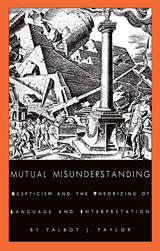 Mutual Misunderstanding: Scepticism and the Theorizing of Language and Interpretation
Talbot J. Taylor
Duke University Press, 1992 Do others understand what we say or write? Do we understand them? Theorists of language and interpretation claim to be more concerned with questions about "what" we understand and "how" we understand, rather than with the logically prior question "whether" we understand each other. An affirmative answer to the latter question is apparently taken for granted. However, in Mutual Misunderstanding, Talbot J. Taylor shows that the sceptical doubts about communicational understanding do in fact have a profoundly important, if as yet unacknowledged, function in the construction of theories of language and interpretation.
Mutual Misundertanding thus presents a strikingly original analysis of the rhetorical patterns underlying Western linguistic thought, as exemplified in the works of John Locke, Jacques Derrida, Gottlob Frege, Jonathan Culler, Noam Chomsky, Ferdinand de Saussure, H. Paul Grice, Michael Dummet, Stanley Fish, Alfred Schutz, Barbara Herrnstein Smith, Harold Garfinkel, and others.
This analysis reveals how, by the combined effect of appeals to "commonsense" and anxieties about implications of relativism, scepticism has a determining role in the discursive development of a number of the intellectual disciplines making up the "human sciences" today, including critical theory, literary hermeneutics, philosophy of language and logic, communication theory, discourse and conversation analysis, pragmatics, stylistics, and linguistics. Consequently, this provocative study will be of value to readers from a wide variety of disciplinary backgrounds.
 Mutual Reflections: Jews and Blacks in American Art
Heyd, Milly
Rutgers University Press, 1998 Relations between Jewish Americans and African Americans have always had a unique, complex character. Both groups have long been considered outsiders in mainstream American society, sharing a history in which both their physical appearance and moral attributes were denigrated. African Americans have drawn parallels between their situation in the United States and the Jews' struggles for freedom when they were slaves in Egypt. Jewish Americans have often become involved in the black cause through their interest in social issues and association with liberal politics. Mutual Reflections is the first book to examine this many-layered relationship through its visual dimension. Milly Heyd investigates how artists of both backgrounds have viewed each other during the last hundred years-how the visual languages and the-matic choices of their art have reflected changing concerns from symbiosis to disillusionment. She explores a wide range of artistic mediums: painting, sculpture, cartoons, comic strips, and installations. Interviews with artists provide additional insight. The post modern discourse poses questions problematizing ethnic and racial stereotyping. As Heyd states, when an artist of one group investigates the other group, that person is embarking on a journey of self-discovery. And while that journey can lead to disillusionment and criticism, the artist's vision-and final work of art-very often can help put all of us on our own paths of self-discovery.
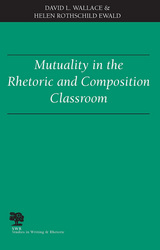 Mutuality in the Rhetoric and Composition Classroom
David L. Wallace and Helen Rothschild Ewald
Southern Illinois University Press, 2000 In Mutuality in the Rhetoric and Composition Classroom, David L. Wallace and Helen Rothschild Ewald point out the centrality of rhetoric in the academy, asserting the intimate connection between language and knowledge making. They also stress the need for a change in the roles of teachers and students in today’s classroom. Their goal is mutuality, a sharing of authority among teachers and students in the classroom that would allow everyone an equal voice in the communication of ideas. Arguing that the impetus to empower students by engaging them in liberatory and emancipatory pedagogies is simply not enough, Wallace and Ewald seek to “help readers identify, theorize, and work through problems faced by teachers who already value alternative approaches but who are struggling to implement them in the classroom." It is not the teacher’s job merely to convey a received body of knowledge, nor is knowledge a prepackaged commodity to be delivered by the teacher. It is “constituted in the classroom through the dialogic interaction between teachers and students alike.” Wallace and Ewald see mutuality as potentially transformative, but they “do not believe that the nature or that transformation can be designated in advance.” Rather it is located in the interaction between teachers and students. Wallace and Ewald look at how the transformative notion of mutuality can be effected in classrooms in three important ways: reconstituting classroom speech genres, redesigning the architecture of rhetoric and writing courses, and valuing students’ interpretive agency in classroom discourse. Mutuality in alternative pedagogy, they assert, is neither a single approach nor a specific set of valued practices; it is a continuous collaboration between teachers and students.
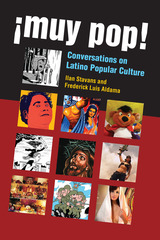 ¡Muy Pop!: Conversations on Latino Popular Culture
Ilan Stavans and Frederick Luis Aldama
University of Michigan Press, 2013 Although investigations of Hispanic popular culture were approached for decades as part of folklore studies, in recent years scholarly explorations—of lucha libre, telenovelas, comic strips, comedy, baseball, the novela rosa and the detective novel, sci-fi, even advertising—have multiplied. What has been lacking is an overarching canvas that offers context for these studies, focusing on the crucial, framing questions: What is Hispanic pop culture? How does it change over time and from region to region? What is the relationship between highbrow and popular culture in the Hispanic world? Does it make sense to approach the whole Hispanic world as homogenized when understanding Hispanic popular culture? What are the differences between nations, classes, ethnic groups, religious communities, and so on? And what distinguishes Hispanic popular culture in the United States? In ¡Muy Pop!, Ilan Stavans and Frederick Luis Aldama carry on a sustained, free-flowing, book-length conversation about these questions and more, concentrating on a wide range of pop manifestations and analyzing them at length. In addition to making Hispanic popular culture visible to the first-time reader, ¡Muy Pop! sheds new light on the making and consuming of Hispanic pop culture for academics, specialists, and mainstream critics.
Muzzled Oxen: Reaping Cotton and Sowing Hope in 1920s Arkansas
Genevieve Grant Sadler
Butler Center for Arkansas Studies, 2014 In the 1920s Genevieve Sadler left her home in California for what she thought would be a short visit to the Arkansas farm where her husband grew up. The visit lasted seven years, and Sadler’s life was changed forever in the time she spent among the cotton farms near Dardanelle in Yell County, Arkansas, on the eve of the Great Depression. Based on her long and detailed letters to her mother, she wrote this engaging memoir with its rich portrait of a small town and its inhabitants, many of whom were poor cotton farmers working on shares.
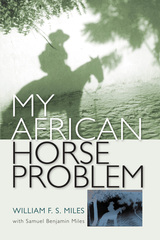 My African Horse Problem
William F. S. Miles
University of Massachusetts Press, 2008
In February 2000, William Miles set off from Massachusetts for a Muslim village in West Africa with his ten-year-old son Samuel to settle an inheritance dispute over a horse. National Public Radio was so intrigued with this story that All Things Considered broadcast his pre-departure testament, as well as a follow-up commentary on what actually happened.
My African Horse Problem recounts the intricacies of this unusual father-son expedition, a sometimes harrowing two-week trip that Samuel joined as "true heir" to the disputed stallion. It relates the circumstances leading up to the dispute and describes the intimacy of a relationship spanning a quarter century between William Miles and the custodians of his family horse—Islamic village friends eking out a precarious existence along the remote sub-Saharan borderline between Nigeria and Niger.
My African Horse Problem is a multi-layered narrative—part memoir, part ethnography—reaching back to Miles's days as a Peace Corps volunteer in Niger in the 1970s and a Fulbright scholar in the 1980s. At a deeper level, the story juxtaposes the idealistic and sometimes irresponsible tendencies of a young university graduate with the parental concerns of a middle-aged, tenured professor. Miles wonders if he was justified in exposing Sam to some of the worst health risks on earth, mainly to restore tenuous ties with long-ago friends in the African bush. Was it reckless to make his son illegally cross international boundaries, in a quixotic quest for justice and family honor? My African Horse Problem is more than an adventurer's tale with a unique story line: it is a father-son travel rumination, leavened by Sam's journal entries that help his father see Africa anew through a child's fresh eyes. In this era of religious and racial tensions, it is also a reaffirmation—within a black Muslim context—of the basic human imperative of trust.
My Alexandria: POEMS
Mark Doty
University of Illinois Press, 1995 This is the first cloth edition of one of the most highly praised and touching collections of poems to appear in recent years. In selecting it for the National Poetry Series, Philip Levine said: "The courage of this book is that it looks away from nothing: the miracle is that wherever it looks it finds poetry. . . . Mark Doty is a maker of big, risky, fearless poems in which ordinary human experience becomes music."
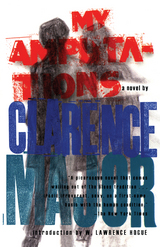 My Amputations
Clarence Major
University of Alabama Press, 1986 Originally published in 1986, this new edition returns to print a classic, influential work of American fiction
The author of the acclaimed novel Reflex and Bone Structure returns here in My Amputations to the question of identity, the double, adventure, detection, and mystery, but with more hypnotic power and range. In My Amputations he has his protagonist, Mason Ellis (who may just be “a desperate ex-con” or a wronged American novelist out to right the wrong done to him), jump through flaming loops like a trained dog, so to speak. In other words, there seems to be no end to the troubles Mason Ellis faces.
His story takes him from the South Side of Chicago, to New York, with a stint in Attica prison, across America and Europe and into the primal depths of Africa. Mason, all the while, tries to convince the reader that he is the important American writer he says he is. Upon his release from prison he sets out to prove his claim. After an audacious bank-robbery and a couple of burglaries that are hilarious, he goes into hiding to escape the malice of one of his cohorts, and eventually flees to Europe. The irony is that he is now as much the runner as the seeker. After encounters with a Zuni ex-folksinger, kidnappers, the New York underworld, literary groupies, an Italian swordsman, a violent German secret society, and an anti-bellum cotillion in rural Greece, he finds himself face to face (behind a mask) with his own destiny.
My Bayou: New Orleans through the Eyes of a Lover
Constance Adler
Michigan State University Press, 2012
A vividly described and intensely personal memoir, My Bayou charts a personal and spiritual transformation along the fabled banks of Bayou Saint John in New Orleans. When Constance Adler moves to New Orleans, she begins what becomes a lasting love affair with the city, and especially the bayou—a living entity and the beating heart of local culture. Rites of passage, celebrations, mysterious accidents, and magic all take place on its banks, leading Adler to a vibrant awareness of the power of being part of a community. That faith is tested in the wake of Hurricane Katrina, and is ultimately proven right, as Bayou Saint John begins to rebuild.
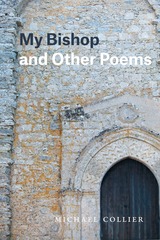 My Bishop and Other Poems
Michael Collier
University of Chicago Press, 2018 Think of a time when you’ve feigned courage to make a friend, feigned forgiveness to keep one, or feigned indifference to simply stay out of it. What does it mean for our intimacies to fail us when we need them most?
The poems of this collection explore such everyday dualities—how the human need for attachment is as much a source of pain as of vitality and how our longing for transcendence often leads to sinister complicities. The title poem tells the conflicted and devastating story of the poet’s friendship with the now-disgraced Bishop of Phoenix, Arizona, interweaving fragments of his parents’ funerals, which the Bishop concelebrated, with memories of his childhood spiritual leanings and how they were disrupted by a pedophilic priest the Bishop failed to protect him from.
This meditation on spiritual life, physical death, and betrayal is joined by an array of poised, short lyrics and expansive prose poems exploring how the terror and unpredictability of our era intrudes on our most intimate moments. Whether Michael Collier is writing about an airline disaster, Huey Newton’s trial, Thomas Jefferson’s bees, a piano in the woods, or his own fraught friendship with the disgraced Catholic Bishop, his syntactic verve, scrupulously observed detail, and flawless ear bring the felt—and sometimes frightening—dimensions of the mundane to life. Throughout, this collection pursues a quiet but ferocious need to get to the bottom of things.
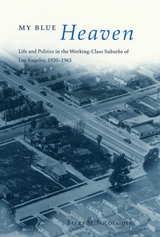 My Blue Heaven: Life and Politics in the Working-Class Suburbs of Los Angeles, 1920-1965
Becky M. Nicolaides
University of Chicago Press, 2002 In the 1920s, thousands of white migrants settled in the Los Angeles suburb of South Gate. Six miles from downtown and adjacent to Watts, South Gate and its neighboring communities served as L.A.'s Detroit, an industrial belt for mass production of cars, tires, steel, and other durable goods. Blue-collar workers built the suburb literally from the ground up, using sweat equity rather than cash to construct their own homes.
As Becky M. Nicolaides shows in My Blue Heaven, this ethic of self-reliance and homeownership formed the core of South Gate's identity. With post-World War II economic prosperity, the community's emphasis shifted from building homes to protecting them as residents tried to maintain their standard of living against outside threats—including the growing civil rights movement—through grassroots conservative politics based on an ideal of white homeowner rights. As the citizens of South Gate struggled to defend their segregated American Dream of suburban community, they fanned the flames of racial inequality that erupted in the 1965 Watts riots.
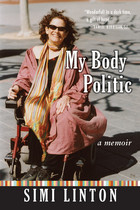 My Body Politic: A Memoir
Simi Linton
University of Michigan Press, 2005 "I read My Body Politic with admiration, sometimes for the pain that all but wept on the page, again for sheer exuberant friendships, for self-discovery, political imagination, and pluck. . . . Wonderful! In a dark time, a gift of hope.
-Daniel Berrigan, S.J.
"The struggles, joys, and political awakening of a firecracker of a narrator. . . . Linton has succeeded in creating a life both rich and enviable. With her crackle, irreverence, and intelligence, it's clear that the author would never be willing to settle. . . . Wholly enjoyable."
-Kirkus Reviews
"Linton is a passionate guide to a world many outsiders, and even insiders, find difficult to navigate. . . . In this volume, she recounts her personal odyssey, from flower child . . . to disability-rights/human rights activist."
-Publishers Weekly
"Witty, original, and political without being politically correct, introducing us to a cast of funny, brave, remarkable characters (including the professional dancer with one leg) who have changed the way that 'walkies' understand disability. By the time Linton tells you about the first time she was dancing in her wheelchair, you will feel like dancing, too."
---Carol Tavris, author of Anger: The Misunderstood Emotion
"This astonishing book has perfect pitch. It is filled with wit and passion. Linton shows us how she learned to 'absorb disability,' and to pilot a new and interesting body. With verve and wonder, she discovers her body's pleasures, hungers, surprises, hurts, strengths, limits, and uses."
-Rosemarie Garland-Thomson, author of Extraordinary Bodies: Figuring Physical Disability in American Culture and Literature
"An extraordinarily readable account of life in the fast lane... a brilliant autobiography and a great read."
-Sander L. Gilman, author of Fat Boys: A Slim Book
While hitchhiking from Boston to Washington, D.C., in 1971 to protest the war in Vietnam, Simi Linton was involved in a car accident that paralyzed her legs and took the lives of her young husband and her best friend. Her memoir begins with her struggle to regain physical and emotional strength and to resume her life in the world. Then Linton takes us on the road she traveled (with stops in Berkeley, Paris, Havana) and back to her home in Manhattan, as she learns what it means to be a disabled person in America.
Linton eventually completed a Ph.D., remarried, and began teaching at Hunter College. Along the way she became deeply committed to the disability rights movement and to the people she joined forces with. The stories in My Body Politic are populated with richly drawn portraits of Linton's disabled comrades, people of conviction and lusty exuberance who dance, play-and organize--with passion and commitment.
My Body Politic begins in the midst of the turmoil over Vietnam and concludes with a meditation on the U.S. involvement in the current war in Iraq and the war's wounded veterans. While a memoir of the author's gradual political awakening, My Body Politic is filled with adventure, celebration, and rock and roll-Salvador Dali, James Brown, and Jimi Hendrix all make cameo appearances. Linton weaves a tale that shows disability to be an ordinary part of the twists and turns of life and, simultaneously, a unique vantage point on the world.
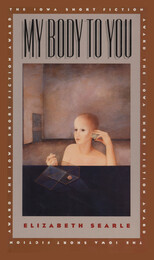 My Body To You
Elizabeth Searle
University of Iowa Press, 1993 In the thirteen stories of My Body to You, thirteen women or girls pilot their own bodies through a shifting universe of lovers old and young, parents devoted and destructive, sisters of different sexes, children and adults living in the mysterious world of autism. All these characters share keen powers of observations and a heightened sensuality. In a wild variety of settings, they struggle to control—or dare to abandon themselves to—their intensely private passions.
A woman in love with a gay man she calls Sister Kin attempts to escape the bonds of her own body. An eighteen-year-old virgin enters into a passionate affair with an older man who turns out to be a virgin of a different sort. A special education teacher in a school for aggressive teenagers finds herself attracted to another teacher, also female. An intelligent outcast girl bonds with her mindlessly seductive mother to form “one person.”
Searle reveals other characters through inventive and often comic feats of narrative daring. A girl grows into womanhood during a single family dinner that spans twenty years. A middle-aged wife, once dubbed “The First Most Beautiful Woman in the World,” watches her former selves parade before her family in a lively evening of home movies. Two women—one recently divorced, the other a group home resident in love with The Who—join forces as they figure out “What to Do in an Emergency.” An old woman experiences both physical breakdown and spiritual breakdown in a supermarket's vegetable department. A young woman is drawn into the emotional and sexual life of an autistic boy obsessed with the number 8.
Each of these stories is written in a language that strives to match the intensity of Searle's characters; each gives the reader an exceptionally intimate portrait of a unique female and the central, sensual mystery of her body.
My Bondage and My Freedom
Frederick Douglass
University of Illinois Press, 1988 This is the first annotated edition of a work Eric J. Sundquist has called "a classic text of the American Renaissance." As Henry Louis Gates, Jr., has pointed out, My Bondage and My Freedom has been largely ignored by critics, in part because it is longer and less accessible than Narrative of the Life of Frederick Douglass but also because it has not up to now been "read" by a sensitive critic. "The latter reason is paramount and urgently needed to be addressed, and William Andrews is just the person to introduce Douglass's second autobiography to our generation of readers. He has few peers in nineteenth-century black criticism."
My Brother is Getting Arrested Again
Daisy Fried
University of Pittsburgh Press, 2006 My Brother Is Getting Arrested Again celebrates the contradictions and quandaries of contemporary American life. These subversive, frequently self-mocking narrative poems are by turns funny and serious, book-smart and street-smart, lyrical and colloquial. Set in Philadelphia, Paris and New Jersey, the poems are at ease with sex happiness and sex trouble, girl-talk and grownup married life, genre parody and antiwar politics, family warfare and family love. Unsentimental but full of emotion, Daisy Fried's new collection, a finalist for the 2005 James Laughlin Prize, is unforgettable.
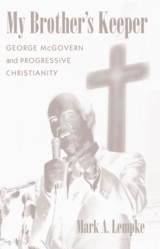 My Brother's Keeper: George McGovern and Progressive Christianity
Mark A. Lempke
University of Massachusetts Press, 2017 George McGovern is chiefly remembered for his landslide loss to Richard Nixon in 1972. Yet at the time, his candidacy raised eyebrows by invoking the prophetic tradition, an element of his legacy that is little studied. In My Brother's Keeper, Mark A. Lempke explores the influence of McGovern's evangelical childhood, Social Gospel worldview, and conscientious Methodism on a campaign that brought antiwar activism into the mainstream.
McGovern's candidacy signified a passing of the torch within Christian social justice. He initially allied with the ecumenical movement and the mainline Protestant churches during a time when these institutions worked easily with liberal statesmen. But the senator also galvanized a dynamic movement of evangelicals rooted in the New Left, who would dominate subsequent progressive religious activism as the mainline entered a period of decline. My Brother's Keeper argues for the influential, and often unwitting, role McGovern played in fomenting a "Religious Left" in 1970s America, a movement that continues to this day. It joins a growing body of scholarship that complicates the dominant narrative of that era's conservative Christianity.
My Brother's Madness: A Memoir
Paul Pines
Northwestern University Press, 2007 My Brother's Madness is based on the author's relationship with his brother—who had a psychotic breakdown in his late forties—and explores the unfolding of two intertwined lives and the nature of delusion. Circumstances lead one brother from juvenile crime on the streets of Brooklyn to war-torn Vietnam, to a fast-track life as a Hollywood publicist to owning and operating The Tin Palace, one of New York's most legendary jazz clubs, while his brother falls into, and fights his way back from, a delusional psychosis. My Brother's Madness is part thriller, part exploration that not only describes the causes, character, and journey of mental illness, but also makes sense of it. It is ultimately a story of our own humanity, and answers the question, Am I my brother's keeper?
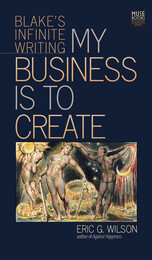 My Business Is to Create: Blake's Infinite Writing
Eric G. Wilson
University of Iowa Press, 2011 p.MsoNormal, li.MsoNormal, div.MsoNormal { margin: 0in 0in 0.0001pt; font-size: 12pt; font-family: "Times New Roman"; }div.Section1 { page: Section1; } For William Blake, living is creating, conforming is death, and “the imagination . . . is the Human Existence itself.” But why are imagination and creation—so vital for Blake—essential for becoming human? And what is imagination? What is creation? How do we create? Blake had answers for these questions, both in word and in deed, answers that serve as potent teachings for aspiring writers and accomplished ones alike. Eric G. Wilson’s My Business Is to Create emulates Blake, presenting the great figure’s theory of creativity as well as the practices it implies. In both his life and his art, Blake provided a powerful example of creativity at any cost—in the face of misunderstanding, neglect, loneliness, poverty, even accusations of insanity. Just as Los cries out in Jerusalem: The Emanation of the Giant Albion, “I must Create a System, or be enslav'd by another Man's; / I will not Reason and Compare: my business is to Create,” generations of writers and artists as diverse as John Ruskin, William Butler Yeats, Allen Ginsberg, Philip K. Dick, songwriter Patti Smith, the avant-garde filmmaker Jim Jarmusch, and the underground comic-book artist R. Crumb have taken Blake’s creed as inspiration. Unwilling to cede his vision, Blake did more than simply produce iconoclastic poems and paintings; he also cleared a path toward spiritual and ethical enlightenment. To fashion powerful art is to realize the God within and thus to feel connected with enduring vitality and abundant generosity. This is Blake’s everlasting gospel, distilled here in an artist’s handbook of interest to scholars, writing teachers, and those who have made writing their way of life. My Business Is to Create is indispensable for all serious artists who want to transform their lives into art and make their art more alive.
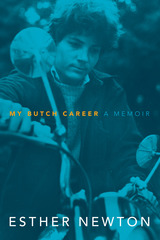 My Butch Career: A Memoir
Esther Newton
Duke University Press, 2018 In My Butch Career Esther Newton tells the compelling, disarming, and at times sexy story of her struggle to write, teach, and find love, all while coming to terms with her identity. Newton recounts a series of traumas and conflicts, from being molested as a child to her failed attempts to live a “normal,” straight life in high school and college. She discusses being denied tenure at Queens College and nearly again so at SUNY Purchase. With humor and grace, she describes her introduction to middle-class gay life and her love affairs. By age forty, where Newton's narrative ends, she began to achieve personal and scholarly stability in the company of the first politicized generation of out lesbian and gay scholars with whom she helped create gender and sexuality studies. Affecting and immediate, My Butch Career is a story of a gender outlaw in the making, an invaluable account of a beloved and influential figure in LGBT history, and a powerful reminder of only how recently it has been possible to be an openly queer academic.
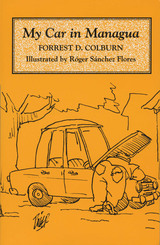 My Car in Managua
By Forrest D. Colburn
University of Texas Press, 1991 Histories of revolutions often focus on military, political, or economic upheavals but sometimes neglect to connect these larger events to the daily lives of "ordinary" people. Yet the peoples' perception that "things are worse than before" can topple revolutionary governments, as shown by the recent defeat of the Sandinista regime in Nicaragua and the governments of Eastern Europe. Providing the kind of prosaic, revealing details that more formal histories have excluded, My Car in Managua offers an objective, often humorous description of the great difficulties and occasional pleasures of life in Nicaragua during the Sandinista revolution. During a year's work (1985-1986) at the Instituto Centroamericano de Administración de Empresas (INCAE), Forrest Colburn purchased a dilapidated car—and with it an introduction to everyday life in Nicaragua. His discoveries of the length of time required to register the car (approximately six weeks), the impossibility of finding spare parts (except when U.S. dollars were applied to the search), and the fact that "anyone getting into a car in Managua can be charged a small fee [for car watching] by anyone else" all suggest the difficulties most Nicaraguans faced living in a devastated economy. Drawing on experiences from visits throughout the revolutionary period (1979-1989), Colburn also sheds light on how the Revolution affected social customs and language, gender roles and family relationships, equality and authority, the availability of goods and services, the status of ethnic minorities, and governmental and other institutions. Illustrations by Nicaragua's celebrated political cartoonist Róger Sánchez Flores enliven the lucid text.
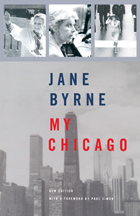 My Chicago
Jane Byrne
Northwestern University Press, 2003 By the end of her first meeting with the late mayor Richard J. Daley, Jane Byrne had been questioned, berated, and told she might, one day, reach the House but probably not the Senate-and she had also reduced him to tears. That would be but the first of many altercations in her pioneering political career.
My Chicago is the story of Jane Byrne's rise from young campaign worker to the mayor's office, all within the bruising arena of Chicago politics. Part sociopolitical history, part memoir, it begins with a history of the city and her early life, before she enters politics as a paid staff member of JFK's presidential campaign and, soon after, begins service in the Chicago Machine, but not of it.
Her view from the inside allows Byrne to sketch portraits of Daley, for whom she eventually worked, members of the Kennedy family, and Presidents Carter and Reagan. And, of course, it provides a fascinating perspective on the battle to succeed Daley, which ended with her own triumph over the Machine and a controversial term as mayor, which saw her begin development across the city and (famously) move into the Cabrini-Green housing project. The first memoir by a Chicago mayor in two generations, My Chicago is a valuable history as well as an entertaining look at no-holds-barred city politics.
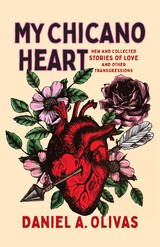 My Chicano Heart: New and Collected Stories of Love and Other Transgressions
Daniel A. Olivas
University of Nevada Press, 2024 My Chicano Heart is a collection of author Daniel A. Olivas’s favorite previously published tales about love, along with five new stories, that explore the complex, mysterious, and occasionally absurd machinations of people who simply want to be appreciated and treasured. Readers will encounter characters who scheme, search, and flail in settings that are sometimes fantastical and other times mundane: a man who literally gives his heart to his wife who keeps it beating safely in a wooden box; a woman who takes a long-planned trip through New Mexico but, mysteriously, without the company of her true love; a lonely man who gains a remarkably compatible roommate who may or may not be real—just to name a few of the memorable and often haunting characters who fill these pages. Olivas’s richly realized stories are frequently infused with his trademark humor, and readers will delight in—and commiserate with—his lovestruck characters.
Each story is drawn from Olivas’s nearly twenty-five years of experience writing fiction deeply steeped in Chicano and Mexican culture. Some of the stories are fanciful and full of magic, while others are more realistic, and still others border on noir. All touch upon that most ephemeral and confounding of human emotions: love in all its wondrous forms.
My City Highrise Garden
Kleit,Micah
Rutgers University Press, 2017 Gardening on rooftops, balconies, and terraces is a popular trend. After thirty-five years of experience, Susan Brownmiller writes with honesty and humor about her oasis twenty floors above a Manhattan street.
She reports the catastrophes: losing daytime access during building-wide renovations; assaults from a mockingbird during his mating season. And the joys: a peach tree fruited for fifteen years; the windswept birches lasted for twenty-five. Butterflies and bees pay annual visits. She pampers a buddleia, a honeysuckle, roses, hydrangeas, and more. Her adventures celebrate the tenacity of nature, inviting readers to marvel at her garden’s resilience, and her own.
Enhanced by over thirty color photographs, this passionate account of green life in a gritty, urban environment will appeal to readers and gardeners wherever they dwell.
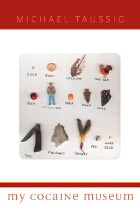 My Cocaine Museum
Michael Taussig
University of Chicago Press, 2004 In this book, a make-believe cocaine museum becomes a vantage point from which to assess the lives of Afro-Colombian gold miners drawn into the dangerous world of cocaine production in the rain forest of Colombia's Pacific Coast. Although modeled on the famous Gold Museum in Colombia's central bank, the Banco de la República, Taussig's museum is also a parody aimed at the museum's failure to acknowledge the African slaves who mined the country's wealth for almost four hundred years.
Combining natural history with political history in a filmic, montage style, Taussig deploys the show-and-tell modality of a museum to engage with the inner life of heat, rain, stone, and swamp, no less than with the life of gold and cocaine.
This effort to find a poetry of words becoming things is brought to a head by the explosive qualities of those sublime fetishes of evil beauty, gold and cocaine. At its core, Taussig's museum is about the lure of forbidden things, charged substances that transgress moral codes, the distinctions we use to make sense of the world, and above all the conventional way we write stories.
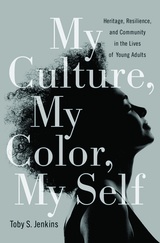 My Culture, My Color, My Self: Heritage, Resilience, and Community in the Lives of Young Adults
Toby S. Jenkins
Temple University Press, 2013 Understanding our cultural heritage and sharing a cultural community's history helps motivate individuals to take agency and create change within their communities. But are today's youth appreciative of their culture, or apathetic towards it?
In her vibrant ethnography My Culture, My Color, My Self, Toby Jenkins provides engrossing, in-depth interviews and poignant snapshots of young adults talking about their lives and culture. She recounts D'Leon's dream to become a positive example for African American men, and Francheska describing how her late mother inspired her appreciation of her Boricua heritage. In these and other portraits, Jenkins considers the role that cultural education and engagement plays in enhancing educational systems, neighborhood programs, and community structures.
My Culture, My Color, My Self also features critical essays that focus on broader themes such as family bonds, education, and religion. Taken together, Jenkins shows how people of color use their culture as both a politic of social survival and a tool for social change.
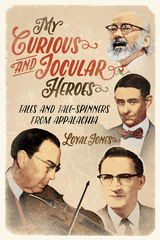 My Curious and Jocular Heroes: Tales and Tale-Spinners from Appalachia
Loyal Jones
University of Illinois Press, 2017 We were going down the road, and we came to this house. There was a little boy standing by the road just crying and crying. We stopped, and we heard the biggest racket you ever heard up in the house. “What’s the matter, son?” “Why, Maw and Paw are up there fightin’.” “Who is your Paw, son?” “Well, that’s what they are fightin’ over.” Brimming with ballads, stories, riddles, tall tales, and great good humor, My Curious and Jocular Heroes pays homage to four people who guided and inspired Loyal Jones’s own study of Appalachian culture. His sharp-eyed portraits introduce a new generation to Bascom Lunsford, the pioneer behind the “memory collections” of song and story at Columbia University and the Library of Congress; the Sorbonne-educated collector and performer Josiah H. Combs; Cratis D. Williams, the legendary father of Appalachian studies; and the folklorist and master storyteller Leonard W. Roberts. Throughout, Jones highlights the tales, songs, jokes, and other collected nuggets that define the breadth of each man’s research and repertoire.
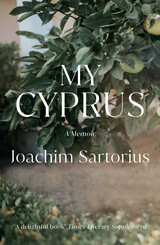 My Cyprus: A Memoir
Joachim Sartorius
Haus Publishing, 2021 A sensory and poetic guide to the island of Cyprus.
The island of Cyprus has been a site of global history and conquest, and its strategic position means it has been coveted by one foreign power after another. The Phoenicians, Greeks, Romans, Byzantines, Venetians, Genoese, Ottomans, and British have all left their mark. Along with the Roman and Byzantine ruins of Salamis, the island holds impressive monuments dating from the Frankish and Venetian times: the Abbey of Bellapais, the fortified harbor of Kyrenia, and the magnificent cathedrals of Nicosia and Famagusta, the setting for Shakespeare’s Othello.
Having lived in Cyprus for three years, Joachim Sartorius returns to the island’s cultures and legends and brings to life the colors and lights of the Levant area of the Middle East. He sifts through the sediments of the island’s history, including its division after the Turkish invasion of 1974 and the difficulties that followed. Rather than focusing solely on historical or political factors, this book is the work of a poet, who, with the help of both Greek and Turkish Cypriot friends, tries to understand this unique place.
My Daddy's Name Is Donor: A New Study of Young Adults Conceived through Sperm Donation
Elizabeth Marquardt, Norval D. Glenn, Karen Clark
American Philanthropic, 2010
My Daddy's Name Is Donor reveals stunning findings about the lives of adult offspring of sperm donation, one of the most common reproductive technologies and one that has been practiced widely in the United States and around the world for decades. Based on first-ever representative, comparative study of adults conceived via sperm donation, it discusses how they struggle with the implications of their conception and how they fare worse than their peers raised by biological parents on important outcomes such as depression, delinquency, and substance abuse. My Daddy's Name Is Donor aims to launch an international debate on ethics, meaning, and practice of donor conception.
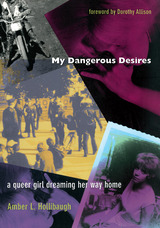 My Dangerous Desires: A Queer Girl Dreaming Her Way Home
Amber L. Hollibaugh
Duke University Press, 2000 Amber L. Hollibaugh is a lesbian sex radical, ex-hooker, incest survivor, gypsy child, poor-white-trash, high femme dyke. She is also an award-winning filmmaker, feminist, Left political organizer, public speaker, and journalist. My Dangerous Desires presents over twenty years of Hollibaugh’s writing, an introduction written especially for this book, and five new essays including “A Queer Girl Dreaming Her Way Home,” “My Dangerous Desires,” and “Sexuality, Labor, and the New Trade Unionism.”
In looking at themes such as the relationship between activism and desire or how sexuality can be intimately tied to one’s class identity, Hollibaugh fiercely and fearlessly analyzes her own political development as a response to her unique personal history. She explores the concept of labeling and the associated issues of categories such as butch or femme, transgender, bisexual, top or bottom, drag queen, b-girl, or drag king. The volume includes conversations with other writers, such as Deirdre English, Gayle Rubin, Jewelle Gomez, and Cherríe Moraga. From the groundbreaking article “What We’re Rollin’ Around in Bed With” to the radical “Sex Work Notes: Some Tensions of a Former Whore and a Practicing Feminist,” Hollibaugh charges ahead to describe her reality, never flinching from the truth. Dorothy Allison’s moving foreword pays tribute to a life lived in struggle by a working-class lesbian who, like herself, refuses to suppress her dangerous desires.
Having informed many of the debates that have become central to gay and lesbian activism, Hollibaugh’s work challenges her readers to speak, write, and record their desires—especially, perhaps, the most dangerous of them—“in order for us all to survive.”
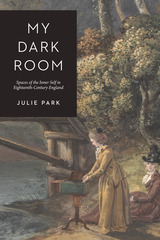 My Dark Room: Spaces of the Inner Self in Eighteenth-Century England
Julie Park
University of Chicago Press, 2023 Examines spaces of inner life in eighteenth-century England to shed new light on interiority in literature and visual and material culture.
In what kinds of spaces do we become most aware of the thoughts in our own heads? In My Dark Room, Julie Park explores places of solitude and enclosure that gave eighteenth-century subjects closer access to their inner worlds: grottos, writing closets, landscape follies, and the camera obscura, that beguiling “dark room” inside which the outside world in all its motion and color is projected. The camera obscura and its dreamlike projections within it served as a paradigm for the everyday spaces, whether in built environments or in imaginative writing, that generated the fleeting states of interiority eighteenth-century subjects were compelled to experience and inhabit.
My Dark Room illuminates the spatial and physical dimensions of inner life in the long eighteenth century by synthesizing material analyses of diverse media, from optical devices and landscape architecture to women’s intimate dress, with close readings of literary texts not traditionally considered together, among them Andrew Marvell’s country house poem Upon Appleton House, Margaret Cavendish’s experimental epistolary work Sociable Letters, Alexander Pope’s heroic verse epistle Eloisa to Abelard, and Samuel Richardson’s novel Pamela. Park also analyzes letters and diaries, architectural plans, prints, drawings, paintings, and more, drawing our attention to the lively interactions between spaces and psyches in private environments. Park’s innovative method of “spatial formalism” reveals how physical settings enable psychic interiors to achieve vitality in lives both real and imagined.
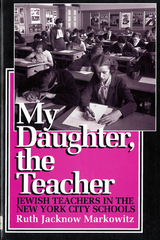 My Daughter, the Teacher: Jewish Teachers in the New York City Schools
Markowitz, Ruth Jacknow
Rutgers University Press, 1993 'My son, the doctor' and 'my daughter, the teacher' were among the most cherished phrases of Jewish immigrant parents," writes Ruth Markowitz in recounting this story of Jewish women who taught school in New York. Teaching was an attractive profession to the daughters of immigrants. It provided status, security, was compatible with marriage, and licenses did not require expensive training. In the interwar years, Jewish women in New York entered teaching in large and unprecedented numbers. In fact, by 1960 the majority of all New York teachers were Jewish women. By interviewing sixty-one retired teachers, Ruth Markowitz re-created their lives and the far-reaching influence they had on public education.These women faced many barriers--from lack of parental and financial support to discrimination--as they pursued their educations. Those women who completed their training still had difficulty finding teaching positions, especially during the Depression. Once hired, the teachers' days were filled with overcrowded classes, improperly maintained facilities, enormous amounts of paperwork, few free periods, and countless extracurricular obligations. They also found themselves providing social services; Markowitz finds a large number of teachers who took a special interest in minority children.The teachers Markowitz interviewed often agree with the assessment others have made that the 1930s were in their own way a golden age in the schools. The retired teachers remember the difficult times, but also their love of teaching and the difference they made in the classrooms. Their energy, initiative, and drive will help inspire teachers today, who face the serious problems of drugs, teenage pregnancy, and violence in their classrooms.
My Daughter's Eyes and Other Stories: Stories
Annecy Báez
Northwestern University Press, 2007 My Daughter's Eyes and Other Stories, winner of the 2007 Mármol Prize, is a collection of fourteen interrelated stories about young Dominican women living in the Bronx as they deal with the choices they make in their everyday life. These stories span three decades, beginning in the 1970s, and their topics range from mother-daughter struggles, father-daughter betrayal, family, and child abuse, to emerging sexuality, love, loss, and healing. Annecy Baez's daring treatment of taboo themes, such as sexual child abuse and the struggle of the individual against restrictive traditional values, makes this book unique in Dominican fiction.
My Days of Anger
James T. Farrell. Introduction by Charles Fanning.
University of Illinois Press, 2007 The fourth novel in James T. Farrell’s pentalogy chronicles Danny O’Neill’s coming of age. Recording his reactions to initiation into college life at the University of Chicago and the imminent death of his grandmother, one of his primary caretakers, Danny realizes the value of time and gains confidence in his writing abilities. As he works on his first novel, he prepares to leave his family, his Catholicism, and his neighborhood in Chicago behind for a new life as a writer in New York.
My Dearest Angel: A Virginia Family Chronicle 1895–1947
Katie Letcher Lyle
Ohio University Press, 2002 She was the daughter of a circuit judge and state senator. He was the youngest son of Virginia’s Civil War governor and was a state legislator himself at the age of nineteen. Their courtship and marriage stands as a portrait of a bygone way of life unique to the American South during the first half of the twentieth century. My Dearest Angel is their story, told through their faithful correspondence over the course of their fifty years together. Piecing together the voluminous letters, their granddaughter, noted author Katie Letcher Lyle, has succeeded in giving us an intimate panorama of the full and oftentimes wrenching lives led by Greenlee and Katie Letcher. Domestic life, family secrets, and visiting luminaries are part of their story. But the abiding appeal of My Dearest Angel is the maturation of a lifelong relationship built on the crest of a changing world.
 My Dearest Friend: Letters of Abigail and John Adams
Edited by Margaret A. Hogan and C. James Taylor
Harvard University Press, 2007 “A wonderfully vivid account of the momentous era they lived through, underscoring the chaotic, often improvisatory circumstances that attended the birth of the fledgling nation and the hardships of daily life.”
—Michiko Kakutani, New York Times
In 1762, John Adams penned a flirtatious note to “Miss Adorable,” the 17-year-old Abigail Smith. In 1801, Abigail wrote to wish her husband John a safe journey as he headed home to Quincy after serving as president of the nation he helped create. The letters that span these nearly forty years form the most significant correspondence—and reveal one of the most intriguing and inspiring partnerships—in American history.
As a pivotal player in the American Revolution and the early republic, John had a front-row seat at critical moments in the creation of the United States, from the drafting of the Declaration of Independence to negotiating peace with Great Britain to serving as the first vice president and second president under the U.S. Constitution. Separated more often than they were together during this founding era, John and Abigail shared their lives through letters that each addressed to “My Dearest Friend,” debating ideas and commenting on current events while attending to the concerns of raising their children (including a future president).
Full of keen observations and articulate commentary on world events, these letters are also remarkably intimate. This new collection—including some letters never before published—invites readers to experience the founding of a nation and the partnership of two strong individuals, in their own words. This is history at its most authentic and most engaging.
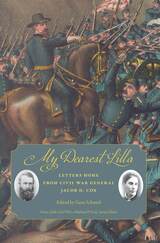 My Dearest Lilla: Letters Home from Civil War General Jacob D. Cox
Gene Schmiel
University of Tennessee Press, 2023 Jacob D. Cox experienced more facets of the Civil War than most officers: by land and sea, in both Western and Eastern Theaters, among the inner political circles of Ohio and Washington, DC, in territories hostile and friendly, amidst legal conflicts both civilian and military, and in the last campaigns in Tennessee and North Carolina. The Union general capitalized on his experience by penning his two-volume Military Reminiscences of the Civil War, one of the war’s finest memoirs and arguably the best by a nonprofessional soldier, as well as Atlanta and The Battle of Franklin, both definitive studies for nearly a century. In 2012, Gene Schmiel, Cox’s biographer, learned of a cache in the Oberlin College archives of 213 letters Cox wrote to his wife, Helen, during the war. Schmiel recognized these documents as a ready resource for Cox as he wrote his histories, and many stand as first drafts of Cox’s analyses of the military and sociopolitical events of the day.
Helen Finney Cox (her husband affectionately referred to her as “Lilla”) was a mother of six and the daughter of Oberlin College president Charles Finney. These intimate and insightful wartime letters show both the fondness Cox had for his spouse and his respect for her as an intellectual equal. To Helen, the stoic, introverted statesman revealed—as he did to no one else—his inner thoughts and concerns, presenting observant, lucid, and informative reports and analyses of the war, his changing life, and his ambitions. This collection illustrates the life of a Gilded Age Renaissance man as he made the transition from untested soldier to respected general and statesman.
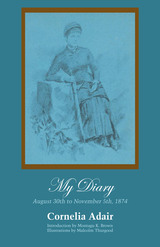 My Diary: August 30th to November 5th, 1874
By Cornelia Adair. Introduction by Montagu K. Brown, Illustrations by Malcolm Thurgood
University of Texas Press, 1965 Cornelia Wadsworth Adair’s ancestors had pioneered in western New York, where they opened and developed large, palatial estates; and the life they lived was elegant and aristocratic. Adair too was discreetly cultured; yet she took great personal pleasure in the rough and primitive land of her famed JA Ranch in north Texas. Because of physical discomfort and noisy passengers, she detested traveling by railroad coach; yet she could ride all day on horseback and lie down to sleep on a makeshift cot by a waterhole or on an Indian’s flea-infested buffalo rug. She was a lady of interesting contradictions. This little Diary is her lively account of a two-month trip which she and her husband made into the western part of the United States in 1874. The ostensible purpose of the trip was to hunt buffalo; however, these large beasts actually play a very small part in the journal. Rather, the book is an interesting and often amusing account, by an observant woman, of the long journey from her husband’s estate in Ireland to New York, to Chicago and on into upper Michigan, across Lake Superior to Minnesota, down the Mississippi for several days, out to the buffalo-hunting grounds in Nebraska, then to Denver and the wonders of the Rocky Mountains, and finally back to New York and the Europe-bound ship. Adair writes with an easy fluency; and her eye for picturesque detail, her taste for amusing incongruities, her romanticist’s delight in Nature, and her instinct for a “good tale” combine to make her Diary pleasant and entertaining reading, while her powers of keen observation provide valuable insight into life as it was then in the West. First printed for private circulation in 1918, the original book is now a rare collector’s item of Western Americana. Mrs. Adair said that she was allowing its publication for two reasons. First, she was afraid that her grandchildren and young friends would remember her only as “an old lady who sat in an armchair, and whose stick had to be looked for”; she wanted them to know that she had once been “a very lively person . . . [who] did all sorts of exciting things.” Second, she felt it worthwhile to record her experiences because “the world is changing so quickly, ways of travelling especially so . . . and I think it may be interesting to compare what was done in 1874 with what will be done by the time the children are able to travel. No doubt they will do their journeys by air, and do many, many things that I have not been able to do; but they can never see the prairies of America in their wild uncivilised state, or hunt buffalo over them, nor can they pow-wow with the Red Indians in a camp on the Platte River. So every time has its own special joys, and the great thing is to miss as little as possible, and to share as much.”
My Diva: 65 Gay Men on the Women Who Inspire Them
Edited by Michael Montlack
University of Wisconsin Press, 2009 From Elizabeth Taylor, Bette Midler, and Diana Ross to Queen Elizabeth I, Julia Child, and Princess Leia, these divas have been sister, alter ego, fairy godmother, or model for survival to gay men and the closeted boys they once were. And anyone—straight or gay, young or old, male or female—who ever needed a muse, or found one, will see their own longing mirrored here as well.
These witty and poignant short essays explore reasons for diva-worship as diverse as the writers themselves. My Diva offers both depth and glamour as it pays tribute with joy, intelligence, and fierce, fierce love.
Finalist, Lambda Book Award for LGBT Anthology, Lambda Literary Foundation
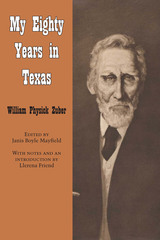 My Eighty Years in Texas
By William Physick Zuber
University of Texas Press, 1971 Almost a century and a half went into the making of My Eighty Years in Texas. It began as a diary, kept by fifteen-year-old William Physick Zuber after he joined Sam Houston’s Texas army in 1836, hoping he could emulate the heroism of American Revolutionary patriots. Although his hopes were never realized, Zuber recorded the privations, victories, and defeats of armies on the move during the Texas Revolution, the Indian campaigns, and, as he styled it, the Confederate War. In 1910, at the age of ninety, Zuber began the enormous task of transcribing his diaries and his memories for publication. After his death in 1913, the handwritten manuscript, 1, was placed in the Texas State Archives, where it was used as a reference source by students and scholars of Texas history. Over a half century after Zuber’s death, Janis Boyle Mayfield finally brought his publication plans to fruition. Zuber details his early zest for learning and his laborious methods of self-education. He tells of the trials of organizing and teaching schools in the sparsely populated plains. He recalls the day-by-day happenings of a private soldier in the Texas army of 1836, the Texas Militia, and the Confederate army—including the mishaps of army life and the encounters with enemies from San Jacinto to Cape Girardeau. After the Civil War, his interest turns to the politics of Reconstruction, the veterans’ pension, and the founding of the Texas Veterans Association. This is the story of and by an outspoken Texian, complete with his attitudes, principles, and moralizings, and the nineteenth-century style and flavor of his writing. Included as an appendix is “An Escape from the Alamo,” the account of Moses Rose for which Zuber, who was a prolific writer, was best known. A historiography of the Rose story, a bibliography of Zuber’s published and unpublished writings, annotation, and an introduction are provided by Llerena Friend.
My Escapee: Stories
Corinna Vallianatos
University of Massachusetts Press, 2012 Delicate and assured, the stories in My Escapee illuminate unseen forces in women's lives: the shameful thought, the stifled hope, the subterranean stresses of marriage, friendship, and family. Grappling with lost memories, escaped time, the longing to be loved, and the instinct for autonomy, the stories peer inside their characters' minds to their benign delusions, their triumphs and defeats.
A girl taking a test for admittance to a selective school finds that what she loves most of all is the ordinary. A lonely young woman, sick of being sick, swaps places with her nurse. A college student deploys her more charming roommate to discover the secret rituals of an all-male club on campus. And in the title story, a woman in a nursing home receives mysterious missives from her longtime lover recalling fragments of their old life together.
 My Ever Dear Daughter, My Own Dear Mother: The Correspondence of Julia Sonte Towne and Mary Julia Towne, 1868-1882
Katherine R. Morgan
University of Iowa Press, 1996 In 1868 twenty-two-year-old Mary Julia Towne left her farm in Topsfield, Massachusetts, for Chicago in search of better health and an opportunity to support herself. Soon she was teaching, first in night school and then in grammar schools, finding satisfaction and independence in this profession. Over the next fourteen years she wrote home to her mother, Julia Stone Towne; these letters and Julia's letters back to her—the only published collection of sustained correspondence between a nineteenth-century American mother and daughter—create a deep and rich world filled with the ideas, affection, advice, and comfort that each woman gave to the other. Now, more than a hundred years later, Julia and Mary Towne give us new insights into the complexities of life of women in the nineteenth century, into both the interdependence and the autonomy of mothers and daughters, and into the links between their lives and ours.
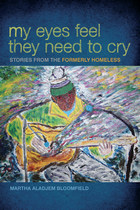 My Eyes Feel They Need to Cry: Stories from the Formerly Homeless
Martha Aladjem Bloomfield
Michigan State University Press, 2013 As intimate as they are inspiring, these stories of transformation, drawn from the oral histories of formerly homeless adults, testify to the determination of the human spirit and the healing power of sharing one’s journey. This gripping collection gives voice to the traditionally voiceless, inviting men and women from a variety of cultural and ethnic backgrounds to share their experiences of what it was like to live on the streets, in cars, under bridges, and of how they discovered the inner motivation to change the course of their lives in a positive direction. An important contribution to understanding how destructive patterns can be broken, this book examines some key questions: How do those who have suffered from homelessness and the hardships that accompany it find the inspiration and courage to break the seemingly endless cycle, transform their lives, and become self-sufficient? What emotional price do they pay? When do they realize that enough is enough? How do they learn to trust new people when so many have disappointed them? Homeless people can and do find a way off the streets, as these men and women reveal through their stories, paintings, and poetry.
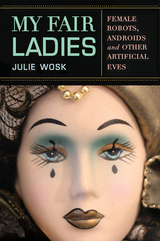 My Fair Ladies: Female Robots, Androids, and Other Artificial Eves
Wosk, Julie
Rutgers University Press, 2015 Runner-up for the 2015 Science Fiction and Technoculture Studies Book Prize
The fantasy of a male creator constructing his perfect woman dates back to the Greek myth of Pygmalion and Galatea. Yet as technology has advanced over the past century, the figure of the lifelike manmade woman has become nearly ubiquitous, popping up in everything from Bride of Frankenstein to Weird Science to The Stepford Wives. Now Julie Wosk takes us on a fascinating tour through this bevy of artificial women, revealing the array of cultural fantasies and fears they embody. My Fair Ladies considers how female automatons have been represented as objects of desire in fiction and how “living dolls” have been manufactured as real-world fetish objects. But it also examines the many works in which the “perfect” woman turns out to be artificial—a robot or doll—and thus becomes a source of uncanny horror. Finally, Wosk introduces us to a variety of female artists, writers, and filmmakers—from Cindy Sherman to Shelley Jackson to Zoe Kazan—who have cleverly crafted their own images of simulated women. Anything but dry, My Fair Ladies draws upon Wosk’s own experiences as a young female Playboy copywriter and as a child of the “feminine mystique” era to show how images of the artificial woman have loomed large over real women’s lives. Lavishly illustrated with film stills, artwork, and vintage advertisements, this book offers a fresh look at familiar myths about gender, technology, and artistic creation.
 "My Faith in the Constitution Is Whole": Barbara Jordan and the Politics of Scripture
Robin L. Owens
Georgetown University Press, 2022 How Barbara Jordan used sacred and secular scriptures in her social activism US Congresswoman Barbara Jordan is well-known as an interpreter and defender of the Constitution, particularly through her landmark speech during Richard Nixon’s 1974 impeachment hearings. However, before she developed faith in the Constitution, Jordan had faith in Christianity. In “My Faith in the Constitution is Whole”: Barbara Jordan and the Politics of Scripture, Robin L. Owens shows how Jordan turned her religious faith and her faith in the Constitution into a powerful civil religious expression of her social activism. Owens begins by examining the lives and work of the nineteenth-century Black female orator-activists Maria W. Stewart and Anna Julia Cooper. Stewart and Cooper fought for emancipation and women’s rights by “scripturalizing,” or using religious scriptures to engage in political debate. Owens then demonstrates how Jordan built upon this tradition by treating the Constitution as an American “scripture” to advocate for racial justice and gender equality. Case studies of key speeches throughout Jordan’s career show how she quoted the Constitution and other founding documents as sacred texts, used them as sociolinguistic resources, and employed a discursive rhetorical strategy of indirection known as “signifying on scriptures.” Jordan’s particular use of the Constitution—deeply connected with her background and religious, racial, and gender identity—represents the agency and power reflected in her speeches. Jordan’s strategies also illustrate a broader phenomenon of scripturalization outside of institutional religion and its rhetorical and interpretive possibilities.
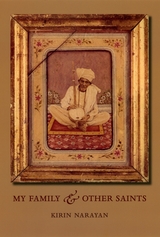 My Family and Other Saints
Kirin Narayan
University of Chicago Press, 2007 In 1969, young Kirin Narayan’s older brother, Rahoul, announced that he was quitting school and leaving home to seek enlightenment with a guru. From boyhood, his restless creativity had continually surprised his family, but his departure shook up everyone— especially Kirin, who adored her high-spirited, charismatic brother.
A touching, funny, and always affectionate memoir, My Family and Other Saints traces the reverberations of Rahoul's spiritual journey through the entire family. As their beachside Bombay home becomes a crossroads for Westerners seeking Eastern enlightenment, Kirin’s sari-wearing American mother wholeheartedly embraces ashrams and gurus, adopting her son’s spiritual quest as her own. Her Indian father, however, coins the term “urug”—guru spelled backward—to mock these seekers, while young Kirin, surrounded by radiant holy men, parents drifting apart, and a motley of young, often eccentric Westerners, is left to find her own answers. Deftly recreating the turbulent emotional world of her bicultural adolescence, but overlaying it with the hard-won understanding of adulthood, Narayan presents a large, rambunctious cast of quirky characters. Throughout, she brings to life not just a family but also a time when just about everyone, it seemed, was consumed by some sort of spiritual quest.
“A lovely book about the author's youth in Bombay, India. . . . The family home becomes a magnet for truth-seekers, and Narayan is there to affectionately document all of it.”—Body + Soul
“Gods, gurus and eccentric relatives compete for primacy in Kirin Narayan's enchanting memoir of her childhood in Bombay.”—William Grimes, New York Times
My Family's Role in the World Revolution: and Other Prose
Bora Cosic
Northwestern University Press, 1997 Bora Ćosić's My Family's Role in the World Revolution enjoyed a successful run as a play, but the film version was closed immediately and ultimately caused Ćosić's publications to be for over four years.
During the German occupation of Belgrade, a family—including an alarmist mother, an eternally drunk father, two young aunts who swoon over American movie stars, and a playboy uncle—attempt to find any kind of work they can do at home. When the postwar Socialist society is being ushered in after the war, the narrator becomes the slogan-spouting ideological leader of the household, while his family tries—and often fails miserably—to take part in the "great change."
This volume also includes several Ćosić short stories, and recent essays on the war in the former Yugoslavia.
 My Father Said Yes: A White Pastor in Little Rock School Integration
Dunbar H. Ogden
Vanderbilt University Press, 2008 On September 4, 1957, the group of African American high school students who became known as the Little Rock Nine walked up to the front of Central High to enroll in school. They were turned away by the National Guard, who had been called out by Arkansas Governor Orval Faubus. "Blood will run in the streets," said Faubus, "if Negro pupils should attempt to enter Central High School." A mob seethed out front. The man who led the Nine up to the lines of the National Guard on that fateful morning was the author's father, a white Presbyterian pastor.
My Father Said Yes is the untold story of the Reverend Dunbar Ogden, who became the pro-integration leader in Little Rock's white community. He responded to a call for support from Daisy Bates, co-owner of the town's black newspaper. Both faced fierce opposition from within as well as from outside. Reverend Ogden lost his church and Daisy Bates lost her newspaper.
This memoir is also a moving father-son story. In this frank account, the author discusses the depression his father battled for most of his life, as well as the family tragedy of his brother's suicide.
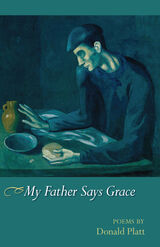 My Father Says Grace: Poems
Donald Platt
University of Arkansas Press, 2007 In his third collection, My Father Says Grace, Donald Platt combines elegy with verse of larger historical allusion and reference. At the center of the book stand poems detailing a father’s stroke and slowly developing Alzheimer’s disease and how it affects one family. An extended meditation on a mother-in-law’s dying provides counterpoint to elegies for more public figures like Walt Whitman and Janis Joplin. The private life in “the valley of the shadow of death” often gets juxtaposed with explicitly political verse. One of these poems records the racially charged conversations in a small southern town’s Amazing Grace Beauty Salon. Another describes a Vietnam protestor, famously photographed while sticking flowers in an MP’s gun barrel, alongside images from his later life as a transvestite. The poems tend to find themselves in the midst of crisis, historical or personal. They yearn for “transport” and strive “to be ‘carried across,’ away, out, toward, back into / / some new country / where the soul improvises, croons scat to itself alone.”
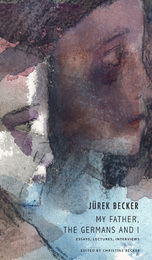 My Father, the Germans and I: Essays, Lectures, Interviews
Jurek Becker
Seagull Books, 2010 Jürek Becker (1937–97) is best known for his novel Jacob the Liar, which follows the life of a man, who, like Becker, lived in the Lódz ghetto during the German occupation of Poland in World War II. Throughout his career, Becker also wrote nonfiction, and the essays, lectures, and interviews collected in My Father, the Germans and I share a common thread in that they each speak to Becker’s interactions with and opinions on the social, political, and cultural conditions of twentieth-century Germany. Becker, who had lived in both German states and in unified Germany, was passionately and humorously active in the political debates of his time. Becker never directly aligned himself with either the political ideology of East Germany or the capitalist market forces of West Germany. The remains of fascism in postwar Germany, and the demise of Socialism, as well as racism and xenophobic violence, were topics that perpetually interested Becker. However, his writings, as evidenced in this collection, were never pedantic, but always entertaining, retaining the sense of humor that made his novels so admired. My Father, the Germans and I gives expression to an exceptional author’s perception of himself and the world and to his tireless attempt to bring his own unique tone of linguistic brevity, irony, and balance to German relations.
My Father, the Messiah: A Memoir
Gil Z. Hochberg
Duke University Press, 2026 In her memoir My Father, the Messiah, Gil Hochberg traces a father-daughter relationship as it transforms across decades—from intense closeness in childhood to a fraught distance as Hochberg’s father Yossi becomes increasingly convinced that he is the Messiah. After building a career as a statistician in the US, Yossi returns to Israel and becomes an avid Zionist, while having several psychotic episodes. Hochberg reconstructs her relationship with her father through an archive of letters between the two, as well as her father’s personal writings, painting a tender portrait of the non-normative family life within which Hochberg’s queer identity unfolds and a heart-rending account of her father’s mental decline. Hochberg crafts a powerful story of intimacy and loss that dovetails with sea changes in Israel’s religious and political environment since the 1990s.
My Father Was a Freedom Fighter: Gaza's Untold Story
Ramzy Baroud
Pluto Press, 2010 Gaza is the frontline in the conflict between Israel and the Palestinians and rarely out of the news, this book explores the daily lives of the people in the region, giving us an insight into what is at risk in each round of violence.
Ramzy Baroud tells his father's fascinating story. Driven out of his village to a refugee camp, he took up arms and fought the occupation at the same time raising a family and trying to do the best for his children. Baroud's vivid and honest account reveals the complex human beings; revolutionaries, great moms and dads, lovers, and comedians that make Gaza so much more than just a disputed territory.
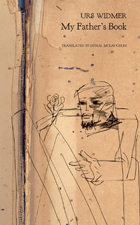 My Father's Book
Urs Widmer
Seagull Books, 2018 In this companion to Urs Widmer’s novel My Mother’s Lover, the narrator is again the son who pieces together the fragments of his parents’ stories. Since the age of twelve, Karl, the father, has observed the family tradition of recording his life in a single notebook, but when his book is lost soon after his death, his son resolves to rewrite it. Here, we get to know Karl’s friends—a collection of anti-fascist painters and architects known as Group 33. We learn of the early years of Karl’s marriage and follow his military service as the Swiss fear a German invasion during World War II, his political activity for the Communist Party, and his brief career as a teacher. We are told of Karl’s literary translations of his favorite French books, and, most important, the eerie and ever-present coffins outside the houses in the home village of Karl’s father, one reserved for each individual from the day he or she is born. Widmer brilliantly combines family history and historical events to tell the story of a man more at home in the world of the imagination than in the real world, a father who grows on the reader, just as he grows on his son. “One of the best representatives of Swiss literature.”—Le Monde
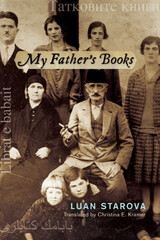 My Father’s Books
Luan Starova; Translated by Christina E. Kramer
University of Wisconsin Press, 2012 In My Father’s Books, the first volume in Luan Starova’s multivolume Balkan Saga, he explores themes of history, displacement, and identity under three turbulent regimes—Ottoman, Fascist, and Stalinist—in the twentieth century. Weaving a story from the threads of his parents’ lives from 1926 to 1976, he offers a child’s-eye view of personal relationships in shifting political landscapes and an elegiac reminder of the enduring power of books to sustain a literate culture.
Through lyrical waves of memory, Starova reveals his family’s overlapping religious, linguistic, national, and cultural histories. His father left Constantinople as the Ottoman Empire collapsed, and the young family fled from Albania to Yugoslav Macedonia when Luan was a boy. His parents, cosmopolitan and well-traveled in their youth, and steeped in the cultures of both Orient and Occident, find themselves raising their children in yet another stagnant and repressive state. Against this backdrop, Starova remembers the protected spaces of his childhood—his mother’s walled garden, his father’s library, the cupboard holding the rarest and most precious of his father’s books. Preserving a lost heritage, these books also open up a world that seems wide, deep, and boundless.
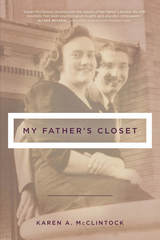 My Father’s Closet
Karen McClintock
Ohio State University Press, 2017 “Karen McClintock reconstructs the details of her father’s double life with novelistic flair, keen psychological insight, and graceful compassion.” —Alison Bechdel
Thirty years after her father’s death, Karen McClintock sets out to find the gay father she never really knew. As we follow the unraveling family secret, we find ourselves drawn into her story as they stumble into infidelity, grieve heartbreaking losses, and remain loyal in love. Set in Columbus, Ohio, My Father’s Closet tells the story of how just before the war, McClintock’s parents fell in love and married, while overseas in Germany the man whom she believes became her father’s lover was concealing his Jewish and gay identities in order to escape to America. A set of her father’s journals, letters her parents sent to each other during the Second World War, and a mysterious painting all lead her toward the truth about her gay father. McClintock weaves a complex secret into the fabric of lives we truly care about. And in the process, she leads us out of her father’s closet. This gripping memoir captures the longing children feel for a distant or hidden parent and taps into the complexity of human connection and abandonment. The characters are resilient and vibrant. The hidden lovers, the nosey neighbors, and surprise lovers all show up. In the end, this extraordinary family finds ways to connect and freedom to love. Anyone who grew up with a family secret will appreciate the dynamics afoot in this fast-paced and compelling story.
My Father's Geography
Afaa Michael Weaver
University of Pittsburgh Press, 1992 "Weaver's life studies and lyrics are imbued with a vivid sense of language, a vivid sense of the world, a vivid sense of their inseparability. And his tonal range—from unabashed passion to the subtlest velleity—is impressive indeed. This is a singular talent."—Henry Louis Gates, Jr.
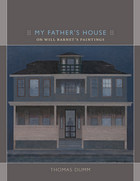 My Father's House: On Will Barnet's Painting
Thomas Dumm
Duke University Press, 2014 In My Father's House, the political philosopher Thomas Dumm explores a series of stark and melancholy paintings by the American artist Will Barnet. Responding to the physical and mental decline of his sister Eva, who lived alone in the family home in Beverly, Massachusetts, Barnet began work in 1990 on what became a series of nine paintings depicting Eva and other family members, as they once were and as they figured in the artist's memory. Rendered in Barnet's signature quiet, abstract style, the paintings, each featured in full color, present the ordinary and extraordinary aspects of a twentieth-century American family.
Dumm first became acquainted with Barnet and his paintings in 2008. Given his scholarly focus on the lives of ordinary people, he was immediately attracted to the artist's work. When they met, Dumm and Barnet began a friendship and dialogue that lasted until the painter's death in 2012, at the age of 101. This book reflects the many discussions the two had concerning the series of paintings, Barnet's family, his early life in Beverly, and his eighty-year career as a prominent New York artist. Reading the almost gothic paintings in conversation with the writers and thinkers key to both his and Barnet's thinking—Emerson, Spinoza, Dickinson, Benjamin, Cavell, Nietzsche, Melville—Dumm's haunting meditations evoke broader reflections on family, mortality, the uncanny, and the loss that comes with remembrance.
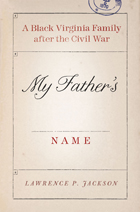 My Father's Name: A Black Virginia Family after the Civil War
Lawrence P. Jackson
University of Chicago Press, 2012 Armed with only early boyhood memories, Lawrence P. Jackson begins his quest by setting out from his home in Baltimore for Pittsylvania County, Virginia, to try to find his late grandfather’s old home by the railroad tracks in Blairs. My Father’s Name tells the tale of the ensuing journey, at once a detective story and a moving historical memoir, uncovering the mixture of anguish and fulfillment that accompanies a venture into the ancestral past, specifically one tied to the history of slavery. After asking around in Pittsylvania County and carefully putting the pieces together, Jackson finds himself in the house of distant relations. In the pages that follow, he becomes increasingly absorbed by the search for his ancestors and increasingly aware of how few generations an African American needs to map back in order to arrive at slavery, “a door of no return.” Ultimately, Jackson’s dogged research in libraries, census records, and courthouse registries enables him to trace his family to his grandfather’s grandfather, a man who was born or sold into slavery but who, when Federal troops abandoned the South in 1877, was able to buy forty acres of land. In this intimate study of a black Virginia family and neighborhood, Jackson vividly reconstructs moments in the lives of his father’s grandfather, Edward Jackson, and great-grandfather, Granville Hundley, and gives life to revealing narratives of Pittsylvania County, recalling both the horror of slavery and the later struggles of postbellum freedom.
My Father’s Name is a family story full of twists and turns—and one of haunting familiarity to many Americans, who may question whether the promises of emancipation have ever truly been fulfilled. It is also a resolute look at the duties that come with reclaiming and honoring Americans who survived slavery and a thoughtful meditation on its painful and enduring history.
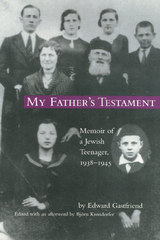 My Fathers Testament
Edward Gastfriend
Temple University Press, 1999 This first-person account, by the youngest of eight children of a pious Jewish family from Sosnoviec in Poland, is remarkable for the faith shown by a teenager faced with the horrifying realities of the Holocaust. Edward Gastfriend, known as Lolek as a boy, remembers in heart-wrenching detail the seven years he survived in German-occupied Poland.
The accelerating Nazi assault on the Jews abruptly shattered Lolek's life. Jews were randomly beaten and arrested, forced out of their homes, deported to slave labor camps, and shot on the streets. During this time, Lolek lost his family, friends, and neighbors, the whole while struggling to hold onto a promise he made to his father before his father was deported. Lolek pledged never to denounce God and to maintain his faith. This covenant proved to be the key to his remarkable survival in several slave labor camps including Auschwitz and several satellite camps of Auschwitz-Birkenau.
My Father's Testament is an intimate portrayal of a teenage boy trying to stay alive without losing his humanity - in hiding, in the camps, and during the death marches at the end of the war.
Embedded in this unique memoir are two other stories of fathers and sons. One lies in the moving Foreword by David R. Gastfriend, Ed's son, now a psychiatrist at Harvard Medical School. The other lies in Bjorn Krondorfer's Afterword. Years after he met Edward Gastfriend, Krondorfer was startled to hear his father mention Blechhammer as one of the places where he was stationed as a young German soldier. Blechhammer was where Lolek was held in a slave labor camp. The coincidence led this German father and son to travel back to the site to confront the Holocaust.
My Father's Testament will engage readers interested in history, the Holocaust, and religion.
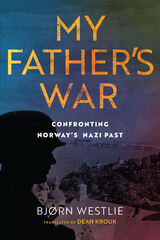 My Father's War: A True Story of Nazism and Treason
by Bjørn Westlie, translated by Dean Krouk
University of Wisconsin Press, 2023 My Father’s War is simultaneously a history of the Nazi occupation of Norway in World War II and a son’s sincere attempt to understand the silences, motivations, and experiences of an estranged father. In this carefully researched book, combining family memoir and historical retelling, Bjørn Westlie uncovers his father’s actions as a volunteer soldier for the Waffen-SS, the military wing of the infamous Schutzstaffel (SS), in the invasion of the Soviet Union. Balancing his role as both son and critical investigator, Westlie unflinchingly interrogates his father’s fascist convictions, which speak to the appeal Hitler’s ideology held for a small, disgraced segment of Norway’s mid-century population. A story of collaboration, tragedy, and treason, My Father’s War reveals the little-known history of Norway's frontkjempere (front fighters), the atrocities the Waffen-SS committed against Ukrainian Jews, and the complex legacies of ethnonationalism in Norway.
With an insightful introduction from translator Dean Krouk, My Father’s War is a contemporary classic of war literature. Committed to genuine understanding without falling into undue sympathizing, this sober and reflective book presents an eye-opening, moving, intense, and necessary account of the allure of fascism in a world at war—and its personal costs.
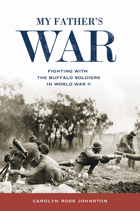 My Father's War: Fighting with the Buffalo Soldiers in World War II
Carolyn Ross Johnston
University of Alabama Press, 2012 My Father’s War tells the compelling story of a unit of Buffalo Soldiers and their white commander fighting on the Italian front during World War II. The 92nd Division of the Fifth Army was the only African American infantry division to see combat in Europe during 1944 and 1945, suffering more than 3,200 casualties. Members of this unit, known as Buffalo Soldiers, endured racial violence on the home front and experienced racism abroad. Engaged in combat for nine months, they were under the command of southern white infantry officers like their captain, Eugene E. Johnston. Carolyn Ross Johnston draws on her father’s account of the war and her extensive interviews with other veterans of the 92nd Division to describe the experiences of a naïve southern white officer and his segregated unit on an intimate level. During the war, the protocol that required the assignment of southern white officers to command black units, both in Europe and in the Pacific theater, was often problematic, but Johnston seemed more successful than most, earning the trust and respect of his men at the same time that he learned to trust and respect them. Gene Johnston and the African American soldiers were transformed by the war and upon their return helped transform the nation.
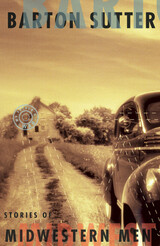 My Father’s War: Stories of Midwestern Men
Barton Sutter
University of Minnesota Press, 2000 Poignant and revealing stories from one of the Midwest’s leading authors. Poignant and revealing stories from one of the Midwest’s leading authors. "A compelling debut. These stories offer leisurely exposition and character development. . . . Their honesty and sensitivity will resonate." Publishers Weekly"These are wonderful stories-images of personal and societal growth that are at once hopeful and skeptical, loving and shrewd." New Orleans Times-Picayune"These magnificent stories are big-hearted and loving in a way I don’t think I’ve ever encountered. With a calm and compassionate hand, Barton Sutter reveals to us the true dignity of humankind, the necessity of heroes and history, and the unerring aim of hope. My Father’s War is a beautiful book." Bret LottIn this collection of stories, Barton Sutter shows us all the ways in which we are shaped by our surroundings. With an unswerving gaze, he portrays the rituals of growing up that we all experience, no matter how old we think we are.
My Favorite Tyrants
Joanne Diaz
University of Wisconsin Press, 2014 Winner of the 2014 Brittingham Prize in Poetry, selected by Naomi Shihab Nye The word “tyrant” carries negative connotations, but in this new collection, Joanne Diaz tries to understand what makes tyranny so compelling, even seductive. These dynamic, funny, often poignant poems investigate the nature of tyranny in all of its forms—political, cultural, familial, and erotic. Poems about Stalin, Lenin, and Castro appear beside poems about deeply personal histories. The result is a powerful exploration of desire, grief, and loss in a world where private relationships are always illuminated and informed by larger, more despotic forces.
Winner, Midwest Book Award for Poetry, Midwest Independent Publishers Association
My First Book of Sign
Pamela J. Baker
Gallaudet University Press, 1986 My First Book of Sign, a full-color alphabet book, gives the signs for 150 of the words most frequently used by young children. The vocabulary comes from recognized word list sources such as the Dale List of 769 Easy Words. The proportion of word category choices (nouns, modifiers, and verbs) is based on early language acquisition research.
Readers do not have to know American Sign Language to enjoy My First Book of Sign; the book provides explanations of how to form each sign. This is a very special alphabet book appropriate for all children who are just beginning to read.
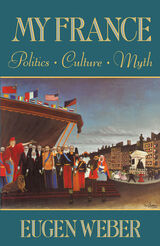 My France: Politics, Culture, Myth
Eugen Weber
Harvard University Press, 1991 “Lots of Romanians, in my day, dreamed of France; not many got there,” writes the author in his introduction. “Fortuitousness, contingency, and sheer good luck made me fall into France, just as one falls into love.” Fifty years after reaching France, by way of school in England, Eugen Weber presents a series of illuminations on the country he loves, and whose civilization he has made the center of his life's work as an interpreter of European history, subspecialty France.
My France focuses on some of the most intriguing aspects of French life: polities, myths, personalities, public problems, actions, conflicts. The topics Weber treats range from sports to religion, and include comments on folklore, peasant politicization, national socialism, the nature of the French right, antisemitism, and famous Frenchmen such as Pierre de Coubertin, Maurice Barres, and Marc Bloch. In every chapter he questions established assumptions, asks if things are quite as they are taken to be, and points out links between apparently unrelated doings (literature and private income, religion and superstition, fairy tales and everyday life). Every essay reflects his unique insight and is enlivened by his witty and graceful style, making My France irresistible not only to students of modern European history, but also to Francophiles and pundits of Europe everywhere.
My Friend, Julia Lathrop
Jane Addams
University of Illinois Press, 1935 As one of the four members of the inner circle at Hull-House, Julia Lathrop played an instrumental role in the field of social reform for more than fifty years. Working tirelessly for women, children, immigrants and workers, she was the first head of the federal Children's Bureau, an ardent advocate of woman suffrage, and a cultural leader. She was also one of Jane Addams's best friends. My Friend, Julia Lathrop is Addams' lovingly rendered biography of a memorable colleague and confidant.
The memoir reveals a great deal about the influence of Hull-House on the social and political history of the early twentieth century. An introduction by long-time Addams scholar Anne Firor Scott provides a broader account of women's work in voluntary associations.
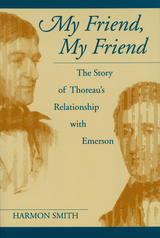 My Friend, My Friend: The Story of Thoreau's Relationship with Emerson
Harmon Smith
University of Massachusetts Press, 1999 Henry David Thoreau was a twenty-year-old scholarship student at Harvard when he met Ralph Waldo Emerson in 1837. Emerson, fourteen years Thoreau's senior and independently wealthy, had recently shaken the intellectual world of New England with the publication of Nature. Despite the disparity in their circumstances, Thoreau and Emerson quickly formed a close relationship that lasted until Thoreau's death at the age of forty-four. This book tells the story of their friendship. Harmon Smith emphasizes their personal bond, but also shows how their relationship affected their thought and writing, and was in turn influenced by their careers.Without Emerson's interest and support, it is unlikely that Thoreau could have expended the energy on writing that enabled him to achieve greatness. By inviting Thoreau into his home to live during two different periods in the 1840s, Emerson effectively made Thoreau "one of the family." He provided him with work, lent him money, and allowed him to build a cabin on the shore of Walden Pond. Emerson also broadened Thoreau's horizon immeasurably by introducing him to an ever-widening circle of friends and colleagues.Although the bond between Thoreau and Emerson was strong, their needs were often greatly at variance. While this led to a prolonged period of estrangement between them, they were ultimately able to reconcile their differences. Many years after Thoreau died, Emerson could look back over his long life and say that Henry had been his best friend. Since the thoughts and feelings of the two men are so well documented in their journals and letters, Smith is able to trace the pattern of their emotional involvement in great detail. What emerges is both a remarkable portrait of their relationship and an intimate look at the nature of friendship itself.
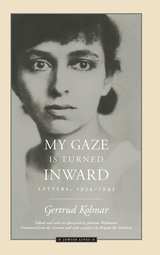 My Gaze Is Turned Inward: Letters 1938-1943
Gertrud Kolmar
Northwestern University Press, 2004 "Event of the time are a bit like Impressionist paintings . . . which combine into a recognizable whole only when observed from a distance." —Gertrude Kolmar in a letter to her sister, October 22, 1939
So a picture of Gertrud Kolmar, a gifted Jewish writer struggling to sustain her art and family, emerges from these eloquent and allusive letters. Written in the stolen moments before her day as a forced laborer in a munitions factory began, the letters tell of Kolmar's move from the family home in Finkenkrug to a three-room flat in Berlin, which she and her father must soon share with other displaced Jews. They describe her factory work as a learning experience and assert, in the face of ever worsening conditions, that true art, never dependent on comfort or peace, is "capable of triumphing over . . . time and place."
These letters are a triumph of art, proclaiming the freedom of the human will amidst oppression. Though prevented by Nazi censorship from saying too much too directly, Kolmar still conveys the intensity and determination of her inner world, as well as the relentlessness of the outer world bent on crushing her. For its insight into the mind and soul of a poet submitting to and denying fate, and for its interior vision of one of history's darkest moments, My Gaze Is Turned Inward is a unique document of literary, historical, and spiritual power.
My Germany: A Jewish Writer Returns to the World His Parents Escaped
Lev Raphael
University of Wisconsin Press, 2009 Haunted by his parents’ horrific suffering and traumatic losses under Nazi rule, Lev Raphael grew up loathing everything German. Those feelings shaped his Jewish identity, his life, and his career. While researching his mother’s war years after her death, he discovers a distant relative living in the very city where she had worked in a slave labor camp, found freedom, and met his father. Soon after, Raphael is launched on book tours in Germany and, in the process, redefines himself as someone unafraid to face the past and let it go. Bookmarks, “Top Ten Nonfiction Titles of 2009”
My Girlhood Among Outlaws
Lily Klasner
University of Arizona Press, 1972 Lily Klasner learned the harsh realities of frontier life at an early age. Born in Texas in 1862, she was only five when her family lost most of their provisions in an Indian raid while trekking to New Mexico; their ranch on the Pecos became a stopover for outlaws; and she assumed leadership of the family at thirteen when her father was murdered.
In My Girlhood Among Outlaws, Lily recalls her experiences with Billy the Kid and other desperadoes, and sets the record straight on popular misrepresentations of events. Of particular interest to historians is her preservation of the diary of famous cattleman and family friend John Chisum.
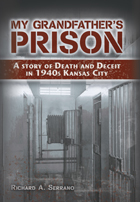 My Grandfather's Prison: A Story of Death and Deceit in 1940s Kansas City
Richard A. Serrano
University of Missouri Press, 2009 James Patrick Lyons abandoned his family for a life on Kansas City’s skid row. A town drunk, he was arrested eighty times for public intoxication. On the night of his last arrest, he was taken to the city jail and held in solitary confinement. The next morning he was dead. Officials said it was natural causes—yet they could not explain his broken neck. When Richard Serrano learned of the grandfather he had never known, the longtime journalist embarked upon a search that led him deep into the city’s wide-open and ignoble past. He stumbled upon his maternal grandfather’s death certificate from 1948 and discovered that the evidence pointed to murder in that basement cell. That revelation triggered a blizzard of questions for Serrano and provided the impetus for this engrossing story. Part memoir, part historical mystery, My Grandfather’s Prison takes readers back to a crossroads year for Kansas City. The Great Depression and World War II were over, yet vestiges still lingered from the corrupt Pendergast political machine. The city jail itself was a throwback to the old lockups and rock piles of popular fiction, while the sheriff’s office was dishonest and inept—and tried to cover up the death. Much has been written about Tom Pendergast and the iron hand with which he ruled Kansas City until his fall. Serrano’s personal journey into that time takes the story further into those crucial years when the city tried to shake off the yoke of machine politics and political corruption and step into a new era of reform. In his quest to uncover the details of his grandfather’s life, Serrano re-creates the flavor of mid-twentieth-century Kansas City. He shows us real-life characters who broaden our understanding of the city’s history: sheriffs and deputies, political bosses and coroners. And he also discovers a city filled with lost souls like James Lyons: the denizens of Kansas City’s skid row, a neglected area near the river bottom that once housed the city’s gilded community but now was home to derelicts and drunks. As Serrano gradually comes to terms with the darker side of his family history, he traces a parallel reconciliation of the city with its own sordid past. James Lyons died just as the old ways of the city were dying, and this spellbinding account shows how one town in one time struggled with its past to find a brighter future.
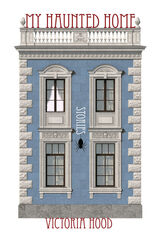 My Haunted Home: Stories
Victoria Hood
University of Alabama Press, 2022 Winner of FC2’s Ronald Sukenick Innovative Fiction Prize Meditations on the ways grief is felt and harvested—the funny, the sorrowful, the surreal, and the unmentionable The stories in My Haunted Home delve in startling ways into the lives of the obsessed, the grieving, and the truly haunted. Victoria Hood conjures a shifting range of narrators through an unstable range of worlds where mothers might be dead, girls compulsively shove peanuts inside their ears, agoraphobia traps people inside their houses, and cats won’t eat your soup. In “The Teeth, the Way I Smile,” a daughter who looks like her dead mother manifests grief both in her house and her body. In “Smelly Smelly,” a woman slowly comes to realize her boyfriend has been dead for weeks. In “You, Your Fault,” we explore the unfolding love of two women who love every part of each other—including the parts that fixate on arson and murder. Each story is a bite-size piece of haunting candy on a necklace of obsession holding them together. Hood probes the worlds of what can be haunted, unpacking the ways in which hauntings can be manifested in physical forms, mentally harvested and lived through, and even a change in what is haunting.
 My Heart Beats Fast: A Novel
Nadia Chonville; Translated from French by Corine Labridy
Vanderbilt University Press, 2026 Situated in contemporary Martinique, My Heart Beats Fast centers Kim, a young man accused of murdering his father, his sister’s partner, and her young son. The narration braids three temporalities: the present of the trial; the recent past of Kim’s youth shaped by Martinique’s entanglement with late‑stage capitalism and/as neocolonialism; and a longer duration that stretches back to slavery and the plantation, where Kim’s Antillean matrilineal origins have their roots. This nonlinear narrative makes generous use of analepses, as the spirits of the ancestors whisper visions and memories to Kim’s sister Edith, who attempts to understand what led her brother to commit such a horrific act. In addition to blending elements of realism and the marvelous, My Heart Beats Fast is written in a particularly poetic, urgent yet precise prose that has earned Nadia Chonville many accolades.
Chonville’s novel is at the vanguard of a new Antillean literature that moves beyond créolité (the last identifiable literary movement in the Antillean canon) in several important ways: First, although it does reflect on the past (as indeed prescribed by the créolistes), it is firmly anchored in the present, which Chonville, a trained social scientist, captures unflinchingly. Second, it complexifies the Antilles gender landscape with characters whose intersectional realities are explored with depth and care.
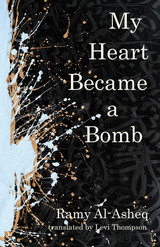 My Heart Became a Bomb
Poems by Ramy al-Asheq; translated by Levi Thompson
University of Texas Press, 2021 My Heart Became a Bomb is the first collection of poetry by Syrian-Palestinian poet Ramy al-Asheq to be translated into English. Poignant and raw, these poems take the reader along a path of forced emigration from Bashar al-Assad’s prisons in Syria to Amsterdam to Auschwitz to Berlin, Germany, where Al-Asheq is now creating a new home. By turns melancholy and reflective, celebratory and hopeful, Al-Asheq’s newly translated poems offer the English-reading audience a contemporary perspective on the experience of exile in a world facing the phenomeno of mass migration, whether for political or environmental reasons. The translations are the result of a long collaboration between Al-Asheq and Thompson (who also edited this collection). Raising questions about the nature of love, identity, and the role of poetry in the face of constant flux and great uncertainty, My Heart Became a Bomb introduces an important new voice to the world of contemporary poetry.
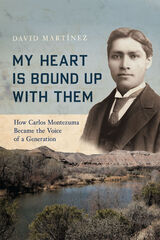 My Heart Is Bound Up with Them: How Carlos Montezuma Became the Voice of a Generation
David Martínez
University of Arizona Press, 2023 Carlos Montezuma is well known as an influential Indigenous figure of the turn of the twentieth century. While some believe he was largely interested only in enabling Indians to assimilate into mainstream white society, Montezuma’s image as a staunch assimilationist changes dramatically when viewed through the lens of his Yavapai relatives at Fort McDowell in Arizona.
Through his diligent research and transcription of the letters archived in the Carlos Montezuma Collection at Arizona State University Libraries, David Martínez offers a critical new perspective on Montezuma’s biography and legacy. During an attempt to force the Fort McDowell Yavapai community off of their traditional homelands north of Phoenix, the Yavapai community members and leaders wrote to Montezuma pleading for help. It was these letters and personal correspondence from his Yavapai cousins George and Charles Dickens, as well as Mike Burns that sparked Montezuma’s desperate but principled desire to liberate his Yavapai family and community—and all Indigenous people—from the clutches of an oppressive Indian Bureau.
Centering historically neglected Indigenous voices as his primary source material, Martínez elevates Montezuma’s correspondence and interactions with his family and their community and shows how it influenced his advocacy. Martínez argues that Montezuma’s work in Arizona directly contributed to his national projects. For his Yavapai community, Montezuma set an example as a resistance fighter and advocate on behalf of his people and other Indigenous groups. Martínez offers a critical exploration of history, memory, the formation of archival collections, and the art of writing biography.
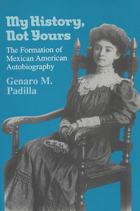 My History, Not Yours: The Formation of Mexican American Autobiography
Genaro M. Padilla
University of Wisconsin Press, 1994 "I am willing to relate all I can remember, but I wish it clearly understood that it must be in my own way, and at my own time. I will not be hurried or dictated to. It is my history and not yours I propose to tell.”—Mariano Guadelupe Vallejo, on “Recuerdos históricos y personales” (1875)
My History, Not Yours is a landmark study of the autobiographical writings of Mexican Americans in the century following the US-Mexican War of 1846-1848. Some 75,000 inhabitants of what is now Texas, New Mexico, Arizona, Nevada, and California were suddenly foreigners on their own lands. Faced with the deliberate obliteration of their history, culture, language, and personal experiences, these women and men set down the stories of their lives and their communities, as a means of both remembering and resisting.
Genaro M. Padilla and other scholars have begun to uncover the huge store of literary materials forgotten in manuscript archives: memoirs long out of print, others unpublished and unread, diaries, family histories, poetry, correspondence, and texts of corridos (ballads). Padilla writes, “Lives are scattered on broken pages, faded, partially lost at the margins, suspended in language unread until there is a reader who opens the file and begins. It is my intention to initiate a recovery of that autobiographical formation that emerged after a war of conquest.”
In providing an overview of this rich literature, Padilla also points out the power relations embedded in the narratives, showing that the reconstruction of the Mexican past was not merely nostalgic idealization, but often an angry and deeply politicized recovery of a world ruptured by American domination.
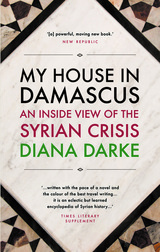 My House in Damascus: An Inside View of the Syrian Crisis
Diana Darke
Haus Publishing, 2014 How did Syria’s revolution reach this its current boiling point? And what’s next? This updated edition of My House in Damascus offers an insider’s view on these questions and the darker recesses of Syria’s history, politics, and society.
Diana Darke, a fluent Arabic speaker who moved to Damascus in 2004 after decades of regular visits, details how the Assad regime, and its relationship to the people, differs from the regimes in Egypt, Tunisia, and Libya—and why it was thus always less likely to collapse quickly, even in the face of widespread unrest and violence. Through the author’s firsthand experiences of buying and restoring a house in the old city of Damascus, which she later offered as a sanctuary to friends, Darke presents a clear picture of the realities of life on the ground and what hope there is for Syria’s future. Including additional material on topics like the advance of the Islamic State, as well as a new epilogue describing the current turmoil surrounding her house and the refugees she tried to help, this edition of My House in Damascus powerfully documents the human cost of the ongoing civil war.
My Immaculate Assassin
David Huddle
Tupelo Press, 2022 Maura Nelson, who has a sophisticated background in science, medicine, and programming, has stumbled upon a way to execute someone using only the computers in her home office—silently, anonymously, leaving no trace of violence, so that her target appears to have died of natural causes. Maura tests her method by eliminating Syrian tyrant Bashar al-Assad, but this experience affects her so deeply that she doesn’t want to continue alone. She entices Jack Plymouth into a partnership to rid the world of those they decide “need to be dead.” Both a steamy romance and a cyber-thriller, My Immaculate Assassin raises disturbing and timely questions about the technology and morality of “idealistic” murder, carried out remotely.
 My Iowa Journey
Philip G. Hubbard
University of Iowa Press, 1999
Philip Hubbard's life story begins in 1921 in Macon, a county seat in the Bible Belt of north central Missouri, whose history as a former slave state permeated the culture of his childhood. When he was four his mother moved her family 140 miles north to Des Moines in search of the greater educational opportunity that Iowa offered African American students. In this recounting of the effects of that journey on the rest of his life, Phil Hubbard merges his private and public life and career into an affectionate, powerful, and important story.
Hubbard graduated from the University of Iowa with a degree in electrical engineering in 1946; by 1954 he had received his Ph.D. in hydraulics. The College of Engineering extended a warm academic welcome, but nonacademic matters were totally different: Hubbard was ineligible for the housing and other amenities offered to white students. Intelligent, patient, keenly aware of discrimination yet willing to work from within the university system, he advanced from student to teacher to administrator, retiring in 1991 after decades of leadership in the classroom and the conference room.
Hubbard's major accomplishments included policies that focused on human rights; these policies transformed the makeup of students, faculty, and staff by seeking to eliminate discrimination based on race, religion, or other nonacademic factors and by substituting affirmative action for the traditional old-boy methods of selecting faculty and administrators. At the same time that he was advancing the cause of human rights and cultural diversity in education, his family was growing and thriving, and his descriptions of home life reveal one source of his strength and inspiration.
The decades that Hubbard covers were vital in the evolution of the nation and its educational institutions. His dedication to the agenda of public higher education has always been matched by his sensitivity to the negative effects of discrimination and his gentle perseverance toward his goals of inclusion, acceptance, and fairness. His vivid personal and institutional story will prove valuable at this critical juncture in America's racial history.
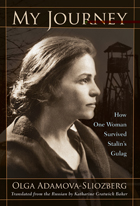 My Journey: How One Woman Survived Stalin's Gulag
Olga Adamova-Sliozberg
Northwestern University Press, 2011 This is the first English translation of Olga Adamova-Sliozberg’s mesmerizing My Journey, which was not officially published in Russia until 2002. It is among the best known of Gulag memoirs and was one of the first to become widely available in underground samizdat circulation. Alexander Solzhenitsyn relied heavily upon it when writing Gulag Archipelago, and it remains the best account of the daily life of women in the Soviet prison camps.
Arrested along with her husband (who, she would much later learn, was shot the next day) in the great purges of the thirties, Adamova-Sliozberg decided to record her Gulag experiences a year after her arrest, and she “wrote them down in her head” (paper and pencils were not available to prisoners) every night for years. When she returned to Moscow after the war in 1946, she composed the memoir on paper for the first time and then buried it in the garden of the family dacha. After her re-arrest and seven more years of banishment to Kazakhstan, she returned to the dacha to dig up the buried memoir, but could not find it. She sat down and wrote it all over again.
In her later years she also added a collection of stories about her family. Concluding on a hopeful note—Adamova-Sliozberg’s record is cleared, she re-marries a fellow former-prisoner, and she is reunited with her children—this story is a stunning account of perseverance in the face of injustice and unimaginable hardship. This vital primary source continues to fascinate anyone interesting in the tumultuous history of Russia and the Soviet Union in the twentieth century.
 My Kill Adore Him
Paul Martinez Pompa
University of Notre Dame Press, 2009
"Like the poet's native Chicago, even when violent or troubling, Paul Martinez Pompa's poems risk beauty. His work possesses a fluidity that appears both effortless and well earned. His is a Chicago Renaissance of one--Gwendolyn Brooks's Bronzeville and Carl Sandburg's 'city of big shoulders' becoming a 'city of broken lovers' and 'an entire city in your ears' in Martinez Pompa's capable hands. Playful and political and passionate, the poems in My Kill Adore Him mark an important debut, one you'll surely adore." --Kevin Young, author of Dear Darkness and For the Confederate Dead
"This is an important book if we care about the lives of men, day-laborers, immigrants, factory workers and those on the urban fringe who don't get a fair shake. And this is an important book if we don't. Paul Martinez Pompa knows how to write; these poems vividly evoke people and lives that urge us toward awareness and honesty and compassion. Poetry can do no better than this." --Valerie Martinez, author of Each and Her and Absence, Luminescent.
"Paul Martinez Pompa deconstructs with a deft sword. Straddling literary strategies, no supposition nor paradigm is safe. He slays the stereotypic dragons within as well as without, putting popular culture, elegy, nightmare, personal narrative, identity and gender politics in the same hat, and drawing from the source, Pompa plays a poetic hand for keeps. Every turn of trope is more delightful than the last--a breakaway collection from an exciting new writer." --Lorna Dee Cervantes, author of Drive: The First Quartet
"This is one tough, smart poet. The poems of Paul Martinez Pompa are gritty and visceral, but never cross the line into sensationalism. They are poems that vividly evoke the urban world, especially Chicago, without ever lapsing into urban cliche. They are poems that seek justice for the Latino community without ever resorting to the overheated language that all too often consigns poetry of social conscience to oblivion." --Martin Espada, 2008 Andres Montoya Poetry Prize judge
My Kill Adore Him is a collection of poems from Andres Montoya Poetry Prize-winner Paul Martinez Pompa. With a unique, independent voice, Martinez Pompa interrogates masculinity, race, language, consumerism, and cultural identity in poems that honor los olvidados, the forgotten ones, who range from the usual suspects brutalized by police to factory workers poisoned by their environment, from the victim of a homophobic beating in the boys' bathroom to the body of Juan Doe at the Cook County Coroner's Office. Some of the poems rely on somber, at times brutal, imagery to articulate a political stance while others use sarcasm and irony to deconstruct political stances themselves.
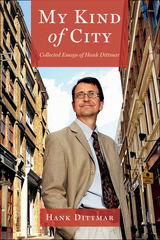 My Kind of City: Collected Essays of Hank Dittmar
Hank Dittmar
Island Press, 2019 "Hank lived by the credo 'first listen, then design.'"
—Scott Bernstein, Founder and Chief Strategy + Innovation Officer, Center for Neighborhood Technology
Hank Dittmar was a globally recognized urban planner, advocate, and policy advisor. He wrote extensively on a wide range of topics, including architectural criticism, community planning, and transportation policy over his long and storied career.
In My Kind of City, Dittmar has organized his selected writings into ten sections with original introductions. His observations range on scale from local ("My Favorite Street: Seven Dials, Covent Garden, London") to national ("Post Truth Architecture in the Age of Trump") and global ("Architects are Critical to Adapting our Cities to Climate Change"). Andrés Duany writes of Hank in the book foreword, "He has continued to search for ways to engage place, community and history in order to avoid the tempting formalism of plans."
The range of topics covered in My Kind of City reflects the breadth of Dittmar's experience in working for better cities for people. Common themes emerge in the engaging prose including Dittmar's belief that improving our cities should not be left to the "experts"; his appreciation for the beautiful and the messy; and his rare combination of deep expertise and modesty. As Lynn Richards, CEO of Congress for the New Urbanism expresses in the preface, "Hank's writing is smart without being elitist, witty and poetic, succinct and often surprising."
My Kind of City captures a visionary planner's spirit, eye for beauty, and love for the places where we live.
|
|
